Category: G3 – Policies
Anti-Lynching Bills Passed by Four States Hanging fire
16, Feb 2022
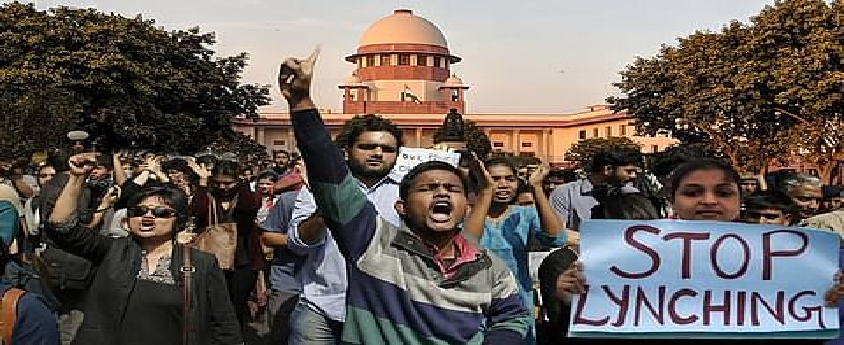
Why in News?
- Bills passed against mob lynching in the past four years by at least three States ruled by BJP Rivals and one Governed by the party itself have not been implemented with the Union Government taking a view that Lynching is not defined as a crime under the Indian Penal Code (IPC).
About Mob Lynching:
- The Manipur Law defined mob lynching as “any act or series of acts of violence or aiding, abetting such act/acts thereof, whether spontaneous or planned, by a mob on the grounds of religion, race, caste, sex, place of birth, language, dietary practices, sexual orientation, political affiliation, ethnicity or any other related grounds.”
- In 2018, the Supreme Court had also issued guidelines to curb lynching.
- The West Bengal (Prevention of Lynching) Bill, 2019 provides for three years to life imprisonment to those injuring a person and capital punishment or rigorous life imprisonment for those causing death.
- Manipur was the first state to pass a law against Lynching. Recently, Jharkhand and previously Rajasthan have also passed an anti-lynching bill.
What was the Supreme Court’s Guidelines on Preventing Mob Lynching?
- The state governments shall designate a senior police officer in each district for taking measures to prevent incidents of mob violence and lynching.
- The state governments shall immediately identify districts, sub-divisions and villages where instances of lynching and mob violence have been reported in the recent past.
- The Nodal Officers shall bring to the notice of the Director General of Police (DGP) any inter-district co-ordination issues for devising a strategy to tackle lynching and mob violence-related issues.
- It shall be the duty of every police officer to cause a mob to disperse, which, in his opinion, has a tendency to cause violence in the disguise of vigilantism or otherwise.
- The Central and the state governments should broadcast on radio and television and other media platforms including the official websites that lynching and mob violence of any kind shall invite serious consequence under the law.
- Curb and stop the dissemination of irresponsible and explosive messages, videos and other material on various social media platforms which have a tendency to incite mob violence. Register FIR under relevant provisions of law against persons who disseminate such messages.
- State governments shall prepare a lynching/mob violence victim compensation scheme.
- Ensure that there is no further harassment of the family members of the victims.
- If a police officer or an officer of the district administration fails to do his/her duty, the same will be considered as an act of deliberate negligence for which an appropriate action must be taken against him/her.
Way Forward:
- Lynching has become a social menace all across India; therefore the centre should come with the law to deal with it. The law should incorporate the following provisions:
- It should be applicable to all hate crimes, not just lynching (for example honour killing), regardless of the numbers of persons who participate.
- Since the essence of what distinguishes these kinds of crimes is not the numbers of attackers but the motivation of hate behind the crimes, therefore, the law should provision dealing with solitary hate crimes.
- The law needs to prescribe a much more expansive framework of mandatory gender-Sensitive Reparation.
- The law should Incorporate penal action against doctors who stand accused of dereliction of duty, for the delay in attending to victims of lynching.
- Under the Compensation scheme for the victims, the amount should be recovered from the perpetrators of the Crime.
MHA Recommends Ban on 54 Chinese Apps Citing Security Concerns
15, Feb 2022

Why in News?
- The Centre recently banned over 50 new Chinese mobile applications, including Rise of Kingdoms: Lost Crusade, Tencent Xriver, Nice Video baidu and Viva Video Editor, due to concerns related to privacy and National Security.
About the News:
- The Ministry of Electronics and Information Technology has issued interim directions for blocking 54 apps, adding that these applications were allegedly collecting sensitive user data, which were being misused and transmitted to servers located outside India.
- The list of banned mobile apps include Beauty Camera: Sweet Selfie HD, Beauty Camera – Selfie Camera, Garena Free Fire – Illuminate, Astracraft, FancyU pro, MoonChat, Barcode Scanner – QR Code Scan, and Lica Cam.
- The government had last year banned over 200 Chinese mobile applications, including popular ones such as TikTok, Shareit, Mi Video Call, Club Factory and Cam Scanner, citing threat to national security and sovereignty
- The announcement had come amid border tensions between India and China in Ladakh.
- The move came in the backdrop of India’s ongoing stand-off along the Line of Actual Control (LAC) in Ladakh with China. The stand-off has been going on since April 2020.
- India shares a 3,400 km-long LAC with China from Ladakh to Arunachal Pradesh.
Why ban Imposed?
- The Ministry said it was invoking its power under Section 69A of the Information Technology Act read with the relevant provisions of the Information Technology (Procedure and Safeguards for Blocking of Access of Information by Public) Rules, 2009.
- In view of the emergent nature of threats, the government has decided to block these apps as they are engaged in activities which are prejudicial to sovereignty and integrity of India, defence of India, security of state and Public Order.
What does the Section 69A says?
- Section 69A of the Information Technology Act Empowers Central Government to:
- Issue directions to block the content on online platforms in the interest of sovereignty and integrity of India, defence of India, security of the State, friendly relations with foreign States or public order or for preventing incitement to the commission of any Cognizable Offence.
- Intermediaries Failing to comply with the direction issued could be punished with Imprisonment for a Term which may extend to seven years and shall also be liable to Fine.
India bans import of drones
12, Feb 2022

Why in News?
- The Government has banned the import of Drones with immediate effect, except for Research and Development, Defence and Security Purposes.
Highlights:
- The move aims to promote made in India drones.
- The Directorate General of Foreign Trade of the Ministry of Commerce and Industry has notified the Indian Trade Classification (Harmonised System), 2022 in this regard.
- Exceptions are provided for R&D, defence and security, importing drones for these purposes which will require “due clearances”.
- However, import of drone Components will not Require Any Approvals.
Boost to Drones Industry in India:
- Last year, the Ministry notified liberalised drone rules that abolished a slew of approvals with the aim to Encourage R&D and creating India as a drone hub.
- The Government also approved a Production-Linked Incentive (PLI) scheme for drones and their components with an allocation of ₹120 crore for three financial years.
- Last month, the Ministry of Civil Aviation (MoCA) has sent a note on use of drones across various sectors to different ministries at the centre.
Where all can Drones be Effectively Utilised?
- Ministry of Home Affairs: For surveillance, situational analysis, crime control, VVIP security, disaster management, etc.
- Ministry of Defence: Drones for combat, communication in remote areas, counter-drone solutions, etc.
- Ministry of Health and Family Welfare: Delivery of medicines, collection of samples from remote or Epidemic/Pandemic-affected areas.
- The Petroleum and Natural Gas, and Power Ministries: For real-time surveillance of assets and transmission lines, theft prevention, visual inspection/maintenance, construction planning and management, etc. Environment, Forests and Climate Change Ministry: Anti-poaching actions, monitoring of forests and wildlife, pollution assessment, and evidence gathering.
- Ministry of Information and Broadcasting: For high-quality videography of events and difficult-to-reach-places at a fraction of the cost and approvals required. This move would also facilitate low altitude shooting without noise, and prevent dust pollution and risk of accidents.
- Other areas: To undertake disaster management, incidence response, inspection/maintenance works and project monitoring.
Significance:
- Drones offer a tremendous benefits to almost every sector of the economy, including but not limited to, national defence, agriculture, law enforcement, and mapping, among others.
Drone Management in India:
- The Union government had on September 15 approved a production-linked incentive (PLI) scheme for drones and drone components with an allocation of Rs 120 crore spread over three financial years.
- The ministry had on August 25 notified the Drone Rules, 2021 that eased the regulation of drone operations in India by reducing the number of forms that need to be filled to operate them from 25 to five and decreasing the types of fees charged from the operator from 72 to four.
Need for Stricter Rules and Regulations:
- In 2021, Drones were used for the first time to drop explosive devices, triggering blasts inside the Air Force Station’s technical area in Jammu.
- Over the past two years, drones have been deployed regularly by Pakistan-based outfits to smuggle arms, ammunition and drugs into Indian territory.
- According to government figures, 167 drone sightings were recorded along the border with Pakistan in 2019, and in 2020, there were 77 such sightings.
- With the rapid proliferation of Drone Technology and exponential growth of its global market in recent years, the possibility of a drone attack cannot be ruled out even in the safest cities in the world.
- Drones are becoming security threats Particularly in conflict zones where non-state actors are active and have easy access to the Technology.
Imposition of Death Penalty
11, Feb 2022

Why in News?
- The Supreme Court has made the following Suggestions on the applicability and imposition of death Penalty in its recent Judgment.
What has the Supreme Court said?
- Trial judges should not be swayed in favour of death penalty merely because of the dreadful nature of the crime and its harmful impact on the society. They should equally consider the mitigating factors in favour of life imprisonment.
- The judgment referred to the evolution of the principles of penology. Though capital punishment serves as a deterrent and a “response to the society’s call for appropriate punishment in appropriate cases”, the principles of penology have “evolved to balance the other obligations of the society, i.e., of preserving the human life, be it of accused, unless termination thereof is inevitable and is to serve the other societal causes and collective conscience of society”.
How should the Courts decide on Capital Punishment Impositions?
- In the case of Bachan Singh (1980), the Supreme Court formulated a sentencing framework to be followed for imposing death penalty.
- It required the weighing of aggravating and mitigating circumstances relating to both the circumstances of the offence and the offender, to decide whether a person should be sentenced to death or given life imprisonment.
- According to the Bachan Singh judgment, for a case to be eligible for the death sentence, the aggravating circumstances must outweigh the mitigating circumstances.
What is Collective Conscience?
- Collective consciousness (sometimes collective conscience or conscious) is a fundamental sociological concept that refers to the set of shared beliefs, ideas, attitudes, and knowledge that are common to a Social Group or Society.
Evolution of Collective Conscience:
- ‘Collective conscience of society’ as a ground to justify death penalty was first used by the Supreme Court in the 1983 judgment of Machhi Singh v. State of Punjab. In that case, the court held that when “collective conscience of society is shocked, it will expect the holders of the judicial power centre to inflict death penalty”.
- It was, however, most famously used by the top court in its 2005 judgment in the Parliament attack case in which it awarded capital punishment to convict, Afzal Guru.
- Collective conscience found its most recent endorsement in the 2017 judgment of the Supreme Court in the December 2012 Delhi gang rape case of Mukesh v. State of NCT of Delhi.
Concerns:
- Can the courts allow any kind of public outcry, sense of conscience, sentiment or feeling to even remotely influence their decisions, especially when it is a case of the death sentence? This is even more relevant in the times that we live in, when television and social media bombard us, creating and determining opinion.
Need of the Hour:
- Our Constitution is based on the principle of Justice for the most marginalised, disfranchised, oppressed, unknown, unseen and Ignored. This spirit demands that law cannot rely on or be influenced by any Delusionary sense or mood of the people. We need in judges a liberal energy and the ability to be Creative Human Beings.
Recommendations by Law Commission:
- The Law Commission in 2015, headed by Justice A P Shah proposed to abolish capital punishments. However, the commission had made the proposal only to non-terrorism cases.
- According to the commission, India is one among few countries that still carry out executions. The other countries that practice executions include Iran, Iraq, Saudi Arabia, China. By the end of 2014, 98 countries had abolished death penalty.
Haryana’s Anti Conversion Bill
09, Feb 2022

Why in News?
- After several other states, including Uttar Pradesh, Karnataka, Himachal Pradesh, and Madhya Pradesh, the Government in Haryana is set to enact legislation to prevent unlawful Religious Conversions.
About the News:
- The Haryana Prevention of Unlawful Conversion of Religious Bill, 2022 will be tabled in the Assembly’s budget session next month.
- It is likely to be passed, considering the BJP-JJP coalition has a comfortable majority in the 90-member House.
Why is the Government Bringing this Bill?
- According to the government and officials, many incidents of alleged “love jihad” have been reported in Haryana over the past few months, especially in the southern parts of the state.
- “Love jihad” is an expression used to refer the alleged attempts by Muslim men to force Hindu women to change their faith, frequently through allurement, promise of Marriage or Coercion.
- The Government has told Parliament that “the term ‘love jihad’ is not defined under the Extant Laws”, and the anti-conversion legislation in the states do not use the expression. But it is still used freely in Political Conversations and Speeches.
What is the progress on the Proposed Law so far, and What Happens Now?
- As a first step, a draft of the proposed Bill was approved by the Haryana Cabinet recently. The Bill will be tabled in the Vidhan Sabha when it meets in the Budget Session that commences on March 2.
- Once the Bill is passed and receives the assent of the Governor, it will be notified in the gazette and will become law.
What does the draft Bill Cleared by the Cabinet propose?
- The draft Bill seeks to “Prohibit Religious conversions which are effected through misrepresentation, force, undue influence, coercion, allurement or by any fraudulent means or by marriage or for Marriage by making it an Offence”.
What are the Objectives?
- The statement of Objectives and reasons in the Draft Bill says: “The individual right to freedom of conscience and religion cannot be extended to construe a collective right to proselytize; for the right to religious freedom belongs equally to the person converting and the individual sought to be Converted. Still, there have been umpteen cases of religious conversions, both mass and Individual.
- The draft Bill also suggests that incidents of so-called “love jihad” are increasing. It says in recent past several instances came to the notice that with an agenda to increase strength of their own religion by getting people from other religions converted, people marry persons of other religion by either misrepresentation or concealment of their own religion and after getting married they force such other person to convert to their own religion.
- The draft Bill proposes “greater punishment for such conversion in respect of the Minor, Women, Scheduled Castes and the Scheduled Tribes”.
How will it be Established that a Conversion is Unlawful under the Proposed law?
- According to the draft Bill, the burden of proof — as to whether a conversion was not effected through misrepresentation, use of force, under threat, undue influence, coercion, allurement, or by any fraudulent means, or by marriage, or for marriage for the purpose of carrying out conversion — shall be on the accused.
- Every individual converting from one religion to another shall submit to the prescribed authority a declaration that the conversion not effected through any of the unlawful means mentioned above. The designated authority shall make an inquiry in all such cases.
- The proposed Bill will also have a provision for declaring null and void any marriage that is found to have been solemnised by concealment of religion.
What do Critics Say?
- Such laws have come under sharp criticism from several legal scholars who had contended that the concept of ‘love jihad’ did not have any constitutional or legal basis.
- They have pointed to Article 21 of the constitution which guarantees individuals the right to marry a person of one’s choice.
- Also, under Article 25, freedom of conscience, the practice and conversion of religion of one’s choice Including not following any religion, are also Guaranteed.
Supreme Court on Marriage and Conversion:
- The Apex Court of India in its several judgments has held that the state and the courts have no jurisdiction over an adult’s absolute right to choose a life partner.
- The Supreme Court of India, in both the Lily Thomas and Sarla Mudgal cases, has confirmed that religious conversions carried out without a bona fide belief and for the sole purpose of deriving some legal benefit do not hold water.
- Salamat Ansari-Priyanka Kharwar case of Allahabad High Court 2020: The right to choose a partner or live with a person of choice was part of a citizen’s fundamental right to life and liberty (Article 21).
Need of the Hour:
- There is a need for uniformity: Article 18 of the Universal Declaration on Human Rights mentions everyone has the right to freedom of religion including changing their faith. Since it is a state subject, the Centre can frame a model law like Model law on contract Farming etc.
- States while enacting anti-conversion laws should not put any vague or ambiguous provisions for the person who wanted to convert of his own will.
- The anti-conversion laws also need to include a provision to mention the valid steps for Conversion by minority Community Institutions.
- People also need to be educated about the provisions and ways of Forceful conversions, Inducement or Allurement, etc.
Agatha Sangma Demands Repeal of AFSPA
05, Feb 2022

Why in News?
- National People’s Party (NPP) MP Agatha Sangma demanded repeal of the Armed Forces Special Powers Act (AFSPA) in the Lok Sabha recently, citing the example of the incident in Mon, in Nagaland, where 14 people died due to firing by the Army on a vehicle Carrying Miners.
About the News:
- Speaking during the Motion of Thanks to the President for his address to both Houses of Parliament, Ms. Sangma repeated the demand she had raised during the Winter Session of Parliament last year.
What is the Issue?
- MHA said the area comprising the whole of Nagaland is in such a “disturbed and dangerous condition” that the use of armed forces in aid of the civil power is necessary.
- But, Nagaland is continuously criticising the Centre for extending the “disturbed area” tag on Nagaland every year to prolong the AFSPA despite a ceasefire agreement for almost 25 years.
What does the AFSPA Mean?
- In simple terms, AFSPA gives armed forces the power to maintain public order in “disturbed areas”.
Powers given to Armed Forces:
- They have the authority to prohibit a gathering of five or more persons in an area, can use force or even open fire after giving due warning if they feel a person is in contravention of the law.
- If reasonable suspicion exists, the army can also arrest a person without a warrant; enter or search Premises without a warrant; and ban the Possession of firearms.
- Any person arrested or taken into custody may be handed over to the officer in charge of the nearest police station along with a report detailing the Circumstances that led to the Arrest.
What is a “Disturbed Area” and who has the power to declare it?
- A disturbed area is one which is declared by notification under Section 3 of the AFSPA. An area can be disturbed due to differences or disputes between members of different religious, racial, language or regional groups or castes or communities.
- The Central Government or the Governor of the State or administrator of the Union Territory can declare the whole or part of the State or Union Territory as a disturbed area.
Has there been Any Review of the Act?
- On November 19, 2004, the Central government appointed a five-member committee headed by Justice B P Jeevan Reddy to review the provisions of the act in the north eastern states.
- The committee submitted its report in 2005, which included the following recommendations: (a) AFSPA should be repealed and appropriate provisions should be inserted in the Unlawful Activities (Prevention) Act, 1967; (b) The Unlawful Activities Act should be modified to clearly specify the powers of the armed forces and paramilitary forces and (c) grievance cells should be set up in each district where the armed forces are deployed.
- The 5th report of the Second Administrative Reforms Commission on public order has also recommended the repeal of the AFSPA.
Governor returns NEET Bill to Assembly
04, Feb 2022
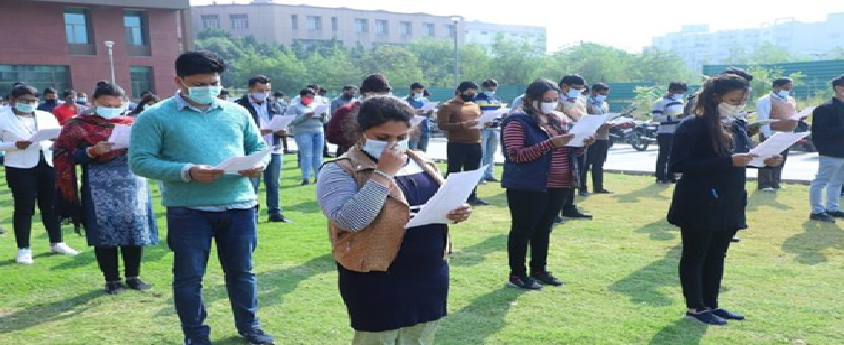
Why in News?
- Tamil Nadu Governor R.N. Ravi has returned to the Assembly Speaker a Bill seeking to dispense with NEET-based admissions for undergraduate medical degree courses.
About the News:
- The Bill adopted by the Assembly in September sought to admit students to UG medical degree programmes on the basis of Plus Two scores.
- After a detailed study of the Bill that sought an exemption for the State from NEET and the report of the high-level committee constituted by the State government in this regard, the Governor was of the opinion that the Bill is against interests of the students specially the rural and Economically poor students of the State.
- Hence, the Governor has returned the Bill to the Speaker of the Tamil Nadu Legislative Assembly, giving detailed reasons, for its re-consideration by the House.
Veto Over State Bills:
- The governor is empowered to reserve certain types of bills passed by the state legislature for the consideration of the President. Then, the Governor will not have any further role in the enactment of the bill.
- The President can withhold his assent to such bills not only in the first instance but also in the second instance.
- Thus, the President Enjoys absolute veto (and not suspensive veto) over state bills.
- Further, the President can Exercise Pocket veto in respect of state Legislation also.
What was TN Government’s Argument?
- The Bill, moved by Chief Minister M.K. Stalin, contended that admission to medical courses was traceable to entry 25 of List III, Schedule VII of the Constitution, and the State was “competent to regulate” the same for the underprivileged social groups.
- NEET festers inequality as it favours the rich and the more privileged class of society, who are able to afford special coaching apart from pursuing Class XII. It virtually barricades the underprivileged social groups from medical and dental education.
- It also argued that NEET was against the equality clause enshrined in the Constitution.
- After the UG course, students from the affluent class do not serve in rural areas, and often pursue postgraduate courses abroad, adding that the number of serving doctors in the State was declining.
- The standard of medical education is maintained during the UG course by following the syllabus and curriculum prescribed by the National Medical Commission and through exams conducted by the university before awarding the degree.
- Students who are not able to pass the university exams are not awarded degrees. Therefore, it is not during the admission stage that the standard of medical education is maintained.
- The Bill said its aim was to ensure social justice, uphold equality and equal opportunity, protect all vulnerable student communities from discrimination and bring them into the mainstream of medical and dental education and, in turn, ensure robust public healthcare across Tamil Nadu, particularly in the rural areas.
What did A.K. Rajan Committee Reported?
- The government’s decision followed a report from a high-level committee, headed by the retired High Court judge, Justice A.K. Rajan, which said NEET had “clearly undermined” the diverse societal representation in MBBS and higher medical studies, favouring mainly the affluent segment of society, while thwarting the dream of the underprivileged social groups to pursue medical education.
- The panel concluded that if NEET continued for a few more years, the healthcare system of Tamil Nadu would be “very badly affected, and there may not be enough doctors” to be posted at Primary Health Centres or Government hospitals, and the rural and urban poor may not be able to join the Medical Courses.
- It was in favour of immediate steps to eliminate NEET from being used in admission to medical programmes “at all levels”.
- It further contended that NEET was not a fair or equitable method of admission, since it ‘favoured’ the rich and elite sections of society. The most affected groups were the students of Tamil medium; students having a rural background; those from government schools; those whose parental income was less than ₹5 lakh per annum; and socially disadvantaged groups like the Most Backward Classes (MBCs), the Scheduled Castes (SCs) and the Scheduled Tribes (STs).
- Based on the report, the State government decided that admission to undergraduate courses in medicine, dentistry, Indian medicine and homoeopathy in the State shall be made only based on the marks obtained in the qualifying examination (Plus-Two).
Can a state Negate Central Laws?
- Article 254(2) refers to a scenario where a law made by a state legislature concerning any matter that falls in the Concurrent List contains any provision repugnant to the provisions of an earlier law made by Parliament or an existing law, with respect to that matter.
- In such a case, the law made by the state legislature will prevail, provided it is reserved for the consideration of the President of India and Receives his assent.
How can States use this Provision?
- This provision gives flexibility to a state legislature to make a law different from what is applicable in that state due to a Parliamentary law already in operation there.
- This flexibility is only available on matters that are in the concurrent list to Schedule 7 of the Constitution. Under that list both the Parliament and the state legislatures could legislate — subject to the rule that the parliamentary law will prevail over a state law.
What all is covered under concurrent list?
- The concurrent list provides a rich set of topics for the states to take a lead in reform. It covers areas such as criminal law and procedure, marriage, divorce and adoption, bankruptcy and insolvency, social security, education (including technical and medical education) and electricity.
- Agriculture’ has been placed as Entry 14 in the State List along with several ancillary matters, while some agriculture-related items have been included in the Union List and the Concurrent List.
Will this Provision help the States?
- Though states could come out with their own Bills to some extent to override the statutes of passed by the Parliament, none of those Bills would be effective unless the President accords his consent to such Bills.
What Happens if President does not give consent?
- According to legal experts, it’s the sole prerogative of the President whether to sign the state Bills or not. It’s a rare circumstance, wherein a state Bill is accepted by the President without the Centre on board.
- In case, the Centre is opposing the Bill, then the President, who works on the aid and advice of the Council of Ministers, can refuse to give his consent.
Can states approach the Supreme Court Challenging the Central Law?
- States can approach the Supreme Court under Article 131 — invoking the court’s “original jurisdiction” — that allows a state to file a suit in the Supreme Court in case of any dispute that it may have with the central government.
- Article 131 could be used to Examine the Constitutionality of a statute.
Fortified Rice supply in Govt. Schools raised
01, Feb 2022
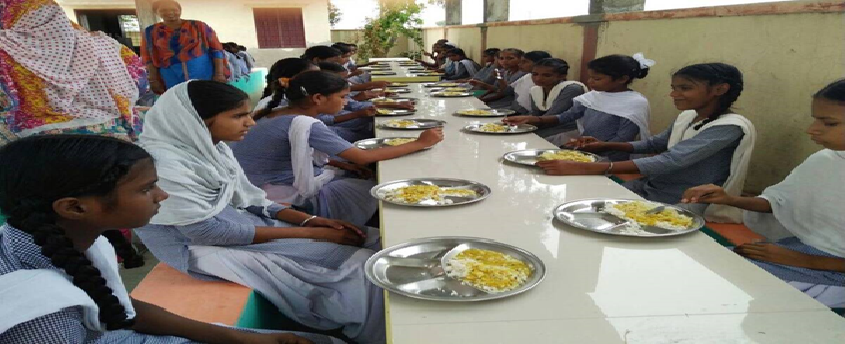
Why in News?
- According to the Economic Survey released recently, the Centre has distributed 3.38 lakh Metric Tonnes of Fortified Rice till December 2021 through anganwadis and mid-day meals at Government Schools.
About the News:
- In 2019, the government approved a Centrally sponsored pilot scheme for fortification of rice for a period of three years beginning 2019-2020.
- The scheme is being implemented in 15 districts across as many States.
- Last year, during his Independence Day speech, Prime Minister Narendra Modi announced that by 2024 rice made available under every government programme will be fortified to fight malnutrition.
- The Economic Survey states that the government ramped up distribution of fortified rice last year across anganwadis under the Integrated Child Development Scheme (now rechristened Saksham anganwadi and Poshan 2.0) as well as mid-day meal scheme implemented at schools (renamed as PM Poshan).
- The Government has started distributing fortified rice under the Integrated Child Development Scheme and PM Poshan schemes across the country during 2021-22 in an effort to scale up the distribution of fortified rice in the country to fight malnutrition and micronutrient deficiencies among pregnant women, lactating mothers, children etc.
- According to FSSAI, rice will be fortified with iron, folic acid, Vitamin B-1,B-2,B-3, B-6 and B-12, zinc, Vitamin A.
Need for Rice Fortification:
- The country has high levels of malnutrition among women and children.
- According to the Food Ministry, every second woman in the country is anaemic and every third child is stunted.
- India ranks 94 out of 107 countries and is in the ‘serious hunger’ category on the Global Hunger Index (GHI).
- Malnutrition and lack of essential nutrients in poor women and poor children poses major Obstacles in their Development.
What is Food Fortification?
- Food fortification is defined as the practice of adding vitamins and minerals to commonly consumed foods during processing to increase their nutritional value.
- It is a proven, safe and cost-effective strategy for improving diets and for the prevention and control of micronutrient deficiencies.
- The Food Safety and Standards Authority of India (FSSAI), defines fortification as “deliberately increasing the content of essential micronutrients in a food so as to improve the nutritional quality of food and to provide public health benefit with minimal risk to Health”.
Fortified Rice:
- According to the Food Ministry, fortification of rice is a cost-effective and complementary strategy to increase vitamin and mineral content in diets.
- According to FSSAI norms, 1 kg fortified rice will contain iron (28 mg-42.5 mg), folic acid (75-125 microgram) and Vitamin B-12 (0.75-1.25 microgram).
- In addition, rice may also be fortified with micronutrients, singly or in combination, with zinc (10 mg-15 mg), Vitamin A (500-750 microgram RE), Vitamin B1 (1 mg-1.5 mg), Vitamin B2 (1.25 mg-1.75 mg), Vitamin B3 (12.5 mg-20 mg) and Vitamin B6 (1.5 mg-2.5 mg) per kg.
What are the benefits of Fortification?
- Since the nutrients are added to staple foods that are widely consumed, this is an excellent method to improve the health of a large section of the population, all at once.
- Fortification is a safe method of improving nutrition among people. The addition of micronutrients to food does not pose a health risk to people.
- It does not require any changes in food habits and patterns of people. It is a socio-culturally acceptable way to deliver nutrients to people.
- It does not alter the characteristics of the food—the taste, the feel, the look.
- It can be implemented quickly as well as show results in improvement of health in a relatively short period of time.
- This method is cost-effective especially if advantage is taken of the existing technology and Delivery Platforms.
Government Response Awaited on law on inter-faith Marriages
19, Jan 2022
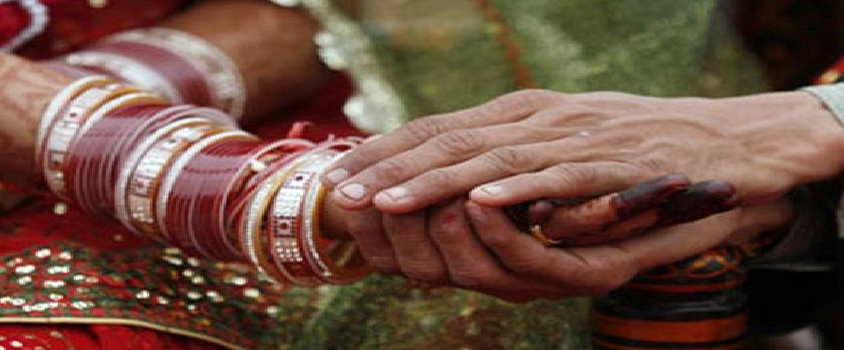
Why in News?
- The law that governs inter-faith marriages in the country, the Special Marriage Act (SMA), 1954, is being challenged for endangering the lives of young couples who seek refuge under it.
About the News:
- More than a year after a writ petition was moved before the Supreme Court, seeking striking down of several of its provisions, the government is yet to submit its response.
- The petition has sought to quash section 6 and 7 of SMA, which mandates publication of the public notice, on the ground that it is unreasonable and arbitrary.
- The petitioner argues that the 30-day period offers an opportunity to kin of the couple to Discourage an inter-caste or Inter-Religion Marriage.
What are Interfaith Marriages?
- The matrimonial relationship developed between two individuals having different religious faiths. Although marrying into a different religion is a matter of choice of an adult, there are certain issues Regarding the same.
Issues with Interfaith Marriages:
- Interfaith marriages are believed to be a forced conversion of one of the spouses (mostly women).
- As per the Muslim Personal law, in order to get married to a non-Muslim, conversion of religion is the only way.
- Hindu religion allows only monogamy and those who want to marry second time take another course.
- There is no provision regarding caste determination of children born out of such marriages.
- The Special Marriage Act, 1954 is not compatible with backwardness of the society.
- There is debate over the validity of Article 226 in context of annulling the interfaith marriage by High Court.
About the Special Marriage Act:
- The Special Marriage Act is a special law enacted to provide for a unique form of marriage by registration wherein the parties to the marriage do not have to renounce their religion.
- This Act includes Hindus, Muslims, Christians, Sikhs, Jains, and Buddhists marriages.
- This act applies to all Indian states, except Jammu & Kashmir.
- This Act applies not only to Indian citizens who belong to different castes and religions but also to Indian nationals who live abroad.
Requirements for the Special Marriage:
- The Fundamental Requirement under this Act for a valid marriage is the consent of both parties to the Marriage.
- If both parties to the marriage are willing to marry each other, that’s enough; caste, religion, race, etc. is not a Restriction.
Conditions for Marriage:
- The bridegroom must be at least 21, and at the time of the marriage, the bride must be at least 18 years of age. This is the minimum age limit respectively for a boy/girl to marry.
- At the time of their Marriage, both parties must be monogamous; i.e., they must be unmarried and at that time should not have any living spouse.
- In order to be able to decide for themselves, the parties should be mentally fit, i.e., they must be sane at the time of Marriage.
Challenges with Contemplating Laws for Interfaith Marriage:
- Contemplating laws to regulate matrimonial relationships between two consenting adults would not be just against the constitutional guarantees but would offend the very notion of individuality and basic freedoms.
- Interference of the law in an individual’s choice of marriage violates the existing constitutional rights such as the Right to equality, Right to Freedom & Personal Liberty, Freedom of Religion and Right to Life.
- Article 21: It declares that no person shall be deprived of his life or personal liberty except according to the procedure established by law. This right is available to both Citizens and Non-Citizens.
- Article 25 of the Indian constitution provides the freedom to practice any religion of one’s choice and Personal Laws of the religions have specified various laws relating to marriage for the followers of that religion. Hence, in India inter-faith marriages are allowed as the constitution allows one to convert to a different religion from what one was born with and further the personal laws of the religion have provisions.
Way Forward:
- In order to avoid inclusion of any further laws, there should be acceptance of the special marriage act, 1954 at the mental and social level.
- The rights should not be exploited; conversion of religion for marriage only is not at all wise.
- The marriage of two adults is a complete matter of their own choice, neither a law is to impose any decision, nor any individual. The Freedom of decision of his/ her marriage shall lie with the person only. The Need is to Accept the fact.
Use Drones more Effectively, says Civil Aviation Ministry
08, Jan 2022

Why in News?
- In a nationwide programme to take the third eye to the sky, the Ministry of Civil Aviation (MoCA) has called for more effective utilisation of drone applications and urged the Ministry of Home Affairs to deploy unmanned aerial vehicles for surveillance, situational Analysis, Crime Control, VVIP security, Disaster Management, etc.
What is a Drone?
- Drone is a layman terminology for Unmanned Aircraft (UA). There are three subsets of Unmanned Aircraft- Remotely Piloted Aircraft, Autonomous Aircraft and Model Aircraft.
- Remotely Piloted Aircraft consists of remote pilot station(s), the required command and control links and any other components, as specified in the type design.
- Besides combat use, drones are used for a range of purposes like package delivery, in agriculture (spraying pesticides etc), Monitoring Environmental changes, aerial Photography, and during search and relief Operations, among others.
Key Changes brought in the Drone Rules, 2021:
- Digital sky platform shall be developed as a business-friendly single-window online system.
- No flight permission required upto 400 feet in green zones and upto 200 feet in the area between 8 and 12 km from the airport perimeter.
- No pilot licence required for micro drones (for non-commercial use), nano drone and for R&D organisations.
- No restriction on drone operations by foreign-owned companies registered in India.
- Import of drones and drone components to be regulated by DGFT.
- No security clearance required before any registration or Licence Issuance.
- No requirement of certificate of Airworthiness, Unique Identification Number, Prior Permission and remote pilot licence for R&D entities.
- Coverage of drones under Drone Rules, 2021 increased from 300 kg to 500 kg. This will cover drone taxis also.
- Issuance of Certificate of Airworthiness delegated to Quality Council of India and Certification entities Authorised by it.
- Manufacturer may Generate their drone’s unique identification number on the digital sky platform through the self-certification route.
- Maximum penalty under Drone Rules, 2021 reduced to INR 1 lakh. This shall, however, not apply to penalties in respect of violation of other laws.
- Drone corridors will be developed for cargo deliveries.
- Drone promotion council to be set up to facilitate a business-friendly regulatory regime.
Need for Stricter Rules and Regulations:
- Recently, Drones were used for the first time to drop explosive devices, triggering blasts inside the Air Force Station’s technical area in Jammu.
- Over the past two Years, drones have been deployed regularly by Pakistan-based outfits to Smuggle Arms, Ammunition and drugs into Indian territory.
- According to Government figures, 167 drone sightings were recorded along the border with Pakistan in 2019, and in 2020, there were 77 such sightings.
- With the rapid Proliferation of drone technology and exponential growth of its global market in recent years, the possibility of a drone attack cannot be ruled out even in the safest cities in the world.
- Drones are becoming Security threats particularly in conflict zones where non-state actors are active and have easy access to the Technology.
Constitutional Validity of Dam Safety Act challenged in HC
05, Jan 2022
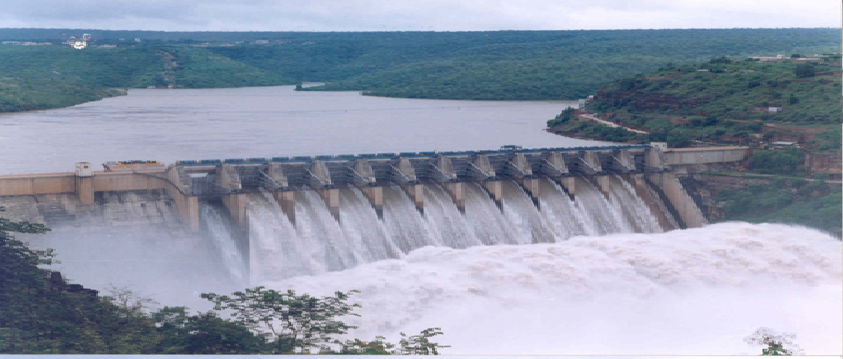
Why in News?
- Dravida Munnetra Kazhagam (DMK) Lok Sabha member S. Ramalingam, representing Mayiladuthurai constituency in Tamil Nadu, has moved the Madras High Court challenging the constitutional validity of Dam Safety Act, 2021 on the grounds that it goes against federalism and is beyond the legislative competence of the Centre.
About the News:
- The litigant claimed that the Act usurped the power of the State governments and placed the operation of specified dams under the control of the Centre.
- He contended that certain terms, including the word ‘dam’ in the Act, had been deliberately defined vaguely to give unbridled power to the Centre to treat any dam as a ‘specified dam’. He also feared that if those definitions were followed, almost all dams in the country would fall under the purview of the Act.
- Referring to Entries 17, 18 and 35 of List II (State list) of the seventh schedule of the Constitution, the petitioner contended that dams would squarely fall within the legislative domain of State Governments.
- The power of the Centre under Entry 56 of List I (Union list) was only with respect to inter-State rivers or river valleys and nothing more, he asserted.
- Entry 56 cannot be stretched to include dams and embankments exclusively within the control of the States. Parliament cannot make a declaration in relation to a subject matter of List II entries when such power is conspicuously absent in List I subjects. Power over the subject ‘interstate river and river valley’ cannot be confused with the control over dams.
- Claiming that the State governments would be in a better position than the Centre to take a call on dam safety, the legislator told the court that the Act under challenge, if not nullified, would have an adverse impact on agriculture, fisheries, hydro power generation, provision of drinking water to the people and so on.
About Dam Safety Act, 2021:
- The Act provides for surveillance, inspection, operation and maintenance of dams to prevent disasters, and institutional mechanisms to ensure safety.
- It applies to over 5,000 dams across the country, many of which are currently in poor conditions.
- It has been met with significant opposition, particularly from several states that claim the Act oversteps the Centre’s mandate.
What is its Constitutional Validity?
- According to Entry 17 of State List, the states are eligible to make laws on irrigation, water supply, canals, embankments, drainage, water power and water storage.
- According to Entry 56 of the Union List, the Parliament is allowed to make laws on regulation of river valleys and inter state rivers.
- Article 252 allows the Parliament to make laws on subjects in State list if two or more states pass resolution requiring a law. In this issue, West Bengal and Andhra Pradesh have passed resolution asking for a law on dam safety.
Which dams are Covered?
- All dams in India with a height above 15 metres come under the purview of the Act.
- Dams between 10 to 15 metres of height are also covered but only if they meet certain other specifications in terms of design and structural conditions.
National Committee on Dam Safety:
- The Act provides for the constitution of a National Committee on Dam Safety (NCDS) which is to be chaired by the Central Water Commissioner (CWC).
- The other members of the NCDS will be nominated by the Centre and will include up to 10 representatives of the Centre, 7 state government representatives, and 3 experts on dam safety.
- The NCDS is to formulate policies for dam safety and to prevent dam failures.
- In the event of a dam failure, the NCDS will analyse why the failure occurred, and suggest changes in dam safety practices to ensure there aren’t any Repetitions.
National Dam Safety Authority (NDSA):
- The Act provides for the formation of a NDSA which will be responsible for implementing the policies of the NCDS, and will resolve issues between State Dam Safety Organisations (or SDSOs) and dam owners.
- The NDSA will also specify regulations for the inspection of dams and will provide accreditation to the various agencies working on the structure of dams and their Alteration.
State Dam Safety Organisations (SDSOs)
- The Act will also result in the establishment of SDSOs, and State Committees on Dam Safety (SCDSs).
- The jurisdiction of the SDSOs will extend to all dams in that specific state.
- SDSOs will be in charge of scrutinizing dams under their jurisdiction and maintaining a database of the same.
- The SCDS will review the work of the SDSO, and will also have to assess the impact of dam-related projects on upstream and downstream states.
- The NDSA will, in some cases, possess this jurisdiction, for example, if a dam owned by one state is situated in another or crosses multiple states, or if a dam is owned by a central public sector undertaking.
- The Act gives the Central government the power to amend the functions of any of the above bodies through a notification, whenever it is deemed necessary to do so.
How does Act change the Functioning of Dams?
- If the Act is made into a law, then dam owners will have to provide a dam safety unit in each dam.
- The dam safety unit will be required to inspect the dam before and after the monsoon session, and also during and after natural disasters such as earthquakes and floods.
- The Act requires dam owners to prepare EMERGENCY action plans. Risk-assessment studies will also have to be undertaken by owners, regularly.
- At specified, regular intervals, and in the event of either a modification to the dam’s structure or a natural event that may impact the structure, dam owners will have to produce a comprehensive safety evaluation by experts.
Missionaries of Charity denied FCRA nod
30, Dec 2021

Why in News?
- The Union Home Ministry (MHA) said recently that it has refused to renew the FCRA registration of Missionaries of Charity (MoC), a Catholic religious congregation set up by Nobel laureate Mother Teresa, as “some adverse inputs were noticed.”
About the News:
- The NGO registered in Kolkata has more than 250 bank accounts across the country to utilise the foreign funds.
- Some of the biggest donors are Missionaries of Charity in the U.S.A and United Kingdom that contributed over ₹15 crore to MoC, India, for “primary health care, education assistance, treatment of leprosy patients” among others.
- MHA said in a statement that the renewal was refused for not meeting the eligibility conditions and no request / revision application has been received from Missionaries of Charity (MoC) for review of this refusal of renewal.
About Foreign Contribution (Regulation) Act (FCRA), 2010:
- Foreign funding of voluntary organizations in India is regulated under FCRA act which is implemented by the Ministry of Home Affairs.
- The Acts ensures that the recipients of foreign contributions adhere to the stated purpose for which such contribution has been obtained.
- Under the Act, organisations are required to register themselves every five years.
About Non-Governmental Organisations (NGO):
- Worldwide, the term ‘NGO’ is used to describe a body that is neither part of a government nor a conventional for-profit business organisation.
- NGOs are groups of ordinary citizens that are involved in a wide range of activities that may have charitable, social, political, religious or other interests.
- NGOs are helpful in implementing government schemes at the grassroots.
- In India, NGOs can be registered under a plethora of Acts such as the Indian Societies Registration Act, 1860, Religious Endowments Act, 1863, Indian Trusts Act, etc.
- India has possibly the largest number of active NGOs in the world; a study commissioned by the government put the number of NGOs in 2009 at 33 lakh.
- That was one NGO for less than 400 Indians, and many times the number of primary schools and primary health centres.
- Ministries such as Health and Family Welfare, Human Resource Department, etc provides funding to a handful of NGOs.
- NGOs also receive funds from abroad, if they are registered with the Home Ministry under the Foreign Contribution (Regulation) Act (FCRA).
- Without this, no NGO can receive cash or anything of value higher than Rs 25,000.
Controversies Related to FCRA:
- The FCRA regulates the receipt of funding from sources outside of India to NGOs working in India. It prohibits the receipt of foreign contribution “for any activities detrimental to the national interest”.
- The Act also held that the government can refuse permission if it believes that the donation to the NGO will adversely affect “public interest” or the “economic interest of the state”. However, there is no clear guidance on what constitutes “public interest”.
- The FCRA restrictions have serious consequences on both the rights to free speech and freedom of association under Articles 19(1)(a) and 19(1)(c) of the Constitution. The right to free speech is affected in two ways:
- By allowing only some political groups to receive foreign donations and disallowing some others, can induce biases in favour of the government.
- NGOs need to tread carefully when they criticise the regime, knowing that too much criticism could cost their survival.
- FCRA norms can reduce critical voices by declaring them to be against the public interest. This chilling effect on free speech can lead to self-censorship.
- Similar to this on unclear guidelines on public interest, in Shreya Singhal v. Union of India (2015), the Supreme Court (SC) struck down Section 66A of the Information Technology Act. The SC held that the Act could be used in a manner that has a chilling effect on free speech.
- Besides, given that the right to freedom of association is part of the Universal Declaration of Human Rights (Article 20), a violation of this right also constitutes a human rights violation.
- In April 2016, the UN Special Rapporteurs on the Rights to Freedom of Peaceful Assembly and of Association undertook a legal analysis of the FCRA, 2010.
- It stated that restrictions in the name of “public interest” and “economic interest” as invoked under the FCRA failed the test of “legitimate restrictions”.
- The terms were too vague and gave the state excessive discretionary powers to apply the provision in an arbitrary manner.
- In this context, though it is necessary to regulate corrupt NGOs, there needs to be clarity on terms like Public Interest.
Kerala Tops NITI Aayog’s Health Index
30, Dec 2021
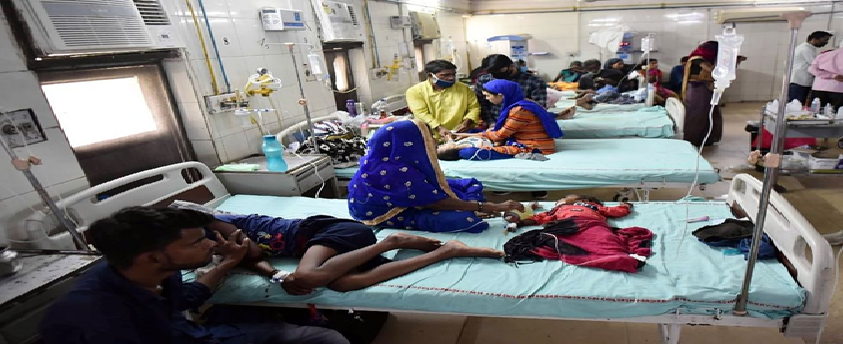
Why in News?
- For the fourth year in a row, Kerala has topped a ranking of States on health indicators; Uttar Pradesh has come in at the bottom.
About the Health Index:
- In 2017 the National Institution for Transforming India (NITI Aayog) in collaboration with the Ministry of Health and Family Welfare (MoHFW) and the World Bank initiated an annual Health Index for tracking Overall Performance and Incremental Performance across all states and Union Territories (UTs).
- In the current round of Health Index, three new indicators were added. These are Maternal Mortality Ratio (MMR), proportion of pregnant women received 4 or more ANCs and level of registration of deaths.
- The Health Index is a weighted Composite Index based on select indicators in three domains: (a) Health Outcomes; (b) Governance and Information; and (c) Key Inputs and Processes.
- The indicators have been selected based on their importance and availability of reliable data at least annually from existing data sources.
- The Health Index covers some of the SDG Targets and tracer indicators related to Goal 3 on Good Health and Well Being.
Key Findings of Health Index 2021:
- Nearly half the states and UTs did not reach the half way mark in the Composite Overall Index Score, and despite good performance, even the top ranking states and UTs could benefit from further improvements.
- The Health Index Score for the Reference Year (2019-20) revealed wide disparities in Overall Performance across the Larger States.
- Despite Good Performance, even the best performing states have significant room for improvement as the highest observed Overall Index Score was 82.20 for Kerala which is some distance from the frontier (maximum potential score is 100).
- There is large inter-state variation in Neonatal Mortality Rate (NMR), Under-five Mortality Rate (U5MR),
- Maternal Mortality Ratio (MMR) and Sex Ratio at Birth (SRB), the four key Health Outcome indicators.
State Specific Findings of Health Index 2021:
- Among the Larger States, Kerala, Tamil Nadu and Telangana emerged among the best three performers in terms of Overall Performance.
- Uttar Pradesh with the lowest Overall Reference Year (2019-20) Index Score ranked at the bottom (Rank 19) in Overall Performance, however, it ranked at the top in terms of Incremental Performance by registering the highest incremental change from the Base Year (2018-19) to Reference Year (2019-20).
- On the other hand, Kerala and Tamil Nadu were top two performers in terms of Overall Performance with the highest Reference Year (2019-20) Index Scores but ranked twelfth and eight respectively in terms of Incremental Performance.
- Telangana performed well both in terms Overall Performance as well as Incremental Performance and secured the third position in both instances.
- For the fourth consecutive round Kerala emerged as the best performer in terms of Overall Performance.
- Among the Smaller States, Mizoram emerged as the best performer in Overall Performance as well as Incremental Performance
- Among UTs, Delhi and Jammu & Kashmir ranked among the bottom UTs in terms of Overall Performance but emerged as the leading performer in terms Incremental Performance.
- The report found that 14 out of 19 larger states, four out of eight smaller states, and five out of seven Union Territories showed an improvement in the health index score between 2019 and 2010 as compared to the base year.
- Kerala had the lowest neonatal mortality rate of five per 1,000 live births, while Madhya Pradesh had the highest rate at 35 per 1,000 live births.
- The state also had the lowest under-Five mortality rate and the highest number of sex ratio at birth (measured as numbers of Female children born per 1,000 male children).
- Himachal Pradesh showed the most Improvement in terms of neonatal mortality and under-five mortality. Punjab was ranked as the most improved state in terms of sex ratio at birth.
What are the Concerns?
- All Larger States had shortage of required Specialists at the district hospitals.
- In majority of the states, the LaQshya certification of DHs for Labour Room and Maternity OT was below 20 percent level.
- According to the available data, half the states registered a decline in state government Health Expenditure to total state expenditure from 2015-16 to 2016-17.
Way Forward:
- The Health Index is a useful tool to measure and compare the Overall Performance and Incremental Performance across states and UTs over time and nudging the states and UTs to shift the focus from inputs and outputs to outcomes.
- The Health Index has strengthened the culture of use of data at the state/UT level to monitor performance and is contributing to the agenda of improving availability, quality and timeliness of data.
Any Citizen of India can buy Non-Agricultural land in J&K, says centre
30, Dec 2021
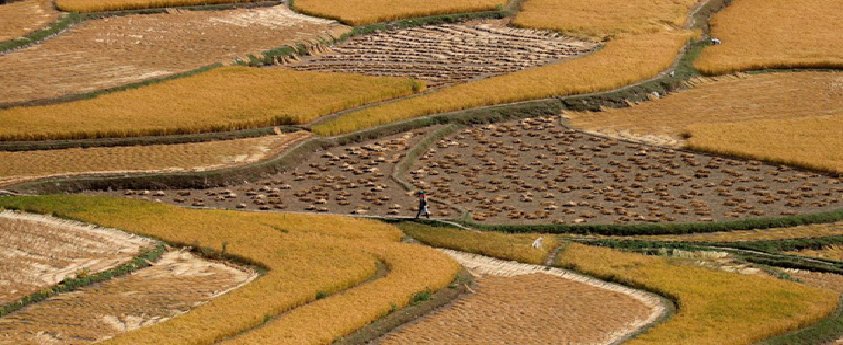
Why in News?
- The Centre and the Jammu and Kashmir Union Territory governments, at the first ever ‘J&K Real Estate Conference’ held in Jammu recently, have decided to throw open local real estate for “second homes and summer homes” to all the citizens of the country, in a Major Push to attract investments from real estate bigwigs.
About the News:
- In October 2020, the Ministry issued a notification and amended the Land Revenue Act, paving the way for anyone from other parts of the country to buy land in J&K, including agricultural land.
- There are 12 States, including Himachal Pradesh, which have provisions to regulate ownership and transfer of land under Article 371 of the Constitution. Earlier, only permanent residents – as defined by the Assembly — were eligible to buy immovable property.
- Under the newly introduced Jammu and Kashmir Development Act, the term ‘being permanent resident of the State’ as a criterion has been ‘omitted’, paving the way for Investors outside Jammu and Kashmir to invest in the Union Territory.
- As a result, any citizen of India can buy non-agriculture land in Jammu and Kashmir.
Does the Laws are Applicable for Ladakh too?
- This law is only applicable for the UT of Jammu & Kashmir and not for Ladakh.
What does the Law Says?
- Under the ‘transfer of land for the purpose of promotion of healthcare or education’, the government may now allow transfer of land “in favour of a person or an institution for the purpose of promotion of healthcare or senior secondary or higher or specialized education in J&K”.
- According to amendments made to “The Jammu & Kashmir Land Revenue Act, Samvat, 1996”, only agriculturists of J&K can purchase agricultural land. “No sale, gift, exchange, or mortgage of the land shall be valid in favour of a person who is not an agriculturist”.
- The Restriction on Conversion of Agricultural Land and Process for Permission of Non-Agriculture clause, however, puts conditions on the use of agricultural land. “No land used for agriculture purposes shall be used for any non-agricultural purposes except with the permission of the district collector”.
- Under a new provision, an Army officer not below the rank of Corps Commander can declare an area as “Strategic Area” within a local area, only for direct operational and training requirements of the armed forces.
- The introduction of the UT of J&K Reorganisation (Adaptation of Central Laws) Third Order, 2020 by the Ministry of Home Affairs (MHA) has resulted in the repeal of at least 11 land laws in vogue in J&K earlier, including the J&K Big Landed Estates Abolition Act that had resulted in famous ‘Land to tiller’ rights.
Panel to look into AFSPA withdrawal from Nagaland
29, Dec 2021
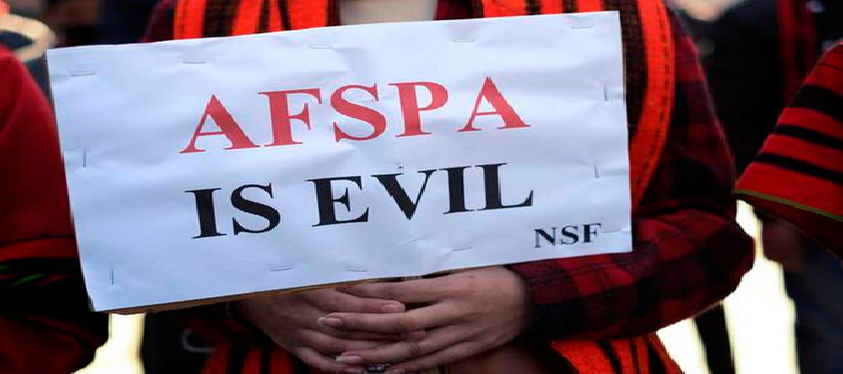
Why in News?
- Days after a botched ambush by an elite armed forces unit killed 13 civilians at Oting in Nagaland’s Mon district, a decision has been taken to constitute a committee to study the possibility of withdrawing the Armed Forces (Special Powers) Act (AFSPA) from the State.
About the News:
- The committee will be headed by the Additional Secretary (Northeast) in the Ministry of Home Affairs and will include Nagaland’s Chief Secretary and Director-General of Police.
- The other members will be Inspector General of Assam Rifles (North) and a representative of the Central Reserve Police Force (CRPF).
- The committee would submit its report within 45 days. The withdrawal of the “disturbed area” notification and the AFSPA from Nagaland will be based on the recommendations of the committee.
What is the Issue?
- MHA said the area comprising the whole of Nagaland is in such a “disturbed and dangerous condition” that the use of armed forces in aid of the civil power is necessary.
- But, Nagaland CM criticised the Centre for extending the “disturbed area” tag on Nagaland every year to prolong the AFSPA despite a ceasefire agreement for almost 25 years.
What does the AFSPA mean?
- In simple terms, AFSPA gives armed forces the power to maintain public order in “disturbed areas”.
Powers given to Armed Forces:
- They have the authority to prohibit a gathering of five or more persons in an area, can use force or even open fire after giving due warning if they feel a person is in contravention of the law.
- If Reasonable suspicion exists, the army can also arrest a person without a warrant; enter or search premises without a warrant; and ban the possession of firearms.
- Any person arrested or taken into custody may be handed over to the officer in charge of the nearest police station along with a report detailing the circumstances that led to the arrest.
What is a “Disturbed Area” and who has the power to Declare it?
- A disturbed area is one which is declared by notification under Section 3 of the AFSPA. An area can be disturbed due to differences or disputes between members of different religious, racial, Language or Regional Groups or castes or Communities.
- The Central Government or the Governor of the State or administrator of the Union Territory can declare the whole or part of the State or Union Territory as a disturbed area.
Has there been Any Review of the Act?
- On November 19, 2004, the Central government appointed a five-member committee headed by Justice B P Jeevan Reddy to review the provisions of the act in the north eastern states.
- The committee submitted its report in 2005, which included the following recommendations: (a) AFSPA should be repealed and appropriate provisions should be inserted in the Unlawful Activities (Prevention) Act, 1967; (b) The Unlawful Activities Act should be modified to clearly specify the powers of the armed forces and paramilitary forces and (c) grievance cells should be set up in each district where the armed forces are deployed.
- The 5th report of the Second Administrative Reforms Commission on public order has also recommended the repeal of the AFSPA.
Special Category Status to States
29, Dec 2021
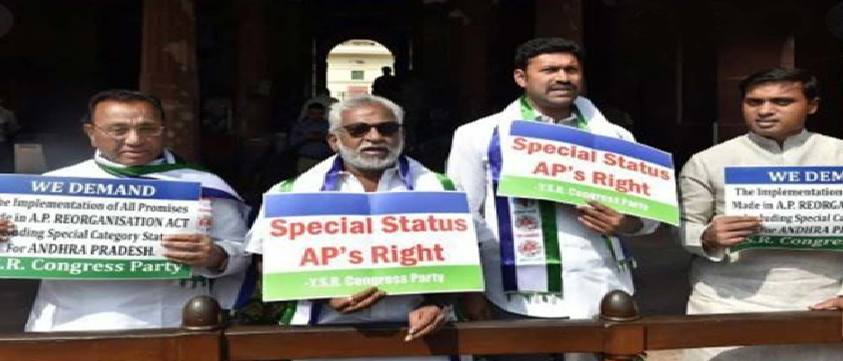
Why in News?
- Union Minister of State for Finance Pankaj Chaudhary has asserted that the Central Government has Extended a Special Package in lieu of the Special Category Status (SCS) to Andhra Pradesh.
What is Special Category Status (SCS)?
- There is no provision of SCS in the Constitution; the Central government extends financial assistance to states that are at a comparative disadvantage against others.
- The concept of SCS emerged in 1969 when the Gadgil formula (that determined Central assistance to states) was approved.
- First SCS was accorded in 1969 to Jammu and Kashmir, Assam and Nagaland.
- Over the years, eight more states were added to the list — Arunachal Pradesh, Himachal Pradesh, Manipur, Meghalaya, Mizoram, Sikkim, Tripura and, finally, in 2010, Uttarakhand.
- Until 2014-15, SCS meant these 11 states received a variety of benefits and sops.
What are the Differences between Special Status and Special Category Status?
- The constitution provides special status through an Act that has to be passed by 2/3rds majority in both the houses of Parliament whereas the special category status is granted by the National Development Council, which is an administrative body of the government.
- For example, Jammu and Kashmir enjoyed a special status as per Article 370 and also special category status as per Article 371.
- But now Article 35A has been scrapped and it has become a union territory with legislature. Now, both Special Status and Special Category status doesn’t apply to J&K anymore.
- The Ministry of Home Affairs (MHA) is holding consultations with the Union Territories of Jammu and Kashmir (J&K) and Ladakh to grant them “special category status” on the lines of Article 371 of the Constitution.
What are the Criteria for Special Category Status?
- Hilly and difficult terrain
- Low population density or sizeable share of tribal population
- Strategic location along borders with neighbouring countries
- Economic and infrastructural backwardness
- Non-viable nature of state
Who Grants Special Category Status to States?
- The decision to grant special category status lies with the National Development Council, composed of the prime minister, union ministers, chief ministers and members of the planning commission, who guide and review the work of the commission.
- Special category status for plan assistance has been granted in the past by the National Development Council (NDC) to some states that are characterized by a number of features Necessitating Special Consideration.
What are the Benefits confer to the States with Special Category Status?
- The Central Government bears 90 percent of the state expenditure on all centrally-Sponsored schemes and external aid while rest 10 percent is given as loan to state at zero Percent rate of interest. Usually, the ratio for general category States is 70% loan and 30% Grant.
- Preferential treatment in getting Central Funds.
- Concession on excise duty to attract Industries to the state.
- 30 percent of the Centre’s gross budget also goes to special category states.
- These states can avail the benefit of debt-swapping and debt relief schemes.
- States with special category status are exempted from customs duty, corporate tax, income tax and other taxes to attract investment.
- Special category states have the facility that if they have unspent money in a financial year; it does not lapse and gets carry forward for the next financial year.
What are the Concerns?
- Considering special status to any new State will result in demands from other States and dilute the benefits further.
- It is also not economically beneficial for States to seek special status as the benefits under the current dispensation are minimal.
- Therefore, States facing special problems will be better off seeking a special package.
Raising Legal Age of Marriage for Women
28, Dec 2021

Why in News?
- The Cabinet has decided to raise the legal age of Marriage for women from 18 to 21.
About the News:
- This decision is based on the recommendation of a panel led by Jaya Jaitly.
- Finance Minister Nirmala Sitharaman in her Budget speech last year proposed a panel on the “age of a girl entering motherhood” to lower maternal mortality rates and improve nutrition levels.
- But when the decision to appoint a task force was announced, its terms of reference included examining “the correlation of age of marriage and motherhood” with health and Nutritional Status of Mothers and Infants.
What are the Important Recommendations?
- The age of Marriage should be increased to 21 years.
- The Government should look into increasing access to schools and colleges for girls, including their transportation to these institutes from far-flung areas.
- Skill and Business training has also been recommended, as has Sex Education in schools.
- These deliveries must come first, as, unless they are implemented and women are Empowered, the law will not be as effective.
What is the Rationale behind the proposal?
- The committee has said the recommendation is not based on the rationale of population control (India’s total fertility rate is already declining) but more with women’s Empowerment and Gender Parity.
- The committee has said access to education and livelihood must be enhanced Simultaneously for the law to be effective.
Criticism:
- Women’s rights activists have opposed the suggestion and have cited evidence to show that such a move may be used to incarcerate young adults marrying without parents’ consent.
- Also, this move would lead to criminalisation of a large number of marriages that will take place once the law comes into effect.
What the law says?
- Currently, the law prescribes that the minimum age of marriage is 21 and 18 years for men and women, respectively.
- The minimum age of marriage is distinct from the age of majority, which is gender-neutral.
- An individual attains the age of majority at 18 as per the Indian Majority Act, 1875.
- For Hindus, Section 5(iii) of the Hindu Marriage Act, 1955 sets 18 years as the minimum age for the bride and 21 years as the minimum age for the groom. Child marriages are not illegal but can be declared void at the request of the minor in the marriage.
- In Islam, the marriage of a minor who has attained puberty is considered valid under personal law.
- The Special Marriage Act, 1954 and the Prohibition of Child Marriage Act, 2006 also prescribe 18 and 21 years as the minimum age of consent for marriage for women and men respectively.
Why is the law being Relooked at?
- From bringing in gender-neutrality to reduce the risks of early pregnancy among women, there are many arguments in favour of increasing the minimum age of marriage of women.
- Early pregnancy is associated with increased child mortality rates and affects the health of the mother.
- Despite laws mandating minimum age and criminalising sexual intercourse with a minor, child marriages are very prevalent in the country.
- Also, according to a study, children born to adolescent mothers (10-19 years) were 5 percentage points more likely to be stunted (shorter for their age) than those born to young adults (20-24 years).
FCRA Licence of 3 Minority NGOs Revoked
28, Dec 2021
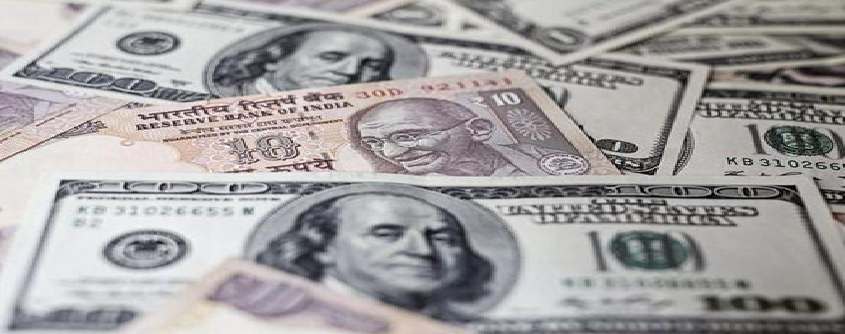
Why in News?
- The Union Ministry of Home Affairs (MHA) has cancelled the FCRA registration of a Vadodara-based NGO that was accused by the Gujarat police of illegally converting members of the Hindu community, funding the anti-CAA protests and for criminal activities to strengthen Islam.
About the News:
- The registration of two other Christian NGOs — the New Hope Foundation, based in Tamil Nadu, and Holy Spirit Ministries from Karnataka were also cancelled.
- The Foreign Contribution Regulation Act (FCRA) registration of AFMI Charitable Trust was cancelled by the MHA for violating the provisions of the Act.
- FCRA is mandatory for associations and non-government organisations (NGOs) to receive foreign funds.
- Recently, MHA had put 10 Australian, American and European donors on its watchlist, following which the Reserve Bank of India wrote to all banks that any funds sent by the foreign donors should be brought to the notice of the Ministry and not cleared without its permission.
About Foreign Contribution (Regulation) Act (FCRA), 2010:
- Foreign funding of voluntary organizations in India is regulated under FCRA act which is implemented by the Ministry of Home Affairs.
- The Acts ensures that the recipients of foreign contributions adhere to the stated purpose for which such contribution has been obtained.
- Under the Act, organisations are required to register themselves every five years.
About Non-Governmental Organisations (NGO):
- Worldwide, the term ‘NGO’ is used to describe a body that is neither part of a government nor a conventional for-profit Business Organisation.
- NGOs are Groups of ordinary citizens that are involved in a wide range of activities that may have charitable, social, political, religious or other interests.
- NGOs are helpful in implementing government schemes at the grassroots.
- In India, NGOs can be registered under a plethora of Acts such as the Indian Societies Registration Act, 1860, Religious Endowments Act, 1863, Indian Trusts Act, etc.
- India has possibly the largest number of active NGOs in the world; a study commissioned by the government put the number of NGOs in 2009 at 33 lakh.
- That was one NGO for less than 400 Indians, and many times the number of primary schools and primary health centres.
- Ministries such as Health and Family Welfare, Human Resource Department, etc provides funding to a handful of NGOs.
- NGOs also receive funds from abroad, if they are registered with the Home Ministry under the Foreign Contribution (Regulation) Act (FCRA).
- Without this, no NGO can receive cash or anything of value higher than Rs 25,000.
Controversies Related to FCRA:
- The FCRA regulates the receipt of funding from sources outside of India to NGOs working in India. It prohibits the receipt of foreign contribution “for any activities detrimental to the national interest”.
- The Act also held that the government can refuse permission if it believes that the donation to the NGO will adversely affect “public interest” or the “economic interest of the state”. However, there is no clear guidance on what constitutes “public interest”.
- The FCRA restrictions have serious consequences on both the rights to free speech and freedom of association under Articles 19(1)(a) and 19(1)(c) of the Constitution. The right to free speech is affected in two ways:
- By allowing only some political groups to receive foreign donations and disallowing some others, can induce biases in favour of the government.
- NGOs need to tread carefully when they criticise the regime, knowing that too much criticism could cost their survival.
- FCRA norms can reduce critical voices by declaring them to be against the public interest. This chilling effect on free speech can lead to self-censorship.
- Similar to this on unclear guidelines on public interest, in Shreya Singhal v. Union of India (2015), the Supreme Court (SC) struck down Section 66A of the Information Technology Act. The SC held that the Act could be used in a manner that has a chilling effect on free speech.
- Besides, given that the right to freedom of association is part of the Universal Declaration of Human Rights (Article 20), a violation of this right also constitutes a human rights violation.
- In April 2016, the UN Special Rapporteurs on the Rights to Freedom of Peaceful Assembly and of Association undertook a legal analysis of the FCRA, 2010.
- It stated that restrictions in the name of “public interest” and “economic interest” as invoked under the FCRA failed the test of “legitimate restrictions”.
- The terms were too vague and gave the state excessive discretionary powers to apply the provision in an arbitrary manner.
- In this context, though it is necessary to regulate corrupt NGOs, there needs to be clarity on terms like Public Interest.
SC Dismisses Maharashtra plea for SECC-2011 raw data
28, Dec 2021
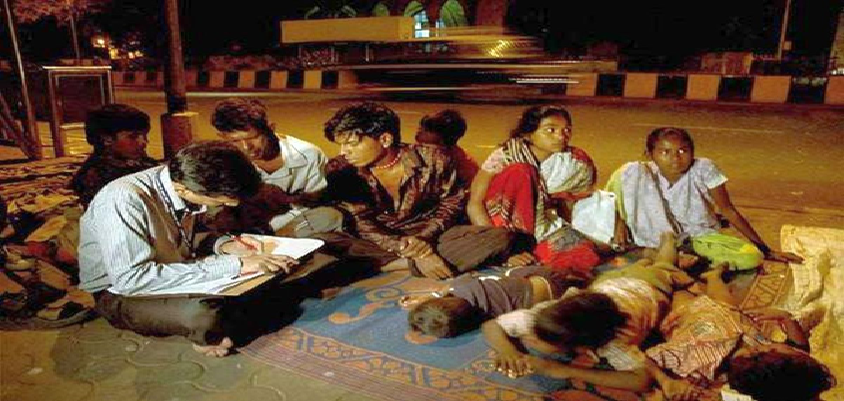
Why in News?
- The Supreme Court has recently said the law negated a caste census and “the Constitution believes in population and not in caste or religion” even as the Centre insisted that data collated during a Socio-Economic Caste Census (SECC) in 2011 was “fraught with mistakes and unusable” for any purpose whatsoever.
What is the Issue?
- The court’s oral observations came moments before it dismissed a writ petition filed by Maharashtra to direct the Centre to part with the raw data collected in the SECC-2011.
- The State stated it wanted to use the data for implementing reservation to the Other Backward Classes (OBC) in its local body polls.
- The Centre, clarified to the court that the SECC was not a “census” undertaken under the Census Act of 1948 by the office of the Registrar General of India. It was an “executive act”, independent of the census exercise, and done on the orders of the Ministry of Social Justice and Empowerment.
- The SECC was organised not as an OBC survey but to get the caste status of all in the country in order to improve the delivery of targeted benefits.
- An affidavit filed by the Social Justice Ministry in the Supreme Court in September maintained that a caste census of the Backward Classes was “administratively difficult and cumbersome”.
- Maharashtra said the State had a right to know about the data collected in the SECC, regardless of whether the census was done on the basis of an executive fiat or under the Census Act.
What were the court’s observations?
- The court observed that it cannot issue a mandamus to produce the raw data if the SECC was inaccurate and had no “force of law”.
- The affidavit emphatically states that the data which is collated is not accurate and is unusable for any purpose whatsoever.
- If that is the stand taken by the Centre, we fail to understand as to how mandamus can be issued to the respondents to permit State of Maharashtra to use the data for any purpose. Such a direction, if issued, would lead to more confusion and uncertainty which cannot be countenanced.
- While rejecting Maharashtra’s plea, the court clarified that the State could pursue other remedies permissible in law.
- It noted that merely because Maharashtra was obliged to comply with the “triple test” requirement before enforcing the reservation for OBCs in the local bodies did not mean that the Centre could be ordered to share information which it itself had classified unusable.
- Maharashtra could not be allowed to employ wrong data in the SECC for reservation in its local body elections.
What is a Census?
- The origin of the Census in India goes back to the colonial exercise of 1881.
- Census has evolved and been used by the government, policymakers, academics, and others to capture the Indian population, access resources, map social change, delimitation exercise, etc.
- However, as early as the 1940s, W.W.M. Yeatts, Census Commissioner for India for the 1941 Census, had pointed out that “the census is a large, immensely powerful, but blunt Instrument unsuited for Specialized Inquiry.”
What is SECC 2011?
- The Socio-Economic Caste Census of 2011 was a major exercise to obtain data about the socio-economic status of various communities.
- It had two components: a survey of the rural and urban households and ranking of these households based on pre-set parameters, and a caste census.
- However, only the details of the economic conditions of the people in rural and urban households were released. The caste data has not been released till now.
- SECC 2011 was conducted by three separate authorities but under the overall coordination of Department of Rural Development in the Government of India.
- Census in Rural Area has been conducted by the Department of Rural Development (DoRD).
- Census in Urban areas is under the administrative jurisdiction of the Ministry of Housing and Urban Poverty Alleviation (MoHUPA).
- Caste Census is under the administrative control of Ministry of Home Affairs: Registrar General of India (RGI) and Census Commissioner of India.
Difference between Census & SECC:
- The Census provides a portrait of the Indian population, while the SECC is a tool to identify beneficiaries of state support.
- Since the Census falls under the Census Act of 1948, all data are considered confidential, whereas all the personal information given in the SECC is open for use by Government Departments to grant and/or restrict benefits to households.
How have caste details been collected so far?
- While SC/ST details are collected as part of the census, details of other castes are not collected by the enumerators. The main method is by self-declaration to the enumerator.
- So far, backward classes commissions in various States have been conducting their own counts to ascertain the population of backward castes.
What kind of caste data is published in the Census?
- Every Census in independent India from 1951 to 2011 has published data on Scheduled Castes and Scheduled Tribes, but not on other castes. Before that, every Census until 1931 had data on caste.
Pros of Caste Census:
- The Precise Number of the population of each caste would help tailor the reservation policy to ensure Equitable Representation of all of them.
Concerns Associated:
- There is a possibility that it will lead to heartburn among some sections and spawn demands for larger or separate quotas.
- It has been alleged that the mere act of labelling persons as belonging to a caste tends to Perpetuate the System.
Outsiders bought 7 plots in J&K, says Home Ministry
28, Dec 2021
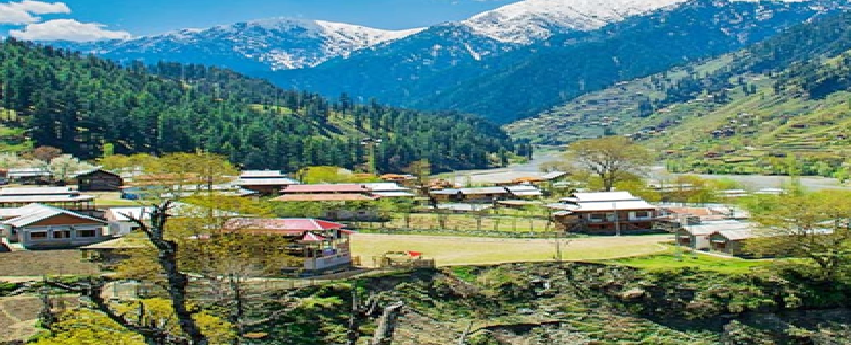
Why in News?
- The Ministry of Home Affairs (MHA) informed the Rajya Sabha recently that “seven plots of land” have been purchased by persons from outside the Union Territory (UT) of Jammu and Kashmir (J&K).
About the News:
- In October 2020, the Ministry issued a notification and amended the Land Revenue Act, paving the way for anyone from other parts of the country to buy land in J&K, including Agricultural Land.
- There are 12 States, including Himachal Pradesh, which have provisions to regulate ownership and transfer of land under Article 371 of the Constitution. Earlier, only permanent residents – as defined by the Assembly — were eligible to buy Immovable Property.
Does the Laws are Applicable for Ladakh too?
- This law is only applicable for the UT of Jammu & Kashmir and not for Ladakh.
What does the Law Says?
- Under the ‘transfer of land for the purpose of promotion of healthcare or education’, the government may now allow transfer of land “in favour of a person or an institution for the purpose of promotion of healthcare or senior secondary or higher or specialized education in J&K”.
- According to amendments made to “The Jammu & Kashmir Land Revenue Act, Samvat, 1996”, only agriculturists of J&K can purchase agricultural land. “No sale, gift, exchange, or mortgage of the land shall be valid in favour of a person who is not an agriculturist”.
- The Restriction on Conversion of Agricultural Land and Process for Permission of Non-Agriculture clause, however, puts conditions on the use of agricultural land. “No land used for agriculture purposes shall be used for any non-agricultural purposes except with the permission of the district collector”.
- Under a new provision, an Army officer not below the rank of Corps Commander can declare an area as “Strategic Area” within a local area, only for direct operational and training requirements of the Armed Forces.
FUGITIVE ECONOMIC OFFENDERS AND THEIR EXTRADITION
15, May 2020
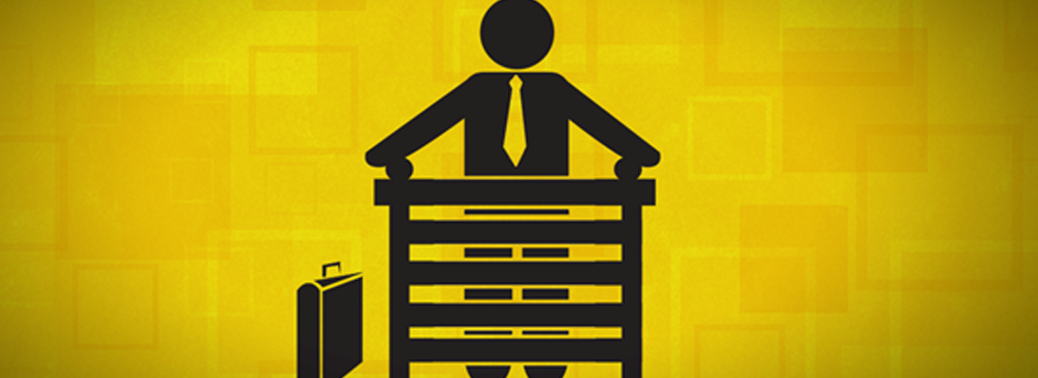
Why in News?
- The UK High Court rejected a plea of Fugitive Economic Offender Vijay Mallya to move the Supreme Court against the dismissal of his appeal challenging the lower court’s approval of his Extradition to India in the IDBI Bank fraud case.
Who is a Fugitive Economic Offender?
- A person can be named an offender under this law if there is an arrest warrant against him or her for committing any offence listed in the schedule of the act and for involvement in economic offences involving at least Rs. 100 crore or more and has fled from India to escape Legal Action.
- Major criteria that have to be satisfied are:
1. The Person has left the country to avoid facing prosecution.
2. He refuses to return to India to face prosecution.
About Fugitive Economic Offenders Act, 2018:
- The Fugitive Economic Offenders Act, 2018 seeks to confiscate properties of economic offenders who have left the country to avoid facing criminal prosecution.
- Offences involving amounts of Rs. 100 crore or more fall under the purview of this law.
- Some of the offences listed in the schedule of the bill are-counterfeiting government stamps or currency, cheque dishonour for insufficiency of funds, money laundering, transactions defrauding creditors etc.
What are its Proceedings as per the Act?
- To declare a person an FEO, an application will be filed in a Special Court (designated under the Prevention of Money-Laundering Act, 2002) containing details of the properties to be confiscated, and any information about the person’s whereabouts.
- The Special Court will require the person to appear at a specified place at least six weeks from issue of notice. Proceedings will be terminated if the person appears.
- Attachment of the property of a fugitive economic offender.
- Confiscation of the property of an individual declared as a fugitive economic offender resulting from the proceeds of crime. Confiscation of other property belonging to such offender in India and abroad including benami property.
- Disentitlement of the fugitive economic offender from defending any civil claim.
- All cases under the proposed law will be tried under the Prevention of Money Laundering (PMLA) Act and the administrator will sell the fugitive’s properties to pay off the lenders.
- The proposed law will have an overriding effect over all other pieces of legislation.
What is Extradition?
- It is the formal process of one state surrendering an individual to another state for prosecution or punishment for crimes committed in the requesting country’s jurisdiction.
- This is generally enabled through a bilateral or multilateral treaty.
- The legal basis for extradition with countries with which India does not have an Extradition treaty is provided by Section 3 (4) of the Indian Extradition Act, 1962.
About Indian Extradition Act, 1962:
- In India, the extradition of a fugitive criminal is governed under the Indian Extradition Act, 1962. This is for both extraditing of persons to India and from India to foreign countries. The basis of the extradition could be a treaty between India and another country. India has extradition treaties with 39 countries currently.
- Example, underworld don Abu Salem was extradited from Portugal to India to face charges. He, along with his wife, was extradited on the conditions that they would not be given the death penalty in India. This was so because European law prevents extradition to a country where capital punishment is in practice.
What is the Extradition Procedure in India?
- Information about the fugitive criminals wanted in foreign countries is received from the country or through Interpol.
- The Interpol wing of the CBI then passes the information to the Concerned police departments.
- The information is also passed on to the Immigration Authorities.
- Then, action can be taken under the 1962 Act.
Way Forward:
- Extradition is as much a Political Process as it is a Judicial one.
- The expeditious processing of extradition requests and the commitment to prepare for and defend the case before Courts depends on bilateral relations and the opportune use of diplomacy and negotiations to push for the process by the requested country.
- India needs to take steps to dispel concerns regarding poor Prison Conditions and potential human rights violations of the requested Person.
- India could consider signing international instruments, such as the UN Convention against Torture (1984) to establish India’s zero tolerance towards torture and custodial violence.
- For addressing investigational delays, it is imperative to improve the capacity and organizational efficiencies of law enforcement agencies so that they may conduct speedy investigation in these cases.
- To ensure that India’s extradition requests are in compliance with treaty conditions and documentary requirements, India must put in Place Suitable Organizational Mechanisms to familiarize itself with laws and regulations of Treaty states.
- India could adopt the good practices of the US’ Office of International Affairs (OIA), Washington’s primary body to handle extradition requests, and employ lawyers and station Trained Liaison officers in countries with which the country has extradition Relations.
ONE NATION – ONE RATION CARD SCHEME
04, May 2020

Why in News?
- Five more States Bihar, Punjab, Uttar Pradesh, Himachal Pradesh and Daman and Diu have been integrated with the ‘one nation, one ration card’ scheme recently.
About the Scheme:
- Since Ration Cards are issued by State Governments, this implied that beneficiaries could procure food grains only from the designated ration shops within the concerned state.
- If a beneficiary were to shift to another state, he/she would need to apply for a new ration card in the second state. There were other complications.
- For instance, after marriage, a woman needed to get her name removed from the ration card issued to her parents, and get it added to the ration card issued to her husband’s family.
- The ONORC scheme attempts to address this gap in TPDS delivery. Essentially, the scheme has been launched keeping in mind the internal migration of our country, since people keep moving to different states in search of better job opportunities and higher standards of living.
- As per Census 2011, 4.1 crore people were inter-state migrants and 1.4 crore people migrated (inter and intra-state) for employment.
- With the ONORC scheme being implemented, the beneficiary can buy food grains from ration shops located in any of the states.
- Currently, about 60 crore beneficiaries from 17 states and UTs can benefit from the ration card portability and they can purchase the subsidised food grains using the existing ration cards. The government hopes to implement the scheme across India by June 1, 2020.
Standard Format of ‘One Nation, One Ration Card’:
- A Standard format for ration card has been prepared after taking into account the format used by Different States.
- For national portability, the state governments have been asked to issue the ration card in bi-lingual format, wherein besides the local language, the other language could be Hindi or English.
- The states have also been told to have a 10-digit standard ration card number, wherein first two digits will be state code and the Next Two Digits will be running ration card numbers.
- Besides this, a set of another two digits will be appended with ration card number to create unique member IDs for each member of the Household in a Ration Card.
Challenges Ahead:
- Prone to Corruption: Every state has its own rules for Public Distribution System (PDS). If ‘One Nation, One Ration Card’ is implemented, it will further boost corruption in an already corrupted Public Distribution System.
- The Scheme will Increase the woes of the common man and, the middlemen and corrupt PDS shop owners will exploit them.
- Tamil Nadu has Opposed the Proposal of the Centre, saying it would result in undesirable consequences and is against federalism.
OPPOSITION RISES TO PERMANENT BRU SETTLEMENT IN TRIPURA
04, May 2020
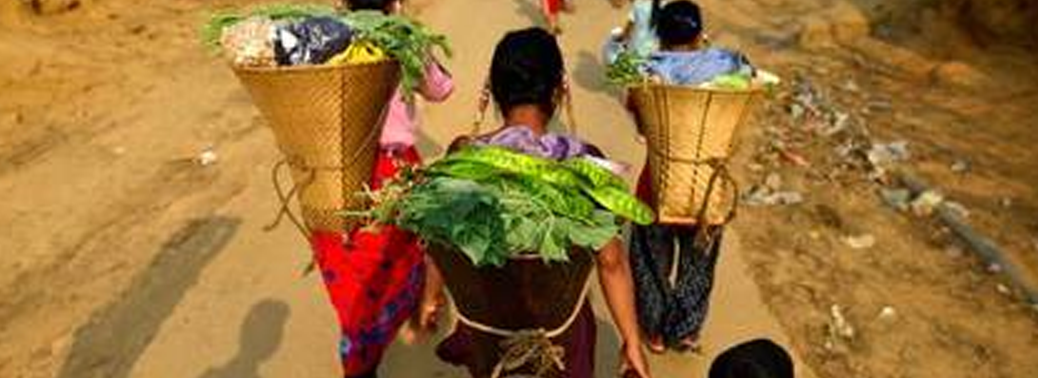
Why in News?
- In the middle of the Covid-19 lockdown, two community-specific groups have renewed their opposition to the permanent settlement of Bru refugees from Mizoram in Tripura.
- The two groups namely, Nagarik Suraksha Mancha (mostly representing Bengali people displaced from erstwhile East Pakistan post-partition in 1947) and the Mizo Convention have submitted a memorandum protesting against the proposed settlement of the displaced Brus in Tripura.
Background Info:
- Bru or Reang is a community indigenous to Northeast India, living mostly in Tripura, Mizoram and Assam. In Tripura, they are recognised as a Particularly Vulnerable Tribal Group.
- In Mizoram, they have been targeted by groups that do not consider them indigenous to the state. In 1997, following ethnic clashes, nearly 37,000 Brus fled Mamit, Kolasib and Lunglei districts of Mizoram and were accommodated in relief camps in Tripura.
- Since then, 5,000 have returned to Mizoram in eight phases of repatriation, while 32,000 still live in six relief camps in North Tripura.
- In 2018, community leaders from the Bru camps signed an agreement with the Centre and the two state governments, providing for repatriation in Mizoram.
- But most camp residents rejected the terms of the agreement. The camp residents say that the agreement doesn’t guarantee their safety in Mizoram.
- The Centre, the governments of Mizoram and Tripura and leaders of Bru organisations signed a quadripartite agreement in January (2020) to let the remaining 35,000 refugees who have stayed back to be resettled in Tripura.
- The rehabilitation package offered included financial assistance of ₹4 lakh and land for constructing a house for Each family.
Particularly Vulnerable Tribal Groups:
- Particularly Vulnerable Tribal Groups (PVTGs) are more vulnerable among the tribal groups. In India, tribal population makes up for 8.6% of the total population.
- In 1973, the Dhebar Commission created Primitive Tribal Groups (PTGs) as a separate category, who are less developed among the tribal groups. In 2006, the Government of India renamed the PTGs as PVTGs.
- PVTGs have some basic characteristics – they are mostly homogenous, with a small population, relatively physically isolated, absence of written language, relatively simple technology and a slower rate of change etc.
- Among the 75 listed PVTG’s the highest number are found in Odisha.
“TRENDS IN WORLD MILITARY EXPENDITURE” REPORT: SIPRI
28, Apr 2020
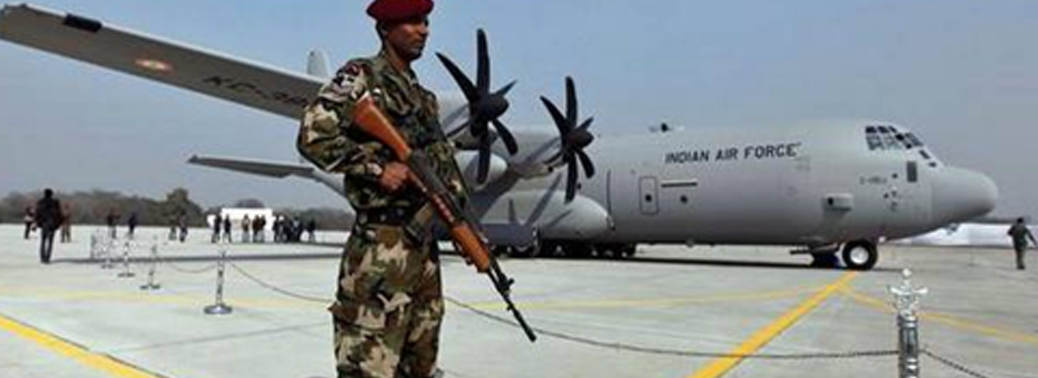
Why in News?
- ‘Trends in World Military Expenditure, 2019’ was recently released by the Stockholm International Peace Research Institute (SIPRI).
- According to the report, the global military expenditure rose to $1917 billion in 2019 with India and China emerging among the top three Spenders.
Global Scenario:
- Global military spending was 2.2% of the global Gross Domestic Product (GDP) with an increase of 3.6% from 2018. The increase of 3.6% was the largest annual growth in spending since 2010.
- Top five largest spenders accounted for 62% of the global expenditure.
- The top most countries spending on military are as USA>China>India>Russia>Saudi Arabia.
- India was at the 4th position in 2018 with Saudi Arabia at the 3rd.
India Specific Data:
- India’s defence expenditure is growing in absolute terms but defence expenditure has been going down as a percentage of its GDP, due to the increasing trend in the growth of GDP.
- In 2019, the expenditure was 2.4% of India’s GDP which was lower than that of 2.7% in 2010.
- Total Defence Allocation, including Defence Pension, accounted for 15.48% of the total Central Government expenditure for the year 2019-20.
- It was 6.8% more than that of 2018 and has grown by 37% over the decade of 2010–19. If compared to 1990, it has gone up by 259%.
- Total defence budget accounts for 15.49% of the total central government expenditure for the year 2020-21. It shows a growth of 9.37% over Budget Estimates 2019-20.
- India’s tensions and rivalry with both Pakistan and China are among the major drivers for its increased Military Spending.
About SIPRI:
- Stockholm International Peace Research Institute (SIPRI) hink tank is an independent international institute dedicated to research into conflict, armaments, arms control and disarmament.
- It was established in 1966 at Stockholm (Sweden).
- It provides data, analysis and recommendations, based on open sources, to policymakers, researchers, media and the interested public
CONVERSION OF SURPLUS RICE TO ETHANOL
25, Apr 2020
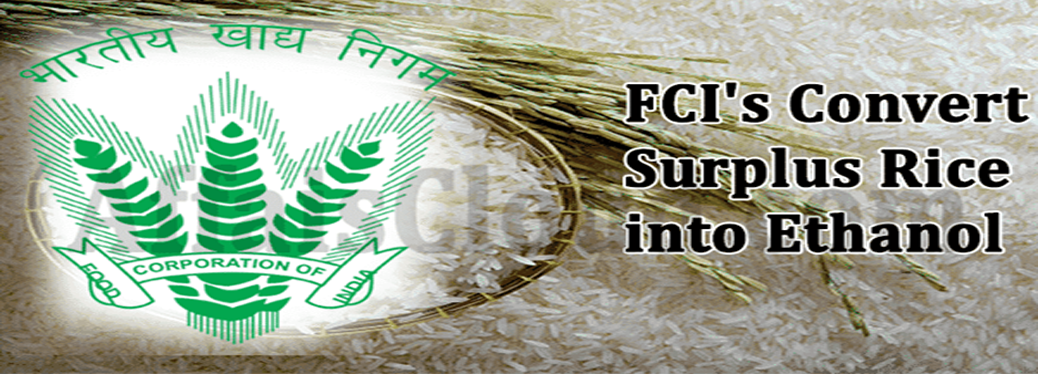
Why in News?
- Recently, the Central government has allowed the conversion of surplus rice to ethanol.
Key Points:
- Ethanol produced from the excess rice will be used for utilisation in making alcohol-based hand sanitizers and blending in petrol. Ethanol is one of the most variable alternatives amongst biofuels.
- The National Biofuel Coordination Committee(NBCC) took the decision which will lead to utilisation of part of a huge stockpile of 30.57 million tonnes (MT) of rice which is almost 128% more than the buffer stock and strategic requirement norms.
- At present, the Food Corporation of India (FCI) has huge rice stock from previous years excluding the unmilled paddy lying with millers on behalf of FCI.
- Using surplus rice for ethanol will address the concern of about 750 million litres of grain-based distillery capacities lying idle, due to the lack of feedstock.
- The National Policy on Biofuels, 2018 allows conversion of surplus quantities of food grains to ethanol when there is a projected oversupply of food grains.
Criticism on Government’s Move:
- This move has been criticised on the grounds that how can the government waste food stock for fuel when the considerable number of the population doesn’t have food and is suffering from malnutrition.
- In recent past, the government decided to give 5 kg wheat or rice and 1 kg of preferred pulses free of cost to 800 million people, under the National Food Security Act, 2013 (NFSA) in the wake of the Covid-19 pandemic.
- However, many poor people are unable to get the benefit out of it, due to loopholes in the PDS network. For example, a large chunk of ration card holders may not be eligible for the free grains, as they are not covered under the NFSA.
- The NFSA, based on the 2011 census, had not factored in the population increase in over nine years, leaving a huge number of people out of its ambit.
About National Policy on Biofuels, 2018:
- It expands the scope of feedstock for ethanol production and has provided for incentives for production of advanced biofuels.
- It categorises biofuels in various categories to enable extension of appropriate financial and fiscal incentives under each category.
- Basic Biofuels or First Generation (1G):Bioalcohols, Biodiesel, etc.
- Second Generation (2G) or Advanced Biofuels:Ethanol, Municipal Solid Waste (MSW) to drop-in fuels, etc.
- Third Generation (3G):
- Fourth Generation (4G):Fuel from genetically engineered crops.
- It expands the scope of raw material for ethanol production by allowing use of sugarcane juice, sugar containing materials like sugar beet, sweet sorghum, starch containing materials like corn, cassava, damaged food grains like wheat, broken rice, rotten potatoes which are unfit for human consumption.
PARLIAMENTARY COMMITTEE ON INDUSTRIAL RELATIONS CODE BILL, 2019
25, Apr 2020
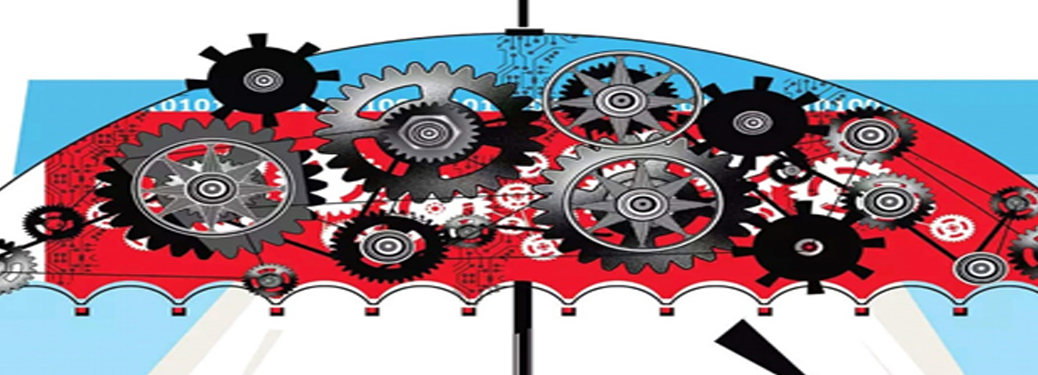
Why in News?
- Recently, the Parliamentary Committee on Labour submitted its report on the Industrial Relations Code, 2019.
About the News:
- The Committee in its report said that in case of natural calamities, payment of wages to the workers until the re-establishment of the industry may be unjustifiable.
- The idea behind the recommendations is that the industry should not be forced when the situation is beyond their control.
- The law has to be reasonable, in such cases it is for the government to step in and extend a helping hand for the industries.
- According to the Committee COVID-19 would be counted as natural calamity.
- The Industrial Code makes it incumbent upon the employer to pay 50% wages to the workers/employees who are laid off due to shortage of power, coal, raw material etc. for 45 days.
- The Industrial Relations Code, 2019 was introduced in the Lok Sabha and referred to the Standing Committee on Labour in December, 2019.
- With the on-going lockdown, the draft report was circulated to the members via email on April 15 and later the final adopted report was accepted by the Speaker.
About Industrial Relations Code Bill, 2019:
- The Industrial Relations Code, 2019 was introduced in Lok Sabha. It seeks to replace three labour laws:
- The Industrial Disputes Act, 1947
- The Trade Unions Act, 1926
- The Industrial Employment (Standing Orders) Act, 1946.
Key Features of the Bill:
- Trade Unions:
- Under the Code, seven or more members of a trade union can apply to register it.
- Trade unions that have a membership of at least 10% of the workers or 100 workers, whichever is less, will be registered.
- Further, the central or State Government may recognise a trade union or a federation of trade unions as Central or State Trade Unions respectively.
- Negotiating Unions:
- The Code provides for a negotiation union in an industrial establishment for negotiating with the employer.
- If there is only one trade union in an industrial establishment, then the employer is required to recognise such trade union as the sole negotiating union of the workers.
- In case of multiple trade unions, the trade union with the support of at least 75% of workers will be recognised as the negotiating union by the government.
Lay-off and Retrenchment:
- The Code defines lay-off as the inability of an employer, due to shortage of coal, power, or breakdown of machinery, from giving employment to a worker. It also provides for employers to terminate the services of a worker, i.e., retrenchment.
- Employers of industrial establishments with at least 100 workers are required to take prior permission of the central or state government before lay-off, retrenchment or closure of an Establishment.
The central or state government can modify this threshold number of workers by notification. Any person who contravenes this provision is punishable with a fine between Rs 1 lakh and Rs 10 lakh.
Resolution of Industrial Disputes:
- The central or state governments may appoint conciliation officers to mediate and promote settlement of industrial disputes.
- These officers will investigate the dispute and hold conciliation proceedings to arrive at a fair and amicable settlement of the dispute.
- If no settlement is arrived at, then any party to the dispute can make an application to an Industrial Tribunal set up under the Code.
THE EPIDEMIC DISEASES (AMENDMENT) ORDINANCE, 2020
23, Apr 2020
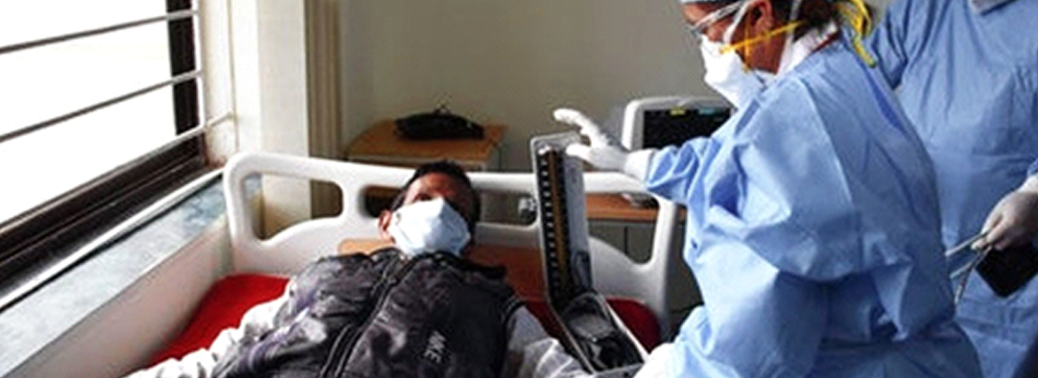
Why in News?
- The Central government has promulgated an Ordinance to amend the Epidemic Diseases Act, 1897 to make attacks on doctors and healthcare workers a cognizable and non-bailable offence.
What is the Issue?
- Members of the Medical community, even as they continue to perform relentlessly round the clock and save human lives, have unfortunately become the most vulnerable victims as they have been perceived by some as carriers of the virus.
- This has led to cases of their stigmatization and sometimes worse, acts of unwarranted violence and harassment.
- Such a situation tends to hamper the medical community from performing their duties to their optimum best and maintaining their morale, which is a critical need in this hour of national health crisis.
- While healthcare service personnel are duty bound to serve without discrimination, the cooperation and support from society is a fundamental need for them to perform their duties with confidence.
- But few violent incidents against the medical community have triggered the Indian Medical Association to step back from treating the patients affected by the pandemic.
- In a response the Cabinet has intervened and brought the ‘The Epidemic Diseases (Amendment) Ordinance, 2020’ to protect the medical community.
About the Epidemic Diseases Act, 1897:
- The Epidemic Diseases Act was introduced by the British to tackle the epidemic of bubonic plague that broke out in the then state of Bombay.
- This law aims to provide for the better prevention of the spread of dangerous epidemic diseases. Under the act, temporary provisions or regulations can be made to be observed by the public to tackle or prevent the outbreak of a disease.
- Section 2Aof the Act empowers the central government to take steps to prevent the spread of an epidemic. It allows the government to inspect any ship arriving or leaving any post and the power to detain any person intending to sail or arriving in the country.
- Since health is a State subject, by invoking Section 2 of the Epidemic Diseases Act, advisories and directions of the Ministry of Health & Family Welfare will be enforceable.
- Section 3 provides penalties for disobeying any regulation or order made under the Act. These are according to section 188 of the Indian Penal Code (Disobedience to order duly promulgated by public servant).
- Section 4 gives legal protection to the implementing officers acting under the Act.
- The Epidemics Diseases Act is routinely enforced across the country for dealing with outbreaks of diseases such as Swine Flu, Dengue.
- For Example in 2009, to tackle the swine flu outbreak in Pune, Section 2 powers were used to open screening centres in civic hospitals across the city, and swine flu was declared a notifiable disease.
What are the Changes Made?
- Whoever commits or abets the commitment of violence against health care worker, shall be punished with imprisonment ranging from 3 months to 5 years, and penalty ranging from Rs 50,000 to 2 lakh.
- In case of a very serious attack, the imprisonment may be for a minimum period of 6 months and maximum of 7 years, with penalty ranging from Rs 1 lakh to 5 lakh.
- As per the Ordinance, investigation into the incidents of attacks on doctors and healthcare workers has to be conducted by a senior inspector and be completed within 30 days.
- Court proceedings related to these cases shall also be conducted in a time-bound manner, and have to be decided within a year.
- The Ordinance also provides that the court shall presume that such person has committed such offence, unless the contrary is proved.
- The Ordinance states that in case of damage to vehicles or clinics of doctors or healthcare workers, the perpetrators would have to pay double the market cost of the damaged asset as compensation.
- Upon failure to pay the compensation awarded, such amount shall be recovered as an arrear of land revenue under the Revenue Recovery Act, 1890.
What are the Possible Impacts?
- The current Ordinance is intended to ensure that during any situation akin to the current pandemic, there is zero tolerance to any form of violence against healthcare service personnel and damage to property.
- Some incidents of violence have taken place which has demoralized the medical fraternity. It is felt that separate and most stringent provisions for emergent times are needed to act as effective deterrents to any such incidents of violence.
CRISIS OF BLOOD SHORTAGE AMID LOCKDOWN
21, Apr 2020

Why in News?
- Due to Covid-19 lockdown hospitals across India are facing acute shortage of blood and have started contacting Individual Blood Donors to meet the Demand.
Key Points:
- The Indian Red Cross Society Blood Bank has noted that there is a drop in blood collection.
- The crisis is such that there is a shortage of the most commonly seen B-positive blood group.
- Hospitals are calling listed donors and those with rare blood groups to come in and donate.
- According to the World Health Organization (WHO) recommendation, blood requirement of 1% of a country’s population be used as an estimate of its blood needs. By this measure, India was short of 1.9 million units of blood as per data presented.
Who are the Worst Hit?
- Patients requiring dialysis, having blood disorders, and pregnant women are the worst hit due to blood shortage.
- Thalassemia patients need repeated blood transfusions to survive. Many thalassemics take blood for their transfusions from the Indian Red Cross Society Blood Bank, whose camps are being cancelled.
Why there is a Shortage?
- Due to lockdown blood banks collection camps are cancelled.
- Donors are hesitant to travel to hospitals to donate blood amid strict lockdown.
- Transportation is also an major issue since it has been almost closed due to lockdown.
- Non-issual of donor passes by some hospitals adds to the woe.
Interventions taken by the Government:
- The Health Ministry has asked hospitals to start working on ensuring sufficient stock of blood for transfusion by promoting voluntary blood donors and utilising various services like mobile blood collection vans with the help of the Indian Red Cross Society.
- It has asked the Indian Red Cross Society to send mobile blood collection vans to the premises of regular blood donors to facilitate them for blood donation.
About Indian Red Cross Society:
- The Indian Red Cross is a voluntary humanitarian organization providing relief in times of disasters/emergencies and promotes health & care of the vulnerable people and communities.
- Indian Red Cross Society (IRCS) was established in 1920 under the Indian Red Cross Society Act.
- The President of India is the President and the Union Health Minister is the Chairman of the Society.
- The Mission of the Indian Red Cross is to inspire, encourage and initiate at all times all forms of humanitarian activities so that human suffering can be minimized and even prevented and thus contribute to creating more congenial climate for peace.
RENTAL WAIVERS TO STPI UNITS
18, Apr 2020
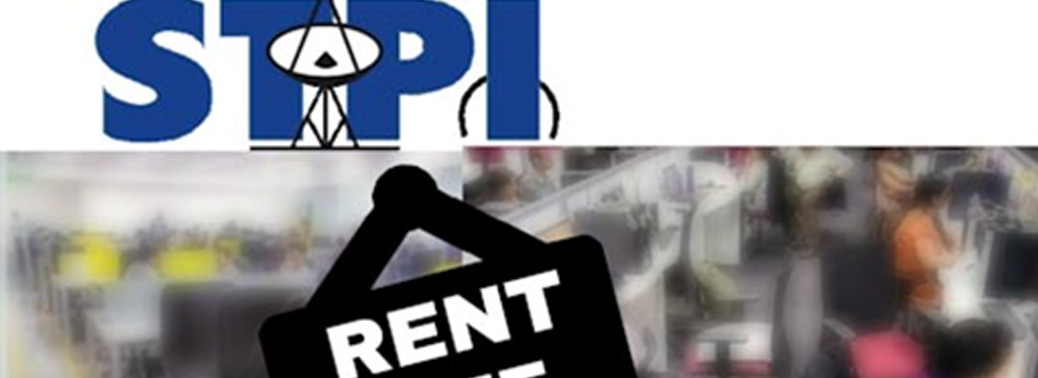
Why in News?
- Ministry of Electronics and Information Technology (MeitY) has recently decided to provide rental waiver to small Information Technology (IT) units operating out of the Software Technology Parks of India.
Highlights of the Decision:
- This decision was taken in order to provide a major boost to the IT and IT-enabled services (ITeS) sector amid Covid-19 lockdown.
- Most of the IT units are either MSMEs (Micro, Small, and Medium Enterprises) or startups. So, this initiative will provide benefit to nearly 200 IT-ITeS MSMEs, operating from the 60 STPI centres.
- This effort is also in the larger interest of around 3,000 IT-ITeS employees who are directly supported by MSME and startup units.
About Software Technology Parks of India:
- Software Technology Parks of India was set up in 1991 as an autonomous society under the Ministry of Electronics and Information Technology (MeitY).
- STPI’s main objective has been the promotion of software exports from the country. STPI has played a key developmental role in the promotion of software exports with a special focus on SMEs and startup units.
- STPI has been implementing the Software Technology Park (STP) scheme and the Electronics Hardware Technology Park (EHTP) scheme for the promotion of IT/ITES industry.
- STP Scheme is a unique scheme, designed to promote the software industry and growth of startups and SMEs without any locational constraints. A company can set up an STP unit anywhere in India.
- The EHTP Scheme is a 100% Export Oriented Scheme for undertaking manufacturing of electronic hardware equipment and other items in India.
ROLE OF CIVIL DEFENCE VOLUNTEERS IN THE PANDEMIC
17, Apr 2020
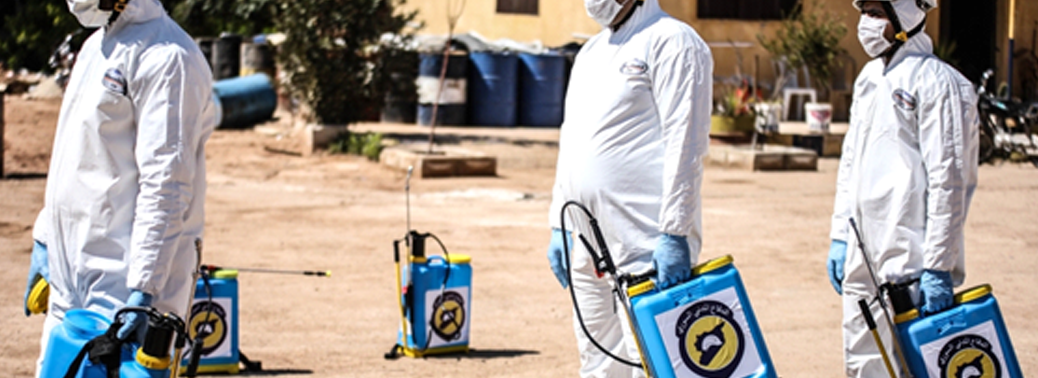
Why in News?
- More than 50,000 Civil Defence volunteers are working at the grassroots level in various roles and capacities to assist the local administration in implementing the measures to contain the spread of coronavirus (COVID-19).
What is their Role in the Current Pandemic?
- The Civil Defence personnel are supplementing the local administration in conducting surveillance of suspected and confirmed COVID-19 cases. They have been working as rapid response teams.
- They have been deployed in all the States and most Union Territories, barring Ladakh, Daman & Diu, and Puducherry.
- Rajasthan, Karnataka, Kerala, Uttar Pradesh, Delhi, Uttarakhand and Assam have taken the lead in using their services.
- The volunteers have been deployed under the command of District Magistrates to assist the local administration in implementing the COVID-19 guidelines and policies effectively.
How they can be Employed and what is the Provisions Regarding This?
- Civil Defence operates under the Civil Defence Act and associated rules and regulations. The Act was amended in 2009 and a notification was issued in 2010 to include disaster management as an additional role.
- Civil Defence is primarily organised on voluntary basis except for a small nucleus of paid staff and establishment which is augmented during emergencies.
Administration:
- Although it is a Central law, Section 4 of the Civil Defence Act empowers State governments to raise corps at the local administration level as per their Requirement.
- The District Magistrate, District Collector or Deputy Commissioner is designated as Controller of the Civil Defence.
Eligibility for becoming a Civil Defence Volunteer:
- A person who Intends to Apply for appointment to a Civil Defence Corps must fulfil the Following Conditions;
- He/she shall be a citizen of India, or a subject of Sikkim or of Bhutan or of Nepal.
- He/she shall have completed the age of 18 years provided that this age limit may be relaxed at the discretion of the competent authority up to a maximum of 3 years for any branch or category of the Corps.
- He/she shall have passed at least the primary standard, that is to say, the fourth class, and this condition may be relaxed by the Controller at this discretion.
- Both men and women shall be Eligible for Appointment to the Corps.
NATIONAL SECURITY ACT, 1980
06, Apr 2020
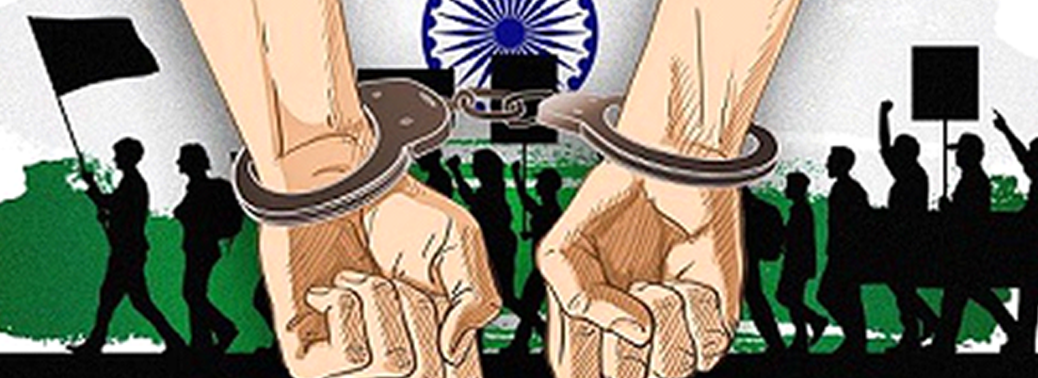
Why in News?
- The Uttar Pradesh government has said that six persons associated with the Tablighi Jamaat who has been accused of misbehaving with women staff at the district hospital in Ghaziabad will be charged under the National Security Act (NSA).
About National Security Act, 1980:
- It allows preventive detention for months, if authorities are satisfied that a person is a threat to national security or law and order.
- The person does not need to be charged during this period of detention.
- The goal is to prevent the individual from committing a crime.
- It was promulgated on September 23, 1980, during the Indira Gandhi government.
- As per the National Security Act, the grounds for preventive detention of a person include:
- Acting in any manner prejudicial to the defence of India, the relations of India with foreign powers, or the security of India.
- Regulating the continued presence of any foreigner in India or with a view to making arrangements for his expulsion from India.
- preventing them from acting in any manner prejudicial to the security of the State or from acting in any manner prejudicial to the maintenance of public order or from acting in any manner prejudicial to the maintenance of supplies and services essential to the community it is necessary so to do.
What the Constitution Says?
- Article 22 (3) (b)of the Constitution allows for preventive detention and restriction on personal liberty for reasons of state security and public order.
- Article 22(4) states that no law providing for preventive detention shall authorise the detention of a person for a longer period than three months unless: An Advisory Board reports sufficient cause for extended detention.
- The 44thAmendment Act of 1978 has reduced the period of detention without obtaining the opinion of an advisory board from three to two months. However, this provision has not yet been brought into force, hence, the original period of three months still continues.
Duration:
- Under the National Security Act, an individual can be detained without a charge for up to 12 months; the state government needs to be intimated that a person has been detained under the NSA.
- A person detained under the National Security Act can be held for 10 days without being told the charges against them.
- Appeal:The detained person can appeal before a high court advisory board but they are not allowed a lawyer during the trial.
Criticisms:
- The NSA has repeatedly come under criticism for the way it is used by the police. As per a Law Commission report from 2001, more than 14 lakh people (14, 57,779) were held under preventive laws in India.
How is it Draconian?
- Typically, if a person is arrested, then he/she enjoy certain rights bestowed by the Indian Constitution. The person has to be informed of the reason for the arrest. Under Section 50 of the Criminal Procedure Code (CrPC), the person arrested has to be informed.
- However, in the case of the NSA, the person can be held up to ten days without being informed of the reason.
- Sections 56 and 76 of the same penal code guarantee the detained person to be produced before a court within 24 hours. Apart from this, Article 22(1) of the Constitution allows the detainee to seek legal advice from a legal practitioner. However, under the NSA, none of these above mentioned basic rights is permitted to the suspect.
CENTRE PLANS CLASSES IN DISTANCE MODE
04, Apr 2020

Why in News?
- Since many schools have been shut since early March due to the COVID-19 pandemic, even before the countrywide lockdown, the Centre is planning to start the next academic year virtually.
Key Points:
- This means that the new academic calendar will begin as usual in April for classes 9 to 12, though the last academic year may have been somewhat truncated, with examinations postponed in some cases including the CBSE exams for classes 10 and 12.
- Recently, it has been decided that the CBSE will conduct exams only for the main subjects: required for promotion or may be crucial for admission in higher educational institutions.
- The Centre plans to restart classes in the distance mode, with teaching via dedicated TV and radio channels in English and Hindi.
- There is an existing program, Swayam Prabha, which is a group of 32 DTH channels devoted to telecasting high-quality educational programmes on 24X7 basis using the GSAT-15 satellite.
- National Institute of Open Schooling (NIOS) has been asked to create a structured programme for schools class-wise. This is being done along with the National Council of Educational Research and Training (NCERT) using their syllabus.
- The material will be ready for use by schools following the NIOS or the Central Board of Secondary Education (CBSE) syllabus.
What about the State Boards?
- Digital Infrastructure for Knowledge Sharing (DIKSHA)mobile app has been offered to States as a platform to provide content in Local Languages.
- If States are willing to produce the content in local languages, the Centre can give them 2-3 hours on the channel.
- Diksha Portal was launched by the Ministry of Human Resource Development (MHRD) in 2017 for providing a digital platform to teachers giving them an opportunity to learn and train themselves and connect with the teacher community.
- It is built considering the whole teacher’s life cycle – from the time student teachers enroll in Teacher Education Institutes (TEIs) to after they retire as teachers.
- States, government bodies and even private organisations, can integrate DIKSHA into their respective teacher initiatives based on their goals, needs and capabilities.
- It also provides access to NCERT textbooks and lessons, following the regular school curriculum.
About National Institute of Open Schooling (NIOS):
- NIOS, formerly known as National Open School (NOS) was established in November, 1989 as an autonomous organisation in pursuance of National Policy on Education 1986 by the Ministry of Human Resource Development (MHRD).
- NIOS provides a number of Vocational, Life Enrichment and community oriented courses besides General and Academic Courses at Secondary and Senior Secondary level.
- It also offers Elementary level Courses through its Open Basic Education Programmes (OBE).
- Government of India has vested NIOS with the authority to examine and certify learners registered with it upto pre degree level courses whether Academic, Technical or Vocational.
CENTRE DEFINES J&K DOMICILE RULES
03, Apr 2020
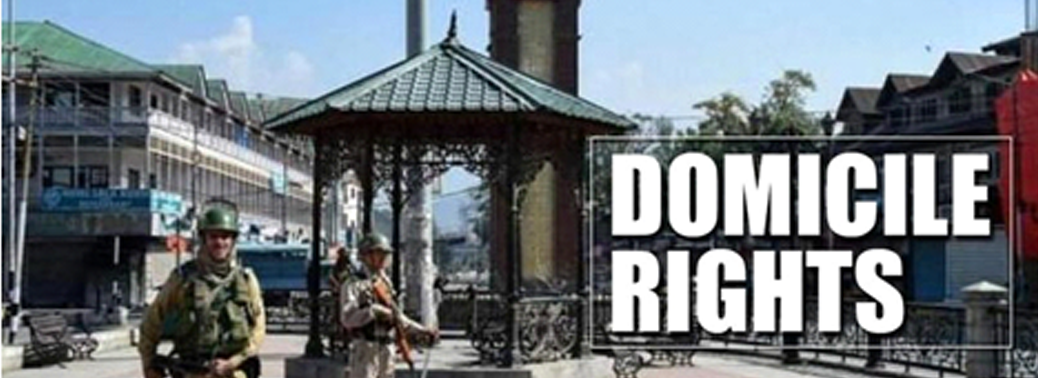
Why in News?
- Centre redefines Jammu and Kashmir domicile rules opening up various categories of jobs in the region to people from across the country.
- The order has been defined under J&K Civil Services (Decentralisation and Recruitment) Act.
What is Domicile?
- In law, domicile is the status or attribution of being a lawful permanent resident in a Particular Jurisdiction.
As per the Changes, who is now Deemed to have Domicile?
- Anyone “who has resided for a period of fifteen years in the UT of J&K”.
- Or has studied for a period of seven years and appeared in class 10th/12th examination in an educational institution located in the UT of J&K.
- Or those registered as migrants and their children.
- Or the children of those central government officials, All India service officials, Officials of Public sector undertaking, autonomous body of central government, public sector banks, officials of statuary bodies officials of central universities and recognized research institutes of central government who have served in J&K for a period of ten years.
- Or children of residents of J&K who reside outside the Union Territory in connection with employment or business or for other professional or vocational reasons, but whose parents fulfil any of the conditions provided in the latest gazette notification will also be entitled to domicile status.
What else the Order Says?
- The Order says that the domiciles will be eligible for the purposes of appointment to any post carrying a pay scale of not more than Level 4.
- The Level 4 post comprises positions such as gardeners, barbers, office peons and watermen, and the highest rank in the category is that of a Junior Assistant.
Who can Issue Domicile Certificates?
- The orders also empower tahsildars to issue domicile certificates.
- The government has been empowered to notify any other officer as the competent authority to issue the certificate.
Implications:
- The order now formally allows people from outside J&K to apply for jobs in the UT.
- While Level IV jobs have been reserved for people with domicile status – as per their definition in the order – other non-gazetted and gazetted jobs have been opened for people from across the country, including people domiciled in J&K.
“OPERATION NAMASTE” OF INDIAN ARMY
28, Mar 2020
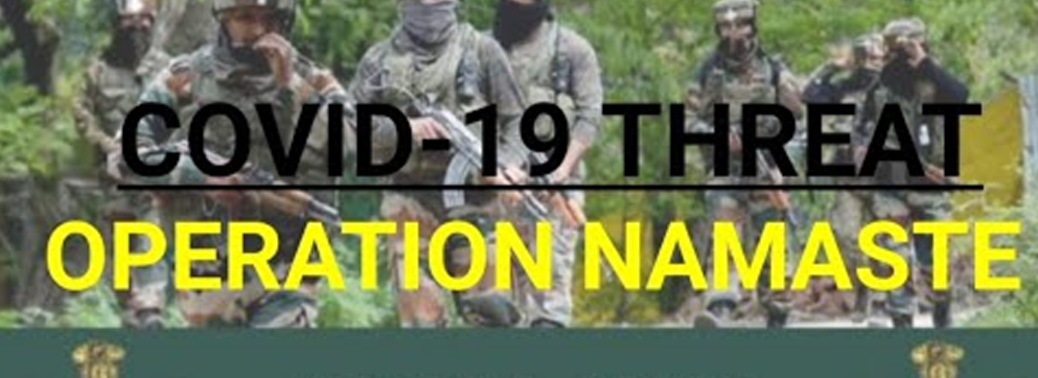
Why in News?
- The Indian Army has launched its anti-COVID-19 campaign code-named as “Operation Namaste” in order to help the government in its fight against the pandemic.
Steps taken under “Operation Namaste”:
- Soldiers are advised to follow the lockdown, wherever they do not have any operational role, and stay fit. They are assured that their families will be well taken care of.
- Leave extension of those on leave as well as curtailment of leave to bare minimum have been imposed.
Setting up of Quarantine and Hospital Facilities:
- Segregation facilities have been set up to observe troops already back from leave from various states.
- So far six quarantine facilities have been established where people evacuated from coronavirus-affected countries have been accommodated.
- 28 Armed Forces hospitals have been earmarked as COVID hospitals.
- These hospitals will include armed forces patients as well as civilian patients transferred from state health authorities.
- Five hospitals from the Army, Navy and the Air Force are conducting coronavirus tests using the RT-PCR methodology and more hospitals will be equipped soon with the resources.
Contributions by Other Forces:
- Indian Navy also contributed by delivering 60,000 face masks ordered by Indian Medical Association, Goa which were stuck in Delhi due to the lockdown. Ilyushin 38 SD (Long Range Maritime Reconnaissance aircrafts) departed for New Delhi and returned on the same day with the masks.
- Recently, Defence Research and Development Organisation (DRDO) also came forward to help by developing ventilators and providing other Medical Equipment.
AIRCRAFT AMENDMENT BILL, 2020
25, Mar 2020
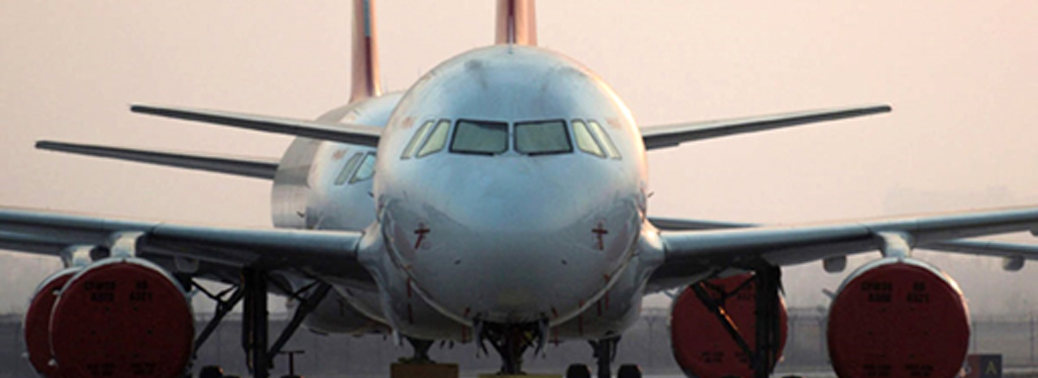
Why in News:
- The Lok Sabha has recently passed the Aircraft (Amendment) Bill, 2020 which seeks to amend the Aircraft Act, 1934.
Highlights
- It will provide statutory status to regulatory institutions like the Directorate General of Civil Aviation (DGCA), the Bureau of Civil Aviation Security (BCAS) and the Aircraft Accident Investigation Bureau (AAIB).
- It regulates the manufacture, possession, use, operation, sale, import and export of civil aircrafts and licensing of aerodromes.
- The statutory status to these regulatory institutions would improve India’s aviation safety ranking as suggested by the International Civil Aviation Organization (ICAO).
- It proposes to increase the fine amount for violations of rules from ₹10 lakhs to ₹1 crore for aviation industry players.
- It may cancel the licences, certificates or approvals granted to a person under the Act if the person contravenes any provision of the Act.
- It exempted aircrafts belonging to the naval, military, or air forces of the Union. It expands this exemption to include aircrafts belonging to any other armed forces other than these three.
- DGCA will carry out oversight and regulatory functions with respect to matters under the Bill.
- BCAS carries out regulatory oversight functions related to civil aviation security.
- AAIB carries out investigations related to aircraft accidents and incidents.
About Challenges of the Bill:
- The civil aviation sector had been deregulated with little role for the government to set air fare.
- There has been a drop in demand and airline companies are under stress due to the COVID-19 outbreak.
- The aviation sector faces the shortage of Air-Traffic Controllers (ATCs). The cases of “near miss” in the skies have increased.
- Air India is having huge losses (₹26 crores daily) due to its disinvestment and it is likely to get worse in the wake of the pandemic.
Way Ahead:
- Airfares need to remain affordable and airlines also need to remain viable.
- The strength of ATCs needs to be increased to avoid any possibility of mid-air collisions. India has 3,500 ATCs and 250 more will be hired next year.
- A near miss is when two aircraft come so close that their safety is compromised. The safe distance between two planes flying in opposite directions is 40 seconds depending on their speed. Similarly, the vertical distance of 1,000 feet is Considered Safe.
SUPREME COURT DISMISSES PLEAS AGAINST POST-BASED RESERVATION IN KARNATAKA
21, Mar 2020

Why in News?
- The Supreme Court has rejected a bunch of pleas seeking exclusion of creamy layer or better-off individuals among Scheduled Castes (SC) and Scheduled Tribes (ST) communities at the entry-level when it comes to the reservation in promotions.
What is the Issue?
- The applications were filed in the BK Pavitra case in which the top court had, in 2019, upheld the constitutional validity of the Karnataka Extension of Consequential Seniority to Government Servants Promoted on the Basis of Reservations (to the Posts in the Civil Services of the State) Act.
- The Supreme Court in its 2019 judgment had held that the Act was a valid exercise of power by the government under Article 16 (4A) which empowers the state to provide reservations to SC/STs in matters of promotion.
What did the Karnataka Law Say?
- The Act enacted by the Karnataka government provides, among other things, for consequential seniority to persons belonging to SC and ST categories promoted under the reservation policy of Karnataka.
- Consequential seniority enables reserved category candidates to retain their seniority for subsequent promotions.
- That is, if an SC/ST candidate is promoted ahead of a general category candidate by reason of reservation in promotion, then the promoted SC/ST candidate will retain that seniority for subsequent promotions and will thus be considered senior to general category candidate who was promoted later.
Why this is Significant?
- This Supreme Court order is significant because it underlines “a ‘meritorious’ candidateis not merely one who is ‘talented ‘or ‘successful’ but also one whose appointment fulfils the constitutional goals of uplifting members of the SCs and STs and ensuring a diverse and representative administration”.
What is the Creamy Layer Concept?
- The ‘means-test and creamy layer’ first finds expression in the Supreme Court’s landmark judgment in Indra Sawhney versus Union of India, delivered by a nine-judge Bench on November 16, 1992.
- ‘Creamy layer’ are “some members of a backward class who are highly advanced socially as well as economically and educationally.
Constitutional basis for special measures under Article 335:
- Article 335 recognises that special measures need to be adopted for considering the claims of SCs and STs in order to bring them to a level-playing field.
Why it is Needed?
- Centuries of discrimination and prejudice suffered by the SCs and STs in a feudal, caste-oriented societal structure poses real barriers of access to opportunity.
- The proviso contains a realistic recognition that unless special measures are adopted for the SCs and STs, the mandate of the Constitution for the consideration of their claim to appointment will remain illusory.
NEW DEFINITIONS FOR MSMES
21, Mar 2020
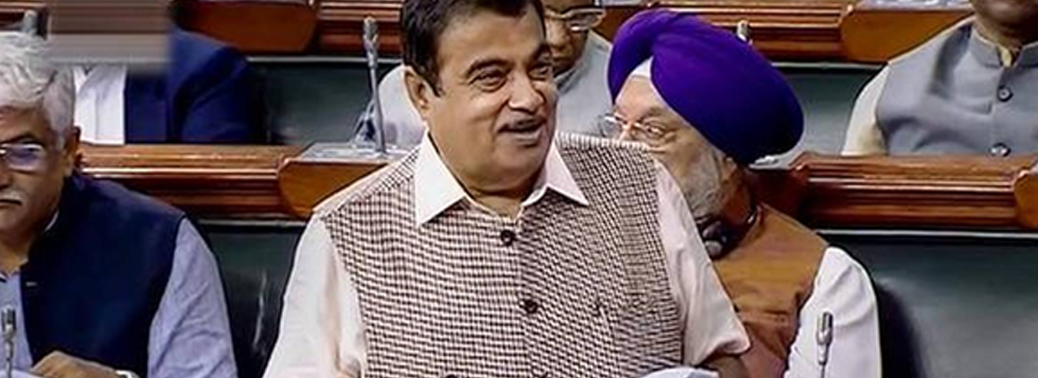
Why in News?
- Union Minister for MSMEs informed the Rajya Sabha that the government would come out with a new definition of MSMEs.
What are MSMEs?
- Micro, Small and Medium Enterprises Development (MSMED) Act, 2006 which was notified on October 2, 2006, deals with the definition of MSMEs. The MSMED Act, 2006 defines the Micro, Small and Medium Enterprises based on
- the investment in plant and machinery for those engaged in manufacturing or production, processing or preservation of goods and
- the investment in equipment for enterprises engaged in providing or rendering of services
- But in February 2018, the Union Cabinet approved the amendment to MSMED Act, 2006 for classifying MSMEs from current investment in plant and machinery criteria to annual turnover criteria. Accordingly,
- Micro Enterprise: Annual turnover does not exceed Rs. 5 Crore
- Small Enterprise:Annual turnover between Rs. 5 crore – Rs. 75 crore.
- Medium Enterprise:Annual turnover between Rs. 75 crore – Rs. 250 crore.
What is the Proposal?
- Government has accepted 39 suggestions by the K. Sinha committee on MSMEs appointed by the Reserve Bank of India, including the setting up a “fund of funds” for the sector.
- The MSME sector currently contributed 24% of the GDP growth and 48% of exports, with an annual turnover of ₹1 lakh crore this year. A target of ₹5 lakh crore in five years had been set.
- Among the hurdles before the sector were the pending payments by governments and public sector undertakings, which were ₹5 lakh crore to ₹6 lakh crore. These dues needed to be cleared in order to boost the sector.
What are their Impacts?
- It would increase compatibility with the Goods and Services Tax (GST) system.
- It may lead to further improvement in India’s ease of doing business scenario.
- It may allow a single definition for purposes related to taxation, investment, etc.
DRAFT DEFENCE PROCUREMENT PROCEDURE (DPP), 2020
21, Mar 2020

Why in News?
- Defence Minister recently released Draft Defence Procurement Procedure (DPP), 2020 which will come into effect from April 1, 2020.
What is Defence Procurement Procedure 2020?
- The Defence Procurement Procedure mainly contains processes that need to be followed to streamline and simplify defence procurement procedures and ultimately achieve the objective of self-reliance in meeting all the security needs of the Indian Armed Forces by promoting indigenous design, development and manufacture of Defence weapon systems and, platforms in a time-bound manner without any delays.
- The draft of DPP 2020 has been prepared by a Review Committee headed by Director General (Acquisition) based on the recommendations of all stakeholders, including private industry.
- In order to accrue advantage of domain specialisation of various subject matter experts, eight sub-committees headed by Lt Gen/equivalent officers were constituted to assist the review committee.
- The first DPP was promulgated in 2002 and has since been revised a number of times to provide impetus to the growing domestic industry and achieve enhanced self-reliance in defence manufacturing.
What are the Major Changes Proposed?
- Indigenous Content Ratio hiked
- In view of the experience gained by the domestic industry, the Draft proposes increasing the Indigenous Content (IC) stipulated in various categories of procurement by about 10% to support the ‘Make in India’
- A simple and realistic methodology has been incorporated for verification of indigenous content for the first time.
- Use of raw materials, special alloys and software incentivised as use of indigenous raw material is a very important aspect of ‘Make in India’ and Indian Companies are world leaders in software.
- Assurance of procurement on a single vendor basis from Aero Engine manufacturing unit and chips from FAB manufacturing units established in the country.
- New Category Buy (Global – Manufacture in India) has been introduced with minimum 50% indigenous content on cost basis of total contract value. Only the minimum necessary will be bought from abroad while the balance quantities will be manufactured in India. This would be in preference to the ‘Buy Global’category as manufacturing will happen in India and jobs will be created in the country.
- Leasing introduced as a new category
- Leasing has been introduced as a new category for acquisition in addition to existing ‘Buy’ & ‘Make’ categoriesto substitute huge initial capital outlays with periodical rental payments.
- Leasing is permitted under two categories i.e., Lease (Indian) where Lessor is an Indian entity and is the owner of the assets and Lease (Global) where Lessor is a Global entity.
- This will be useful for military equipment not used in actual warfare like transport fleets, trainers, simulators, etc.
- A new Chapter is introduced for procurement of software and systems related projects as in such projects, obsolescence is very fast due to rapid changes in technology and flexibility in the procurement process is required to keep up with the technology.
- A new Chapter is introduced for Post Contract Management to facilitate and provide clear guidelines for issues arising during the contract period as typically Defence contracts last for a long period.
- Timelines for procurement reduced by reducing the process for accord of Acceptance of Necessity which would be single stage of projects less than Rs.500 crore and in case of repeat orders. Trial methodology and Quality Assurance Plan to be part of RFP.
- Field Evaluation Trials to be conducted by specialised trial wings and the objective of trials will be to nurture competition rather than elimination for minor deficiencies.
- A comprehensive Chapter introduced for ‘Make’ to cover procurement from manufacturers in India including start-ups and innovators and from research projects of DRDO.
- Product support
- The scope and options for Product Support have been widened to include contemporary concepts in vogue, namely Performance Based Logistics (PBL), Life Cycle Support Contract (LCSC), Comprehensive Maintenance Contract (CMC), etc. to optimise life cycle support for equipment. The capital acquisition contract would normally also include support for five years beyond the warranty period.
- Modified offset guidelines proposed to give emphasis on export of products rather than components. Higher multipliers proposed for procurement from MSMEs and units established in Defence Industrial Corridors. Higher multipliers proposed for Transfer of Technology to private Companies / DPSUs / OFB and DRDO.
ODF+ and ODF++
19, Mar 2020

Context:
- Recently, the Parliamentary Standing Committee on Urban Development has tabled its report on the performance of the Swachh Bharat Mission (Urban) in Lok Sabha.
About ODF+, ODF++
- It is launched in 2018 to further scale up and sustain the work undertaken by the cities after achieving the ODF status under Phase I of the Swachh Bharat Mission — Urban (SBM-Urban).
- Cities that had been certified ODF at least once, on the basis of the ODF protocols, are eligible to declare themselves as SBM-ODF+ & SBM-ODF++.
- Its aim is to properly maintenance of toilet facilities and safe collection, conveyance, treatment/disposal of all faecal sludge and sewage.
- ODF+ focuses on toilets with water, maintenance and hygiene
- ODF++ focuses on toilets with sludge and septage management.
Highlights:
- Despite the fact that work on three protocols under the next phase of Swachh Bharat Mission (Urban-2) — ODF+, ODF++ and Water Plus — is to be completed by 2024, the ground situation was not matching with the assigned timeline. The progress has been slow.
- Less than 30 per cent of the cities have been certified as ODF+ so far. Out of 4,320 cities declared ODF, as low as 1,276 cities have been certified as ODF+.
- The number of ODF++ cities — 411 — means that less than 10 per cent cities are certified as ODF++ so far.
- According to Phase 1 of the Swachh Bharat Mission (U), 99 per cent of the cities became ODF, the Union Ministry of Housing and Urban Affairs (MoHUA) had claimed in 2019.
About Water plus:
- It aims to sustain toilets by treating and reuse of water, which is launched in 2019.
- It contributes to the government’s focus on water conversation and reuse under the Jal Shakti Abhiyan and is in alignment with United Nations-mandated Sustainable Development Goal No 6 on clean water and sanitation.
USING CALL DATA IS TO IMPROVE QUALITY AND NOT FOR SURVEILLANCE
19, Mar 2020
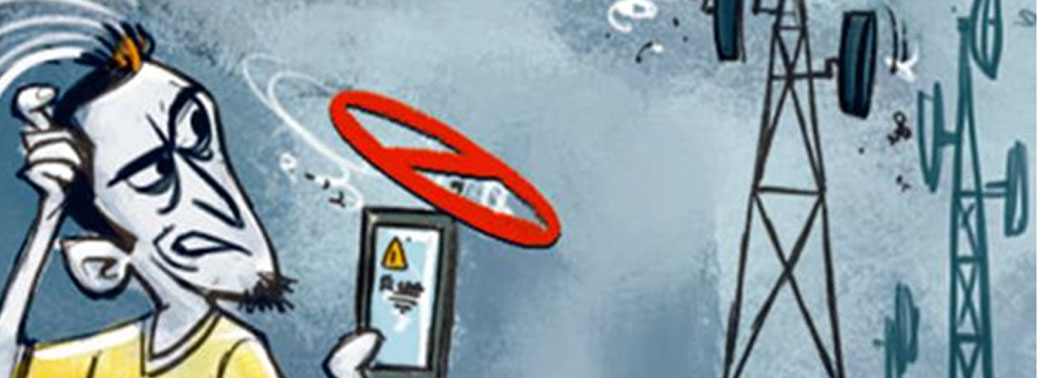
Why in News?
- Bulk call data records (CDR) being sought by the Department of Telecommunications (DoT), was only being collected to analyse and improve the quality of telecom services and not for any form of surveillance, says Government.
What is the Issue?
- Some local units of the DoT “continue to seek voluminous CDR details from the licensees on regular basis in contravention” of the standard operating procedure for providing CDRs to law enforcement agencies.
- In a reply, the DoT said that given the numerous complaints about quality of service on the country’s telecommunications networks including call drops, echo, cross connections, incomplete or poor caller experience, the DoT had developed a software tool to analyse big data and accurately ascertain call drops in any area.
- For this purpose, data on calls made from mobiles in any tower coverage area is analysed to ascertain calls terminated within 30 seconds and made again.
- The government stressed that this data was anonymous and did not contain the names of either the maker or receiver of calls.
- It is alleged that there is infringement of privacy of an individual which is the violation of the Fundamental Right under Article 21.
- The right to privacy is protected as an intrinsic part of the right to life and personal liberty under Article 21 and as a part of the freedoms guaranteed by Part III of the Constitution.
Is there any Legal Backup for such provision?
- The Government is empowered under Rule 419 of the Indian Telegraph Rules, 1951, to access such anonymous data for improving network quality.
- Any authorisation of such access to call drop data can be approved only by very senior officers.
- Further, it has been decided to seek such data only for short time period i.e. three to six hours normally covering the peak load of traffic on the network for any cell tower.
What are the Concerns Regarding Surveillance?
- Surveillance is done as per due process of law; that any interception, monitoring, decryption of computer resource is done only by authorised agencies and with approval of competent authority; to prevent unauthorised use of these powers by any agency, individual or intermediary so that the right to privacy of citizen is not violated.
Who are Empowered for Surveillance?
- The Ministry of Home Affairs (MHA), in December 2018, issued an order authorising ten security and intelligence agencies of the country to access any information stored in any computer for the purpose of monitoring, decrypting and interception.
- The 10 agencies include Intelligence Bureau, Narcotics Control Bureau, Enforcement Directorate, Central Board of Direct Taxes, Directorate of Revenue Intelligence;, Central Bureau of Investigation, National Investigation Agency Cabinet Secretariat (RAW), Directorate of Signal Intelligence (For service areas of Jammu & Kashmir, North-East and Assam only), and Commissioner of Police, Delhi.
Why Surveillance Needed?
- Surveillance is necessary in the modern world where modern tools of information communication, including encryption are used. Surveillance is done only in the defence of India, to maintain public order, etc.
- There are grave threats to the country from terrorism, radicalisation, cross border terrorism, cybercrime, drug cartels”, and these cannot be ignored or under-stated. There is a need for “speedy collection of actionable intelligence” to counter threat to national interests
How it is against the judgement of Supreme Court’s right to privacy?
- SC in Puttuswamy judgment had asked the government to always carefully and sensitively balance individual privacy and the legitimate concerns of the state.
- Government has clarified that existing processes will be followed and every case of interception would continue to require permission from the home secretary and review by a panel headed by the cabinet secretary. However, even these processes do not have adequate safeguards against misuse.
- An individual may not even know if her electronic communications are being intercepted or monitored. If such surveillance comes within the person’s knowledge, due to the obligation to maintain confidentiality and provisions in the Official Secrets Act, the person would not be able to know the reasons for such surveillance. This can make surveillance provisions prone to misuse.
CENTRAL SANSKRIT UNIVERSITIES BILL, 2019
18, Mar 2020

Why in News?
- Recently, a Bill to grant the status of Central universities to three deemed Sanskrit universities were passed by the Rajya Sabha.
About the bill:
- The Bill is intended to convert India’s three deemed-to-be Sanskrit universities into Central Sanskrit Universities.
- Rashtriya Sanskrit Sansthan, New Delhi.
- Shri Lal Bahadur Shastri Rashtriya Sanskrit Vidyapeeth, New Delhi.
- Rashtriya Sanskrit Vidyapeeth, Tirupati.
- What the universities will do?
- The proposed central universities will:
- disseminate and advance knowledge for the promotion of Sanskrit,
- make special provisions for integrated courses in humanities, social sciences, and science, and
- train manpower for the overall development and preservation of Sanskrit and allied subjects.
- Powers and functions:
- prescribing courses of study and conducting training programmes,
- granting degrees, diplomas, and certificates,
- providing facilities through a distance education system,
- conferring autonomous status on a college or an institution,
- providing instructions for education in Sanskrit and allied subjects.
- Some of the authorities that the universities will have:
- A court, which will review the policies of the university and suggest measures for its development.
- An Executive Council, which will be the principal executive body.
- The 15-member council will include the Vice-Chancellor appointed by the Centre, who will be the chairperson.
- The council will, among other functions, create teaching and academic posts and their appointment, and manage the revenue and property of the university.
- An Academic and Activity Council, which will supervise academic policies.
- A Board of Studies, which will approve the subjects for research and recommend measures to improve standards of teaching.
- Visitor of the universities:
- Like at all central universities, the President of India will be the Visitor of the central Sanskrit universities.
- He may appoint persons to review and inspect the functioning of the University.
- The Executive Council may take action based on the findings of the inspection.
These include:
What is the Issue?
- The government has been accused of neglecting other classical languages in India.
- Currently there are six languages that enjoy the ‘Classical’ status in India:
- Tamil (declared in 2004), Sanskrit (2005), Kannada (2008), Telugu (2008), Malayalam (2013), and Odia (2014).
- All the Classical Languages are listed in the Eighth Schedule of the Constitution.
About Classical Languages:
- The Ministry of Culture provides the guidelines regarding Classical languages.
- Guidelines for declaring a language as ‘Classical’ are:
- High antiquity of its early texts/recorded history over a period of 1500-2000 years;
- A body of ancient literature/texts, which is considered a valuable heritage by generations of speakers;
- The literary tradition be original and not borrowed from another speech community;
- The classical language and literature being distinct from modern, there may also be a discontinuity between the classical language and its later forms or its offshoots.
- Once a language is notified as a Classical language, the Human Resource and Development Ministry provides certain benefits to promote it:
- Two major annual international awards for scholars of eminence in classical Indian languages
- A Centre of Excellence for studies in Classical Languages is set up
- The University Grants Commission is requested to create, to start with at least in the Central Universities, a certain number of Professional Chairs for the Classical Languages so declared.
GOVERNMENT PLANS TO LAUNCH MAHUA-BASED ALCOHOLIC DRINK
11, Mar 2020
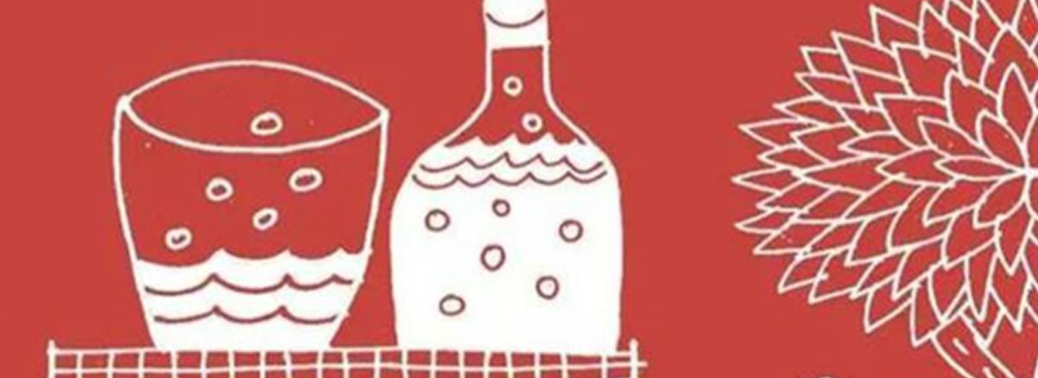
Why in News?
- The central government is set to launch a Mahua-based alcoholic beverage ‘Mahua Nutribeverage’ in the market for the first time.
- The beverage has a high nutritional value and relatively low alcohol content (5%). This is the first time that the Ministry of Tribal Affairs is getting into bottling and sale of alcoholic beverages.
Key Points:
- It has been developed by the Indian Institute of Technology (IIT) Delhi in collaboration with the Tribal Cooperative Marketing Development Federation of India (TRIFED).
- TRIFED has signed a memorandum with the National Research Development Corporation (NRDC) to undertake the assignment of technology transfer to the suitable entrepreneurs for production and marketing of the beverage.
- The marketing is being undertaken under the Van Dhan Vikas Karyakram.
- Besides mahua, other tribal staples such as tamarind and amla will be de-seeded and brought to the market in the form of candies and jams.
About Van Dhan Vikas Karyakram:
- It is Tribal Affairs Ministry’s value-addition scheme which was launched in Chhattisgarh’s Bijapur in 2018.
- The nation-wide programme earmarked ₹500-600 crore for training tribal clusters to add value to their produce and sell it in a packaged format, aiming to increase their income manifold.
- The products marketed under the scheme include only those that need primary-level processing, including handicrafts, textiles, food items, jams and pulps and jewellery.
About Mahua:
- It is a prominent forest tree in tribal areas Chhattisgarh and plays an important role in the Rural Economy.
- The mahua flowers are a rich source of sugars and are said to contain vitamins, minerals and calcium. The flowers are also fermented and distilled yielding spirituous liquor also known as ‘country beer’.
- An estimated 90% of the annual production of Mahua flower is used in the process of brewing beverages.
HINDU ADOPTION NOT VALID WITHOUT CONSENT FROM WIFE, SAYS SC
11, Mar 2020
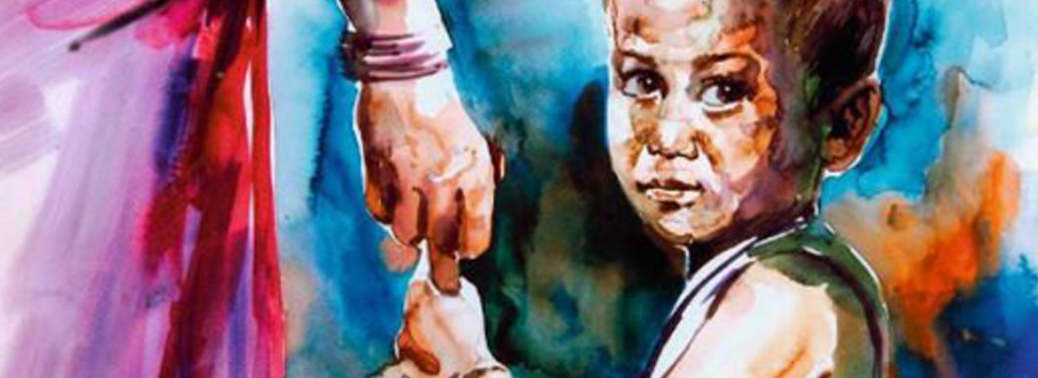
Why in News?
- The Supreme Court has recently held that the Hindu adoption is not valid unless the man takes prior consent from his wife and there is a “ceremony of giving and taking in adoption”.
About Hindu Adoptions and Maintenance Act:
- The Hindu Adoptions and Maintenance Act (HAMA) was established in the year 1956 as part of the Hindu Code Bills.
- This act extends to the whole of India except Jammu & Kashmir and applies to Hindus domiciled in our country.
- Hindu Adoptions and Maintenance Act was introduced to codify and standardize the current Hindu legal tradition.
- This act dealt specifically with the legal process of adopting children by a Hindu adult, and with the legal obligations of a Hindu to provide maintenance to various family members.
Applicability of Act:
- This act applies to any person who is domiciled in the territories
- A person who is a Hindu by religion in any of its forms or development, including the Virashaiva, a Lingayat or a follower of the Brahmo, Prarthana or Arya Samaj
- A person belongs to a Buddhist, Jain or Sikh can adopt a child
- A child legitimate or illegitimate whose parents are Hindus, Buddhists, Jains or Sikhs
- A child legitimate or illegitimate one of whose parents are Hindus, Buddhists, Jains or Sikhs and has been so brought up
- An abandoned child, legitimate or illegitimate of unknown parentage brought up as a Hindu, Buddhist, etc.; and
- A person who has been converted to the Hindu, Buddhist, Jain or Sikh religion.
Who can Adopt a Child?
- The person should be a Hindu
- The person has not been married, unless there is a custom or usage applicable to the parties which permit persons who are married being taken in adoption
- He or she has not already been adopted
- He or she has not completed the age of fifteen years, unless there is a custom or usage applicable to the parties which permit persons who have completed the age of fifteen years being taken in adoption
Mother’s Consent when not Necessary?
- If the father is alive, he alone has the right to give the child in adoption, but he must do so with the consent of the child’s mother, unless:
1.The mother has completely and finally renounced the world, or
2.Has ceased to be a Hindu, or
3.Has been declared to be of unsound mind by a court of competent jurisdiction
NATIONAL CONFERENCE ON WOMEN IN POLICE AND CAPFS
10, Mar 2020
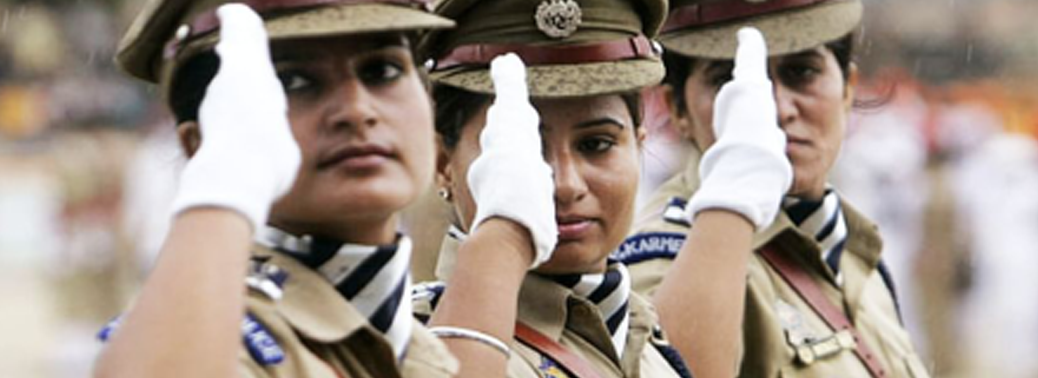
Why in News?
- Union Minister for Women and Child Development has recently inaugurated the “National Conference on Women in Police and Central Armed Police Forces (CAPFs)” which has been organised by Bureau of Police Research and Development (BPR&D).
Highlights of the Conference:
- The National Conference was to discuss and deliberate on the following two themes:
1.Cyber Stalking and Bullying of Women: Steps for Protection
2.Challenges faced by CAPF Women in Operational Areas
Few important issues related to women in Police which were highlighted during the Conference are:
1. Workplace harassment besides cyber crime.
2.Society should not look at the working women with bias and hold the performance of men to be the only benchmark for success.
3.Training of members of the Child Welfare Committees (CWC).
4.The need to train more female forensic investigators and cyber crime experts.
5.BPR&D was also advised to make a SoP for “One Stop Centre for Women”.
About BPR&D:
- The Government of India established the Bureau of Police Research and Development (BPR&D), under the Ministry of Home Affairs in the 1970s.
- It replaced the Police Research and Advisory Council (1966), with the primary objective of modernization of police force.
- In 1995 Government of India has entrusted Correctional Administration Work to the BPR&D. Thereby BPR&D has to ensure the implementation of prison reforms as well.
- The Government of India further decided to create a National Police Mission under the administrative control of BPR&D to transform the police forces in the country.
QS WORLD UNIVERSITY SUBJECT RANKINGS 2020
06, Mar 2020
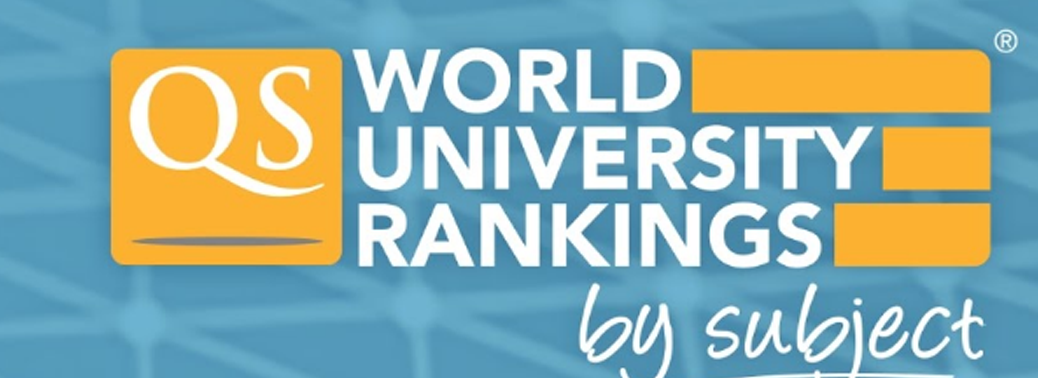
Why in News?
- The Quacquarelli Symonds (QS) World University Subject Rankings 2020 has been released recently by Quacquarelli Symonds (London). Quacquarelli Symonds is the world’s leading provider of services, analytics, and insight to the global higher education sector.
About the Rankings:
- QS uses four key metrics to compile the rankings including academic reputation, employer reputation, citations per paper and the h-index which measures how productive an institution’s research faculty are.
- 1,368 institutions have been ranked across 48 subjects in 5 broad categories across 159 locations.
- Top Rankers: Globally, Massachusetts Institute of Technology (MIT – USA) emerged as the world’s best-performing institution, achieving 12 number-one positions, followed by Harvard University (USA) with 11 number-one positions and University of Oxford (United Kingdom) with eight top ranked subjects.
India’s Performance as per the Index:
- The 2020 edition of the QS World University Subject Rankings has ranked as many as 26 departments of higher education institutions in India among the top 100 in the world in their respective subject category.
- As against 21 institutions getting ranked in 2019, the latest edition has seen 26 Indian departments entering the top-100 list for their subjects. All 26 departments are in institutions run by the Union government — IITs, IIMs, IISc and Delhi University.
- In terms of institutes and subjects, India’s highest-ranked programs included Indian Institute of Technology (IIT) Bombay’s Mineral & Mining Engineering program at 41st rank globally, shared jointly with the University of Delhi’s Development Studies program.
- IIT Bombay emerged with more top-100 ranks than any other Indian university in QS World University Rankings by Subject 2020.
PRIME MINISTER’S EMPLOYMENT GENERATION PROGRAMME
04, Mar 2020
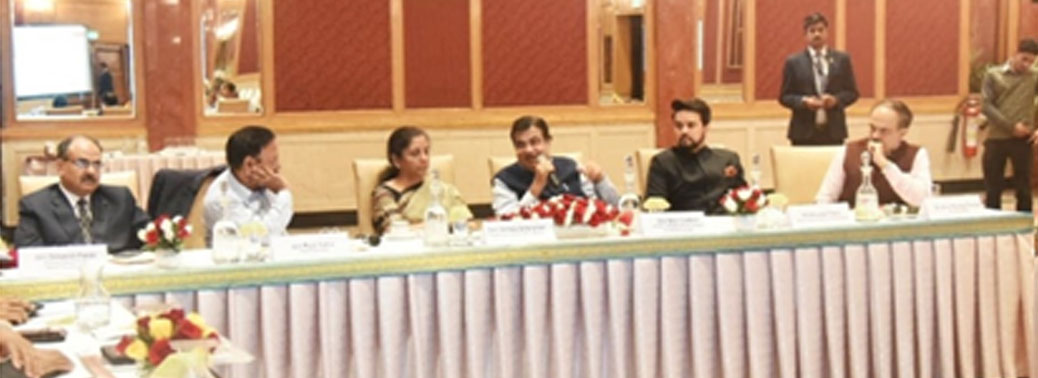
Why in News?
- A Meeting was held recently to review some of the key schemes of Ministry of Micro, Small and medium Enterprises (MSME) which generate large number of jobs with low capital investment.
Highlights:
- The focus of the meeting was on the Prime Minister’s Employment Generation Programme (PMEGP), a flagship scheme of the Ministry of MSME, and Credit Guarantee Fund Trust for Micro and Small Enterprises (CGTMSE).
- In addition, the issue of restructuring of stressed loans to MSMEs was also discussed to find a way forward to support MSMEs. The cut-off date for restructuring of loans to MSMEs has been extended up to 31st December 2020.
- The work done by the Banks in supporting setting up large number of enterprises under PMEGP over the past years, was commended, which has particularly seen a two-fold increase in last Financial Year when more than 73,000 micro enterprises were assisted.
- To give further boost to the scheme, the target in the current year has been increased to support the establishments of 80,000 units.
- Discussions were also held with Banks on increasing the reach of Credit Guarantee scheme. Government has set a target of increasing credit guarantee to Rs. 50,000 crores under this scheme, which is a jump of about 67% over the last year.
Prime Minister’s Employment Generation Programme:
- Prime Minister’s Employment Generation Programme (PMEGP) is a credit-linked subsidy programme introduced by the government of India in 2008.
- It promotes self-employment through setting up of micro enterprises, where subsidy up to 35 % is provided by the Government through Ministry of MSME for loans up to Rs. 25 lakhs in manufacturing and Rs 10 lakhs in service sector.
- The scheme is administered by Ministry of Micro, Small and medium Enterprises.
- The PMEGP Scheme is being implemented by Khadi and Village Industries Commission (KVIC) at the national level.
- At the State level, the Scheme is being implemented through State Khadi and Village Industries Commission Directorates, State Khadi and Village Industries Boards and District Industries Centres and banks.

Credit Guarantee Fund Trust for Micro and Small Enterprises (CGTMSE):
- The scheme was launched by the Government of India to make available collateral-free credit to the micro and small enterprise sector.
- Both the existing and the new enterprises are eligible to be covered under the scheme.
- The Ministry of Micro, Small and Medium Enterprises, GoI and Small Industries Development Bank of India (SIDBI), established a Trust named CGTMSE to implement the Credit Guarantee Fund Scheme for Micro and Small Enterprises.
- Since its inception, CGTMSE has facilitated easy access to credit from organized banking sector to first generation entrepreneurs in the Micro and Small Enterprises (MSE) sector.
- CGTMSE, in turn, provides guarantee to its registered Member Lending Institutions (MLIs) against the loans / credit facilities up to Rs. 100 lakh extended by them without taking any collateral security and / or third party guarantee.

INNER LINE PERMIT
03, Mar 2020
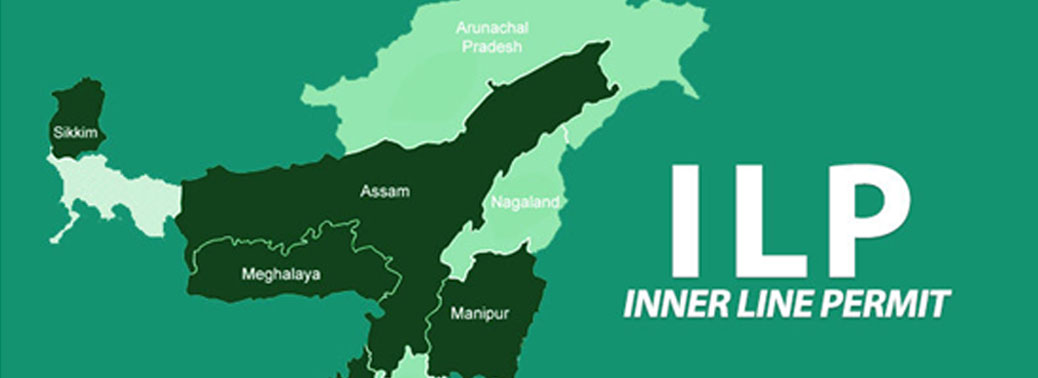
Why in News?
- The demand by Tribal organisations of Meghalaya for ILP system to restrict the entry of outsiders into the State has turned into violent protests across the state in the past few days.
What is an ILP?
- It is a document required by non- natives to visit or stay in a state that is protected under the ILP system.
- At present, four North Eastern states are covered under ILP namely, Arunachal Pradesh, Mizoram, Manipur and Nagaland.
- Both the duration of stay and the areas allowed to be accessed for any non-native are determined by the ILP.
- The ILP is issued by the concerned state government and can be availed both by applying online and in person.

Evolution of ILP:
- The Inner Line Permit is an extension of the Bengal Eastern Frontier Regulation Act 1873. The Britishers framed regulations restricting entry in certain designated areas.
- This was done to protect the Crown’s interest in certain states by preventing “British subjects” (Indians) from trading within these regions.
- In 1950, the term ‘British subjects’was replaced with the ‘Citizens of India’. Today, all non-natives require the permit. This was done to protect the indigenous tribal communities of these states from exploitation.
Is the rule applicable for Foreigners?
- An ILP is only valid for domestic tourists. For foreign tourists in:
- Manipur:No permit is required. But, have to register themselves.
- Mizoram:No permit is required. But, need to register.
- Nagaland:No permit is required. However, they need to register.
- Arunachal Pradesh:Tourists need a Protected Area Permit (PAP) or Restricted Area Permit (RAP) from the Ministry of Home Affairs, Government of India.
What is the significance of ILP?
- Preservation of indigenous culture and tradition.
- Prevents illegal migrants and encroachment by outsiders.
Should Meghalaya be brought under ILP?
- The ILP is considered the only mechanism to contain influx in the state. Influx is perceived as dangerous because it could upset the fragile demographic balance of the tribals of Meghalaya.
- Influx definitely is a matter of concern but it requires better solutions than the ILP, not instant solutions demanded by pressure groups.
POLICE AND PUBLIC ORDER IN NCT DELHI
28, Feb 2020

Why in News?
- The Delhi High Court has issued a series of directions to the Delhi police, the State government and other agencies for providing all necessary assistance to those affected by the violence in northeast Delhi.
What is the Issue?
- A key question now being raised is whether or not the government of the National Capital Territory of Delhi can take any action to bring law and order under control.
- The NCT of Delhi, under Article 239 AA, has been given a special status.
- It gives powers of law-making and administration to an elected legislature and the council of ministers. But, puts two subjects — public order and police— directly under the Union government, however, with exceptions- Two sections of Criminal Procedure Code (CrPC) —129 & 130 — give the Executive Magistrate certain powers relating to “unlawful assembly”.
- Under these two limited powers, the Executive Magistrate, who reports to the Chief Minister, can issue orders relating to public security.
What does CrPC 129 and 130 says?
- If a group is found in unlawful assembly under Section 129 CrPC, the Executive Magistrate can issue orders to these persons to disperse. If this fails, the magistrate can use the civil force — which is the police.
- If efforts under CrPC section 129 fail, the Executive Magistrate, under Section 130 CrPC, can call an officer of the armed forces of the Union to disperse the assembly. This section states that it can be invoked for “public security”.
- However, this Section empowers the officer to decide, on his own, the manner in which the unlawful assembly has to be dispersed by forces under his command.
How are these Powers Different from the powers of a Full-Fledged state?
- While public order and police are under the state list, the state government may request the Union government to make available armed forces to help restore public order.
- Even in circumstances where public disorder is not as serious as to fall in the category of an “internal disturbance” as defined in Article 355 of the Constitution, the Union Government may accede to the request.
- But, as per CrPC 130, except for the limited purpose of dispersing an “unlawful assembly” and arresting its members, neither the state government nor any authority under it has been conferred by the Constitution any legal right to call the armed forces while dealing with a public disorder or “internal disturbance”.
- Also, the Seventh Schedule of the Constitution states that use of the armed forces in the maintenance of public order is outside the purview of the states.
CABINET APPROVES BILL TO REGULATE SURROGACY
27, Feb 2020

Why in News?
- The Union Cabinet recently approved the Surrogacy (Regulation) Bill, 2020, allowing a “willing” woman to be a surrogate mother.
- It also proposed that the Bill would benefit widows and divorced women besides infertile Indian couples.
Provisions of the Bill:
What is prohibited?
- The Bill prohibits commercial surrogacy, but allows altruistic surrogacy.
- Altruistic surrogacyinvolves no monetary compensation to the surrogate mother other than the medical expenses and insurance coverage during the pregnancy.
- Commercial surrogacyincludes surrogacy or its related procedures undertaken for a monetary benefit or reward (in cash or kind) exceeding the basic medical expenses and insurance coverage.
When Surrogacy is Permitted?
- Surrogacy is permitted when it is:
- for intending couples who suffer from proven infertility;
- altruistic;
- not for commercial purposes;
- not for producing children for sale, prostitution or other forms of exploitation; and
- for any condition or disease specified through regulations.
- The intending couple should have a ‘certificate of essentiality’and a ‘certificate of eligibility’ issued by the appropriate authority.
When the Certificate is Issued?
- A certificate of essentiality will be issued upon fulfilment of the following conditions:
- a certificate of proven infertility of one or both members of the intending couple from a District Medical Board;
- an order of parentage and custody of the surrogate child passed by a Magistrate’s court; and Insurance coverage for a period of 16 months covering postpartum delivery complications for the surrogate.
- The certificate of eligibility to the intending couple is issued upon fulfilment of the following conditions:
- the couple being Indian citizens and married for at least five years;
- between 23 to 50 years old (wife) and 26 to 55 years old (husband);
- they do not have any surviving child (biological, adopted or surrogate); this would not include a child who is mentally or physically challenged or suffers from life threatening disorder or fatal illness; and
- Other conditions that may be specified by regulations.
What are the Eligibility Criteria for Surrogate Mother?
- To obtain a certificate of eligibility from the appropriate authority, the surrogate mother has to be:
- a close relative of the intending couple;
- a married woman having a child of her own;
- 25 to 35 years old;
- a surrogate only once in her lifetime; and
- Possess a certificate of medical and psychological fitness for surrogacy. Further, the surrogate mother cannot provide her own gametes for surrogacy.
What is the function of Appropriate Authorities?
- The central and state governments shall appoint one or more appropriate authorities within 90 days of the Bill becoming an Act.
- The functions of the appropriate authority include;
- granting, suspending or cancelling registration of surrogacy clinics;
- enforcing standards for surrogacy clinics;
- investigating and taking action against breach of the provisions of the Bill;
- Recommending modifications to the rules and regulations.
- Surrogacy clinics cannot undertake surrogacy related procedures unless they are registered by the appropriate authority.
- Clinics must apply for registration within a period of 60 days from the date of appointment of the appropriate authority.
What is the function of the Surrogacy Boards?
- The central and the state governments shall constitute the National Surrogacy Board (NSB) and the State Surrogacy Boards (SSB), respectively.
- Functions of the NSB include, (i) advising the central government on policy matters relating to surrogacy; (ii) laying down the code of conduct of surrogacy clinics; and (iii) supervising the functioning of SSBs.
What is the procedure for the Parentage and Abortion of Surrogate Child?
- A child born out of a surrogacy procedure will be deemed to be the biological child of the intending couple.
- An abortion of the surrogate child requires the written consent of the surrogate mother and the authorisation of the appropriate authority.
- This authorisation must be compliant with the Medical Termination of Pregnancy Act, 1971.
- Further, the surrogate mother will have an option to withdraw from surrogacy before the embryo is implanted in her womb.
What are the Offences and Penalties?
- The offences under the Bill include:
- undertaking or advertising commercial surrogacy;
- exploiting the surrogate mother;
- abandoning, exploiting or disowning a surrogate child; and
- Selling or importing human embryo or gametes for surrogacy.
- The penalty for such offences is imprisonment up to 10 years and a fine up to 10 lakh rupees.
- The Bill specifies a range of offences and penalties for other contraventions of the provisions of the Bill.
What are the recommendations of the Rajya Sabha Select committee?
- The major changes recommended by the Committee include
- It recommended that a surrogate mother need not be a “close relative”.
- It also advocated omission of the five-year time limit before seeking surrogacy.
- allowing single women (widow or a divorcee and Persons of Indian Origin) to avail of surrogacy,
- Increasing insurance cover for the surrogate mother from the 16 months proposed in the Bill to 36 months.
Why such recommendations were given?
- Requiring the surrogate mother to be a “close relative” potentially restricts the availability of surrogate mothers, affecting genuinely needy persons.
- Deleting the definition of “infertility” as “the inability to conceive after five years of unprotected intercourse” is because it is too long a period for a couple to wait for a child.
- However the Surrogacy (Regulation) Bill, 2019 is yet to be passed by the Rajya Sabha.
NOT FAIR, JUST OR REASONABLE
26, Feb 2020
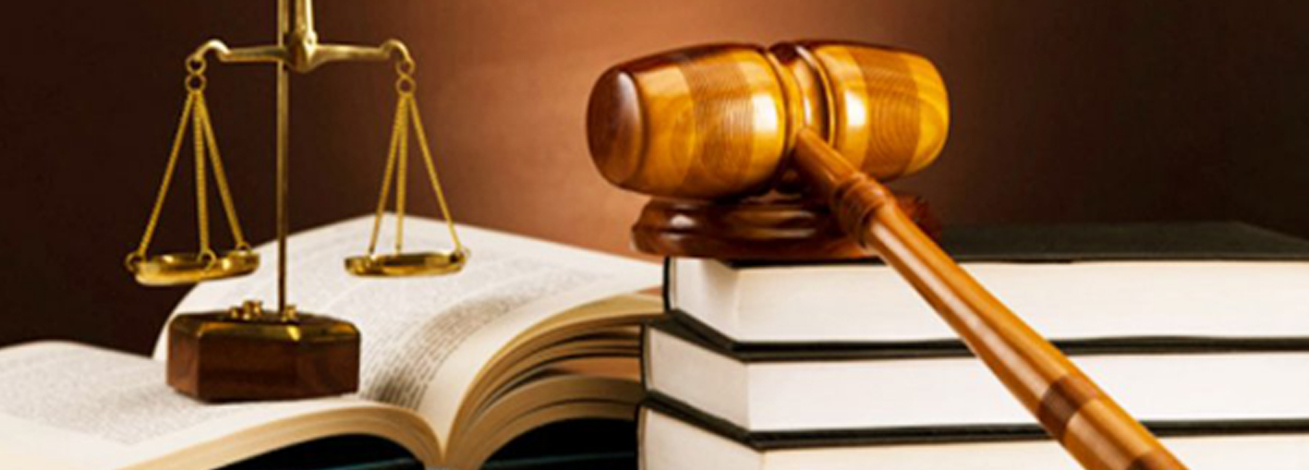
Why in News?
- Numerous political leaders and activists have been arrested in the state of Jammu and Kashmir in the name of Public safety.
- Here this article highlights the lack of procedural fairness with various Preventive Detention Laws in India including Jammu and Kashmir Public Safety Act, 1968.
About Jammu & Kashmir Public Safety Act, 1978
- The Jammu & Kashmir Public Safety Act, 1978 is a preventive detention law and constitutional protection provided under Article 22 shall not apply to those charged under PSA.
- Detention orders under the Act can be passed by Divisional Commissioners or District Magistrate if they are satisfied that any person
- May hamper or obstruct security of the state
- Disturb the maintenance of Public Order
- To prevent instances of smuggling or helping to smuggle timber or liquor in the state.
- is a foreigner within the meaning of the Foreigners Act
What happens after a person is charged under PSA?
- The DM communicates to the person within five to ten days in writing the reason for the detention and becomes the only formal communication.
- This communication is important because it is on the basis of it that the detained person gets an opportunity of making legal representation against the order in High Courts or Supreme Court under Article 226 and 32 respectively.
- However, the DM also has the discretion not to disclose all the facts pertaining to detention, if according to the officer such facts are against “public interest”.
- The District Magistrate can call the person charged under PSA to record his statement but legal representation through a lawyer is not allowed.
Referring of Case to Advisory Board:
- The DM has to place the detention order within four weeks before an Advisory Board including representation if any made by the person detained under PSA.
- The Advisory Board may call the person charged under PSA for personal representation to record his/her statement. However, legal representation by another lawyer before Advisory Board is not allowed.
- Within Six Weeks from the date of detention, the Advisory Board shall submit its report to the government, which will determine if the detention is in public interest.
Decision of Advisory Board:
- The Board may either allow for further detention or allow for release of the person concerned whereby the Government shall revoke the detention order.
- In case, the Advisory Board calls for further detention, the state government can detain for a maximum of
- 2 years– if accused was detained to obstruct Security of the State and
- 1 year– if the accused was detained to disturb Public Order.
- Decisions of the Advisory Board shall be binding on the State Government
Need for Preventive Detention Laws:
- Preventive detention laws exist at both the national and State levels and are intended to serve as effective measures to prevent the occurrence of crime.
- These different laws adopt a similar logic as under these laws, executive officers such as District Magistrates or Commissioners of Police are empowered to pass orders for arrest and to take persons into custody.
- These powers can be exercised if the officers are “satisfied” that the person’s conduct is posing a risk to safety and security of state or might hamper public order.
- For instance, the National Security Act of 1980 permits arrest and detention of persons when it is in the interest of maintaining “public order”, which can occur even without any allegations of the person breaking any existing laws.
- Similarly people can be detained under J&K PSA if in the opinion of DM or Divisional Commissioners they are a threat to security of state or they can disturb public order.
Lack of Procedural Fairness:
- Such laws avoid criminal trial like other regular criminal proceedings because for criminal trials you need to inform the accused of the grounds of crime.
- Under preventive detention laws, there is no need to inform the accused immediately of grounds of arrest.
- Arrested person need not be produced before Court within 24 hours as per normal norms.
- Subsequent checks and scrutiny is heavily guarded by state authorities and chances of unfairness in such proceedings are very high.
- There is no judicial oversight where detention beyond three months is not sought. And even in those cases which go to a Tribunal comprising judges, there is no public hearing involved and no guaranteed oral hearing for the person detained.
- Further, no publicly available orders or judgments are published about the ultimate decision.
- Even legal assistance is somewhat restrained and this goes against the basic human rights of person detained under preventive detention laws.
- The only opportunity lies in filing writ petitions in High Court or Supreme Court for release of person.
- At times, preventive detention laws are used to cover normal crimes as this largely reduces the legal assistance of detainees.
Conclusion:
- This article concludes by saying that the procedures of preventive detention laws in India practically sacrifice due process interests at the altar of crime control, and this bargain is ill-suited to justice, no matter how grave the risks.
- The government should think towards making certain changes in preventing detention laws making it less draconian and providing for human rights of the accused.
- Right of Legal Representation through a lawyer of detainee’s choice must be provided in PSA.
- It must be ensured that parallel proceedings are not initiated under preventing detention laws and regular criminal proceedings. The law must ensure that if charges have been framed under PSA, then regular criminal charges must be either withdrawn or transferred under PSA.
- It must be ensured that if writ petition is accepted by High Court or Supreme Court against detention of a person under preventing detention laws, such writ petition must be entertained within a period of 15 days. This will expedite the legal process providing for bail.
1 YEAR OF PRADHAN MANTRI KISAN SAMMAN NIDHI (PM-KISAN) SCHEME
26, Feb 2020
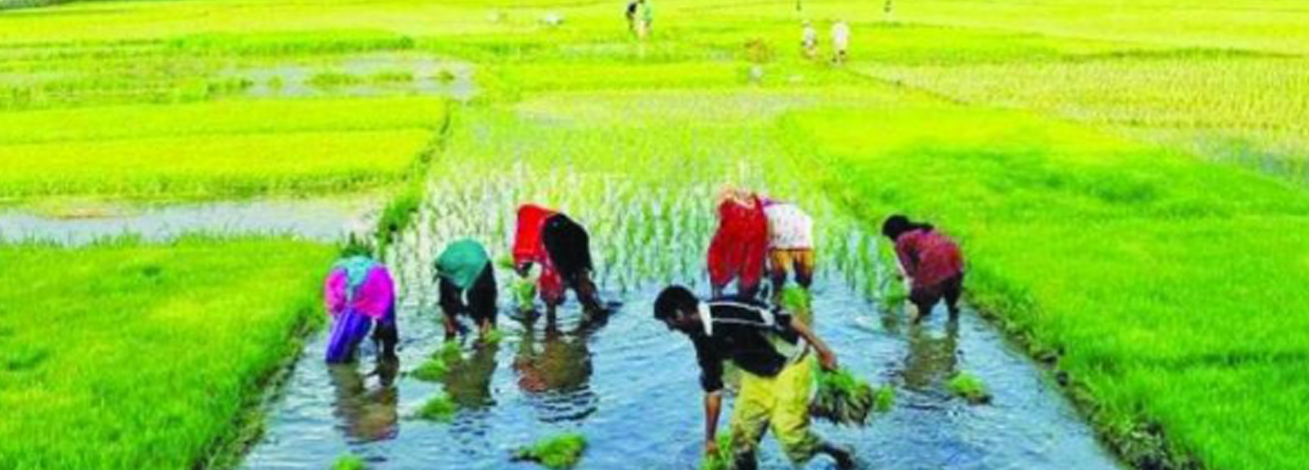
Why in News?
- The Ministry of Agriculture & Farmers’ Welfare observed the 1st anniversary of the Pradhan Mantri Kisan Samman Nidhi (PM-KISAN) Scheme on 24th February.
- The PM-KISAN was launched on February 24 in 2019.
About PM-KISAN Scheme:
- Pradhan Mantri Kisan Samman Nidhi (PM-KISAN) is a Central Sector Scheme with 100% funding from the Government of India.
- It is being implemented by the Ministry of Agriculture and Farmer’s Welfare.
- Vulnerable landholding farmer families, having cultivable land upto 2 hectares, will be provided direct income support at the rate of Rs 6,000 per year.
- Income support will be transferred directly into the bank accounts of beneficiary farmers, in three equal instalments of Rs 2,000 each.
- All states are implementing the scheme, except West Bengal.
- It intends to supplement the financial needs of the Small and Marginal Farmers (SMFs) in procuring various inputs to ensure proper crop health and appropriate yields, commensurate with the anticipated farm income at the end of each crop cycle.
- The entire responsibility of identification of beneficiary farmer families rests with the State / UT Governments.
PM-KISAN Mobile App:
- It was developed and designed by the National Informatics Centre in collaboration with the Ministry of Electronics and Information Technology.
- The farmers can view the status of their application, update or carry out corrections of their Aadhaar cards and also check the history of credits to their bank accounts.
Other Important Income Support Schemes for Farmers:
-
1. Rythu Bandhu scheme (Telangana)/Farmers’ Investment Support Scheme (FISS).
- It is a welfare program to support farmer’s investment for two crops a year.
- The government is providing 58.33 lakh farmers, ?4000 per acre per season to support the farm investment, twice a year, for rabi and kharif seasons.
- This was the first direct farmer investment support scheme in India, where the cash is paid directly.
- State Government of Odisha aims to lend farmers with an all-inclusive and flexible support system, ensuring accelerated agricultural prosperity.
- It will cover 92% of the small and marginal farmers of the State. An amount of Rs.10,000 per family at the rate of 5,000 for Kharif and Rabi shall be provided as financial assistance for taking up cultivation.
- The farmers will have complete independence to take up interventions as per their needs.
- This component is not linked to extent of land owned and will greatly benefit share croppers and actual cultivators most of whom own very small extent of land.
2. Krushak Assistance for Livelihood and Income Augmentation (KALIA):
TARDY PROGRESS IN FARM SCHEMES
25, Feb 2020
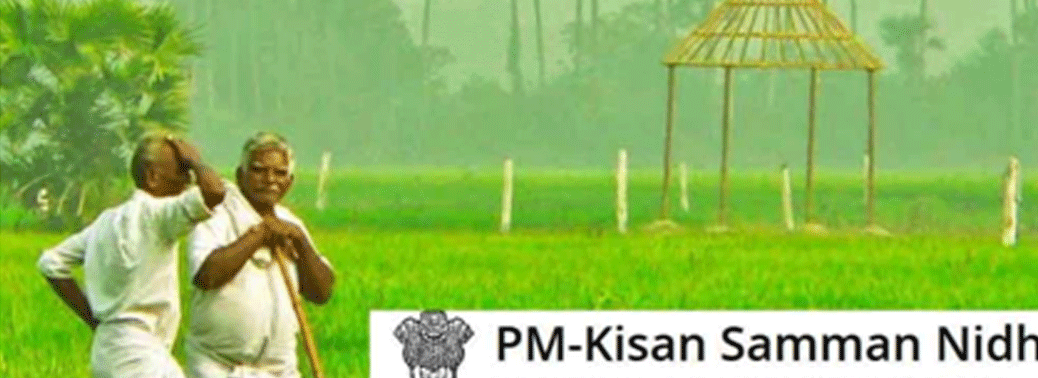
Why in News?
- Recently, Finance Ministry has expressed its displeasure over the tardy progress made by banks in seeding all PM-KISAN beneficiaries with Kisan Credit Card (KCC).
Background info:
- To enable universal access to Concessional Institutional credit, Government of India has initiated a drive in Mission Mode for saturating all PM-KISAN beneficiaries with Kisan Credit Card (KCC).
- This will help all such farmers to get short term loan for crop & animal/fish rearing at a maximum interest of 4% on timely repayment.
- However, there has not been much progress in this seeding process. Accordingly, the Finance Ministry has expressed displeasure over the tardy progress made by banks, and asked them to double their efforts.
About PM-KISAN Scheme:
- With a view to augment the income of the Small and Marginal Farmers (SMFs), the government has launched the new Central Sector Scheme, namely, “Pradhan Mantri Kisan Samman Nidhi (PM-KISAN)”.
- Under the scheme, ₹6,000 per year will be provided to farmers holding cultivable land of up to two hectares.The PM-KISAN scheme aims to supplement the financial needs of the SMFs in procuring various inputs to ensure proper crop health and appropriate yields, commensurate with the anticipated farm income at the end of each crop cycle.
- This would also protect them from falling in the clutches of moneylenders for meeting such expenses and ensure their continuance in the farming activities.
About KISAN Credit Card Scheme:
- The Kisan Credit Card (KCC) scheme was introduced in 1998 for issue of Kisan Credit Cards to farmers so that farmers may use them to readily purchase agriculture inputs such as seeds, fertilizers, pesticides etc. and draw cash for their production needs.
- The Kisan Credit Card Scheme is to be implemented by Commercial Banks, RRBs, Small Finance Banks and Cooperatives.
- The farmers eligible under the KCC scheme include small farmers, marginal farmers, share croppers, oral lessee and tenant farmers. The Self Help Groups (SHGs) or Joint Liability Groups (JLGs) are also eligible for availing benefits under the scheme.
JUVENILE JUSTICE (CARE AND PROTECTION OF CHILDREN) ACT, 2015
24, Feb 2020
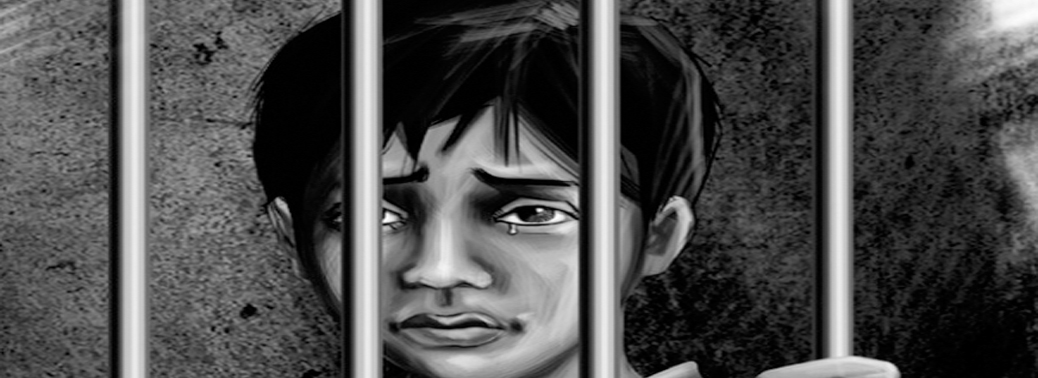
Why in News?
- Recently, a Group of Ministers (GoM) chaired by the Home Minister met to discuss proposed amendments to the Juvenile Justice (Care and Protection of Children) (JJ) Act, 2015.
About Juvenile Justice (Care and Protection of Children) Act, 2015:
- The Juvenile Justice (Care and Protection of Children) Act, 2015 replaced the Juvenile Justice (Care and Protection of Children) Act, 2000 to comprehensively address children in conflict with law and children in need of care and protection.
- The Act changes the nomenclature from ‘juvenile’ to ‘child’ or ‘child in conflict with law’. Also, it removes the negative connotation associated with the word “juvenile”.
- It also includes several new and clear definitions such as orphaned, abandoned and surrendered children; and petty, serious and heinous offences committed by children.
- Included special provisions to tackle child offenders committing heinous offences in the age group of 16-18 years.
- It mandates setting up Juvenile Justice Boards and Child Welfare Committees in every district. Both must have at least one woman member each.
- A separate new chapter on Adoption to streamline adoption procedures for an orphan, abandoned and surrendered children.
- Also, the Central Adoption Resource Authority (CARA) was granted the status of a statutory body to enable it to perform its function more effectively.
- The Act states that the adoption of a child is final on the issuance of an adoption order by the court. Currently, there are 629 adoption cases pending in various courts.
- The Act included several new offences committed against children (like, illegal adoptions, use of child by militant groups, offences against disabled children, etc) which are not adequately covered under any other law.
- All Child Care Institutions, whether run by State Government or by voluntary or non-governmental organisations are to be mandatorily registered under the Act within 6 months from the date of commencement of the Act.
What is CARA?
- Central Adoption Resource Authority (CARA) is a statutory body of Ministry of Women & Child Development, Government of India.
- It functions as the nodal body for adoption of Indian children and is mandated to monitor and regulate in-country and inter-country adoptions.
- CARA is designated as the Central Authority to deal with inter-country adoptions in accordance with the provisions of the Hague Convention on Inter-country Adoption, 1993, ratified by Government of India in 2003.
- CARA primarily deals with adoption of orphan, abandoned and surrendered children through its associated /recognised adoption agencies.
What does the New Bill Proposes?
- The Bill provides that instead of the court, the district magistrate will issue adoption orders to address the high pendency of adoption cases.
- The Bill also seeks to transfer all pending matters related to adoption before any court to the district magistrate having jurisdiction over the area.
- The proposed amendments intend to expedite proceedings.
Who are the Group of Ministers?
- Groups of Ministers (GoMs) have been constituted from time to time to look into different issues/subjects.
- These are ad hoc bodies formed to give recommendations to the cabinet on certain emergent issues and critical problem areas.
- Ministers heading the concerned ministries are inducted into the relevant GoMs and when the advice is crystallised they are disbanded.
- Some of these GoMs have been also empowered to take decisions on behalf of the Cabinet known as Empowered Groups of Ministers (EGoMs).
- But with time the constitution of a large number of GoMs has resulted in many GoMs not being able to meet regularly to complete their work thus leading to significant delays on many major issues. Thus all the Groups of Ministers (GoMs) and Empowered Groups of Ministers (EGoMs) were abolished in 2014.
- Further in 2015, 16 informal Groups of Ministers (GoMs) were formed to discuss key issues of the country.
THE MISSING PIECE IN INDIA’S DEFENCE JIGSAW PUZZLE
21, Feb 2020
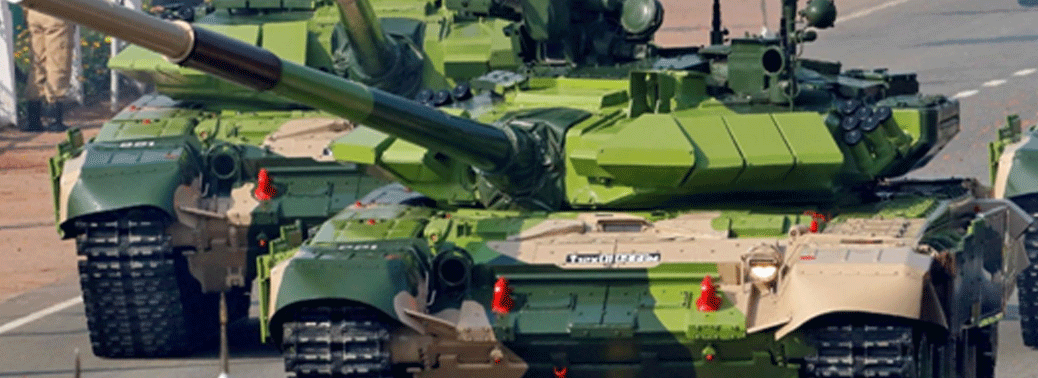
- Despite being the 4thlargest spender on defence in the world, India does not have a defence white paper laying out a realistic framework for strategic requirement in the changing geopolitical scenario.
Current Scenario: How is India Planning?
- Currently India’s defence planning is lopsided towards the 2-front threats from Pakistan and China and hence lacks a strategic vision.
- Notwithstanding, the 2-front threat, India’s defence plans should clearly lay out requirements based on
- Shifting centre of gravity of geopolitics
- Changing technology (cyber warfare)
- Emerging strategies like proxy wars etc.
Shortcomings in the Current Planning System:
1. Overemphasis on 2-front Threat:
- A look at the current acquisitions show that maximum focus has been laid on 2-front threat.
- For instance, the recent deals for acquiring Rafale fighter jets, 200 Kamov Ka-226 light utility helicopters from Russia, S-400 Triumf Air Defence System, Poseidon-8I Maritime Reconnaissance Aircraft, Apache Attack Helicopters, Romeo Multi Mission Helicopters for the Navy etc reflect this overemphasis on Pakistan and China.
2. Lack clarity
- A look at the plans of the armed forces indicates that the operational requirements are laid out towards generic objective and lack clarity.
What is needed?
3. Modernisation
- As a thumb rule any modern Armed Forces should have 1/3 rd of its equipment in the vintage category, 1/3 rd in the current category and 1/3 rd in the state of the art category.
- Indian Army currently has only 8% state-of-the-art.
- Thus India should plan for technologies of the future including artificial intelligence, robotics, bio-technology, modern weapons like hypersonic technology which are said to be fulcrum of arms race in 21st
4. Clear objectives in line with changing geopolitics:
- It is well known that the geopolitical centre of gravity has shifted from Atlantic in the 20thcentury to Indo-Pacific in the 21st.
- India has also articulated for free and open indo-pacific in its construct of Indo-Pacific Policy.
- While China’s growing assertiveness in Indo-Pacific is a reality, it is not necessarily confrontational in nature.
5. Due Consideration to the Neighbourhood
- Given that China is a formidable opponent in the neighbor-hood and projects such as BRI involve the sensitive sovereignty issues, India should clearly assess the nature of BRI (whether economic or military) and plan accordingly instead of a conflict-prone approach.
- India’s defence white paper should keep into account that Chinese spheres of influence in South Asia, South East Asia and West Asia.
- Our defence white paper should clearly differentiate between areas where India and China can peacefully co-exist and conflict zones.
Conclusion:
- India should prepare a defence white paper that would be more judicious in planning its resources by clearly laying out more definitive approach keeping in view the above challenges.
ASSISTED REPRODUCTIVE TECHNOLOGY REGULATION BILL 2020
20, Feb 2020
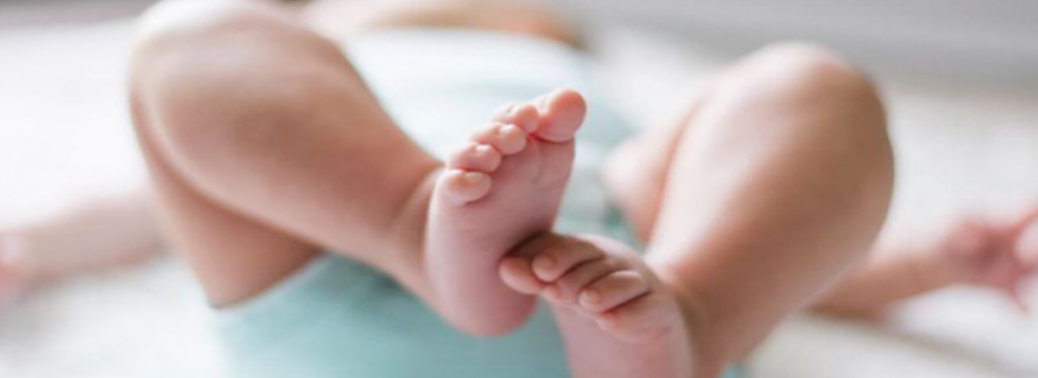
Why in News?
- The Union Cabinet has recently approved the Assisted Reproductive Technology Regulation Bill 2020.
What is Assisted Reproductive Technology (ART)?
- Assisted reproductive technology includes medical procedures used primarily to Address Infertility.
- This subject involves procedures such as in vitro fertilization, intracytoplasmic sperm injection, cryopreservation of gametes or embryos, and/or the use of fertility medication.
What does the Bill Says?
- The bill makes provisions for safe and Ethical Practice of assisted reproductive Technology Services in the country.
- Under it, the National Board shall lay down code of conduct to be observed by persons working at clinics, to set the minimum standards of physical infrastructure, laboratory and diagnostic equipment and expert manpower to be employed by clinics and banks.
- The State Board shall have the responsibility to follow the policies and plans laid by the National Board for clinics and Banks in the State.
- The Bill also provides for National Registry and Registration Authority to maintain a Central database and assist the National Board in its functioning.
- The Bill also proposes for a stringent punishment for those practicing sex selections, sale of human embryos or gametes, running agencies/rackets/organisations for such unlawful practices.
What are the Possible Impacts?
- Assisted Reproductive Technology (ART) has given hope to a multitude of persons suffering from infertility, but also introduced a plethora of legal, ethical and Social Issues.
- Clinics in India offer nearly all the Assisted Reproductive Technology (ART) services—gamete donation, intrauterine insemination (IUI), In-Vitro Fertilization (IVF), ICSI, PGD and gestational surrogacy.
- ART Regulation Bill 2020 follows the introduction in Parliament of the Surrogacy Regulation Bill 2020, and the approval of the Medical Termination of Pregnancy Amendment Bill 2020. These legislative measures are path breaking steps to protect women’s reproductive rights.
PRIVATE MEMBER BILL PROPOSING TWO-CHILD NORM
20, Feb 2020
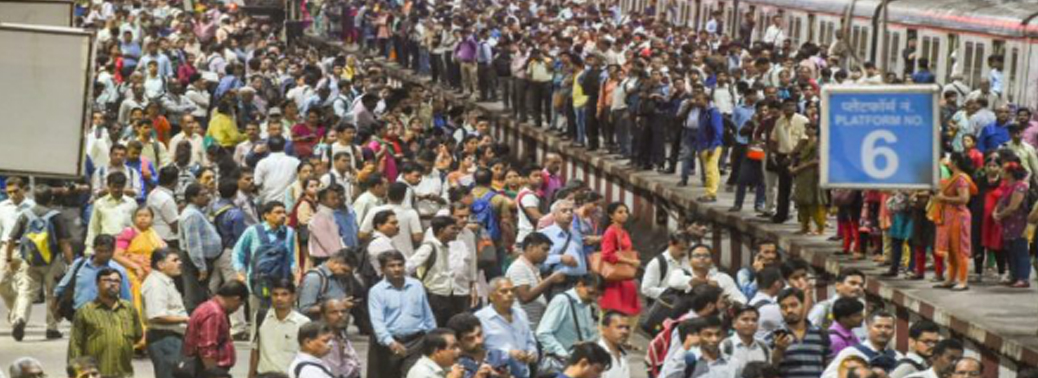
Why in News?
- A Private Member of our parliament has recently introduced a Constitution Amendment Bill in the Rajya Sabha which proposes incentives in taxation, education and employment for people who limit their family size to two children.
- Thus, the bill introduces disincentives to the families with children more than two in the above factors.
Key Features of the Bill:
- The Bill proposes for the incorporation of a new provision — Article 47A (Duty of the State to promote small family norm) — in Part IV (Directive Principles of the State Policy) of the Constitution.
- The Bill also intends to offer incentives in taxes, employment, education and priority in social benefit schemes and school admissions to people who keep their family limited to two children.
- The proposed insertion of Article 47A intends to withdraw all concessions from people who fail to adhere to the ‘small-family-norm’.
India’s Present Scenario:
- Presently, six states including Haryana, Rajasthan, Madhya Pradesh, Andhra Pradesh and Himachal Pradesh have made the two-child norm mandatory for all panchayat members.
- The Supreme Court has also upheld the provision in several states that debars members with more than two children from contesting and holding panchayat posts.
Why such a norm has been Proposed?
- India’s population has already crossed 125 crores and is expected to surpass the world’s most populous nation-China in the next couple of decades.
- The growing population is also expected to cause burden on the already over-exploited natural resources of India.
- National Population Control Policy (2000) has been introduced, but its success has not been seen on ground.
- The National Commission to Review the Working of the Constitution, headed by M.N. Venkatachaliah had also recommended for Article 47A to be inserted into the Constitution to control population explosion
Shortcomings of the Two-Child Norm:
- The problems like gender imbalance, undocumented children, etc. faced by China (as a result of the one-child policy) might be experienced by India.
- India’s birth-rate is slowing down to sustainable levels. In 2000, the fertility rate was still relatively high at 3.2 children per woman. By 2016, that number had already fallen to 2.3 children.
- The restricted child policy will create a shortage of educated young people needed to carry on India’s technological revolution. India might also lose its advantage of Demographic Dividend.
NOTE:
- Entry 20-A in List III (Concurrent List) of the 7thSchedule deals with population control and family planning. This provision was added through the 42nd Constitutional Amendment 1976. Thus it empowers both Centre and state to frame policies in such matters.
- Any Member of Parliament (MP) who is not a minister is referred to as a private member. A bill introduced by such a member is known as private Member Bill.14 private member’s bills have become law so far in India.
DEPORTATION LAWS IN INDIA
19, Feb 2020

Context:
- British MP, Debbie Abrahams, who is also the Chair of the All-Party Parliamentary Group for Kashmir, was denied entry into India as her e-visa had been “rejected” by India.
The Issue:
- India has denied entry to a UK Labour MP who was critical of the government’s controversial decision to revoke Kashmir’s special status last year.
- Indian officials have clarified that the British lawmaker Debbie Abrahams, who was denied entry into the country on Monday, did not hold a valid visa.
- This was done after various media organisations claimed that Abrahams was deported.
- The Ministry of External Affairs also responded that, on account of her involvement in activities against India’s national interest, her visa had been revoked.
- In this case, the government had claimed that this instance of denial of entry is not same as deportation as the British MP has claimed
What does Rejection of Visa Mean?
- Grant, revocation, or rejection of a visa is sovereign right of a country.
- Any foreign national who remains in any area in India for a period exceeding the period for which the visa was issued to him can be proceeded against under Section 14 of the Foreigners Act, 1946.
- A foreigner who enters into or stays in any area in India without the valid documents required for such entry or for such stay, as the case may be, can also be proceeded against under Section 14A (b) of the Foreigners Act, 1946.
What is deportation? And what are its types?
- Deportation is the expulsion of a person or group of people from a place or country. It can be done by a country, when a foreigner violates the immigration laws of the country.
- It applies equally to nationals and Foreigners.
- External Deportation:
- All countries reserve the right to deport persons without right of abode even those who are long-time residents or possess permanent residency.
- In general, foreigners who have committed serious crimes, entered the country illegally, overstayed or broken the conditions of their visa, or otherwise lost their legal status to remain in the country may be administratively removed or deported.
- In some cases, even citizens can be deported; some of the countries in the Persian Gulf have deported their own citizens. They have paid the Comoros Islands to give them passports and accept them.
- Internal Deportation:
- Deportation can also happen within a state, when (for example) an individual or a group of people is forcibly resettled to a different part of the country.
- If ethnic groups are affected by this, it may also be referred to as population transfer.
- The rationale is often that these groups might assist the enemy in war or insurrection.
- For example, the American state of Georgia deported 400 female mill workers during the Civil War on the suspicion they were Northern sympathizers.
- Colonial Deportations:
- Deporting individuals to an overseas colony is a special case that is neither completely internal or external.
- For example, from 1717, Britain deported around 40,000 religious objectors and criminals to America before the practice ceased in 1776.
- Jailers sold the criminals to shipping contractors, who then sold them to plantation owners. The criminal was forced to work for the plantation owner for the duration of their sentence.
- After Britain lost control of America, Australia became the destination for criminals deported to British colonies.
- Criminal Deportation:
- criminal deportation is where a foreigner is ordered to be deported or physically removed from a country by reason of such person’s criminal conduct or activity.
What are the regulations applicable to foreigners in India?
- The extent Acts dealing with entry, stay and exit of foreign nationals in the country are:
- Passport (Entry into India) Act, 1920
- Foreigners Act, 1946
- Registration of Foreigners Act, 1939
- The Passport (Entry in India) Act, 1920
- It prescribes specific authorization of foreign nationals on their valid travel documents/passports for allowing entry into the country.
- Under this Act, foreigners coming to India are required to get a visa from Indian Missions/Posts.
- The Foreigners Act, 1946
- It regulates the entry of foreigners into India, their presence and their departure.
- The Registration of Foreigners Act, 1939 and the Registration of Foreigners Rules, 1992
- It mandates that certain categories of foreigners whose intended stay in India for more than the specified period, or as provided in their visa authorization, are required to get themselves registered with the Registration officer.
Power to grant or refuse permission to enter India under Foreigners Act, 1946:
- Permission to enter shall be refused if the concerned authority (Central Government officer) is satisfied that-
- The foreigner is not in possession of a valid passport or visa for India or has not been exempted from the possession of a passport or visa;
- He is a person of unsound mind or a mentally defective person;
- He is suffering from a infectious disease in consequence of which, in the opinion of the Medical Officer of the port, the entry of the foreigner is likely to prejudice public health;
- He has been sentenced in a foreign country for an extradition offence within the meaning of the Indian Extradition Act, 1903 (15 of 1903);
- His entry is prohibited either under an order issued by a competent authority or under the specific orders of the Central Government.
- The civil authority may attach such conditions as it thinks fit to grant or refuse permission to enter which includes, the interests of public safety.
WOMEN TO GET PERMANENT COMMISSION IN INDIAN ARMED FORCES
18, Feb 2020
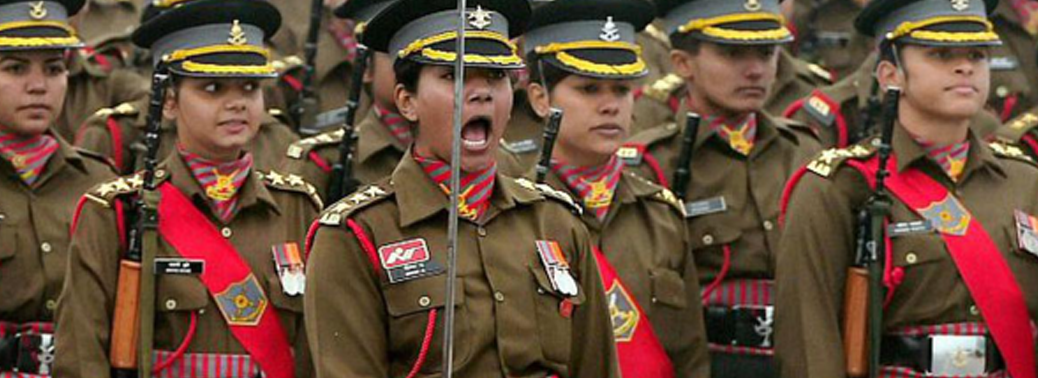
Why in News?
- The Supreme Court recently declared that Short Service Commission (SSC) women officers are eligible for permanent commission and command posts in the Army irrespective of their years of service.
What is the Issue?
- The verdict came on a nearly 10-year-old appeal filed by the government against a 2010 decision of the Delhi High Court to grant SSC women officers permanent commission.
- The induction of women officers in the Army started in 1992. Recruits under the Women Special Entry Scheme (WSES) had a shorter pre-commission training period than their male counterparts who were commissioned under the Short Service Commission (SSC) scheme.
- In 2006, the WSES scheme was replaced with the SSC scheme, which was extended to women officers. They were commissioned for a period of 10 years, extendable up to 14 years.
- According to government, isolation and hardships would eat into their resolve and they would have to heed to the call of pregnancy, childbirth and family. Women ran the risk of capture by enemy and being taken prisoner of war.
What is the SCs Verdict?
- The Supreme Court dismissed the Union government’s submissions that women are physiologically weaker than men as a “sex stereotype”.
- It also declared that Short Service Commission (SSC) women officers are eligible for permanent commission and command posts in the Army irrespective of their years of service.
Why this Verdict?
- The court found the remarks in the note not only constitutionally invalid but discriminatory, affecting the dignity of women officers.
- Article 15 states that the State shall not discriminate against any citizen on grounds only of religion, race, caste, sex, place of birth or any of them.
- So, the SC ordered not to discriminate women on the basis of gender and ordered to appoint them in command posts in the Army.
Way Forward:
- Moreover, to cast aspersion on women’s abilities on the ground of gender is an affront not only to their dignity as women but to the dignity of the members of the Indian Army – men and women – who serve as equal citizens in a common mission.
MADHYA PRADESH GRAPPLES WITH SPIRALLING NEONATAL DEATHS
17, Feb 2020
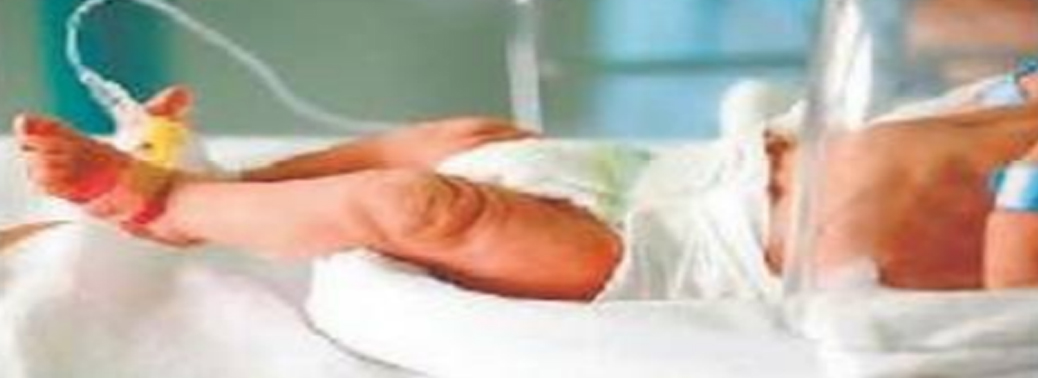
Why in News?
- According to the National Health Mission (NHM), Madhya Pradesh has recorded the highest percentage of newborn deaths of 11.5% against the total admissions to government-run sick newborn care units (SNCUs).
What is Neonatal Mortality Rate (NMR)?
- NMR is the probability of dying during the first 28 days of life, expressed per 1,000 live births.
- According to the Sample Registration System, neonatal deaths in India mainly occur owing to premature births and low birth weight (35.9%), pneumonia (16.9%), birth asphyxia and birth trauma (9.9%), other non-communicable diseases (7.9%), diarrhoea (6.7%), congenital anomalies (4.6%) and infections (4.2%).Under the United Nations’ Sustainable Development Goals, each country, including India, has aimed to bring down neonatal mortality to at least 12 per 1,000 live births. In 2018, it stood at 23 for India.
What does the Report Says?
- Although admissions of neonates in the Madhya Pradesh have dropped from April 2017 to December 2019 — remaining lower than West Bengal, Rajasthan and Uttar Pradesh — the percentage of deaths at 12.2% surpassed Bihar’s last year.
- In Bhopal, the capital city of Madhya Pradesh, one in every five children admitted to a unit died in the three years — the highest death percentage of 19.9% in the State, ten times above the NHM’s mandated key performance indicator of below 2%.
Why the Surge Happened?
- Staff crunch, low community referrals, absence of a special neonatal transport service to health centres, and the non-availability of enough units to cater to increasing institutional deliveries had contributed to the spike in the percentage of deaths.
- Meanwhile, West Bengal, where 34,344 neonatal deaths occurred in the period, the most in the country, the declining percentage of deaths from 9.2% in 2017 to 8.9% in 2019 coincided with a slump in admissions.
- The health of children and mothers is not tracked in a systematic way by one platform, and services are often given randomly.
What are the Challenges Faced?
- As the units are located at hospitals with the delivery load of more than 3,000 infants per year, mostly in District Headquarters, transporting neonates on time is crucial as they may succumb to fatal diseases within hours.
- Although there is a dedicated service to transport pregnant women to hospitals from remote areas, there is none for neonates, who are mostly dependent on the 108 ambulance service.
- The major challenge, however, remained community referrals, significantly aided by ASHA workers — only one in ten sick neonates born outside a hospital is taken to an SNCU. This is due to the absence of transport, inability to identify a disease by parents, and lack of awareness.

Way Forward:
- Measures should be taken to ensure early registration of pregnancies, and for early detection of high risk cases, improving institutional deliveries, providing skill development training to health staff.
- Education campaign should be taken up to aware the mother of the merits of antenatal care, institutional delivery, importance of exclusive breast feeding, immunization, home care for diarrhoea; all these are meant to create awareness among family members to provide support to women during pregnancies and deliveries.
TWO CHILD NORMS DEBATE
15, Feb 2020

Why in News?
- Shiv Sena Rajya Sabha member Anil Desai introduced a Private Member’s Bill in the Rajya Sabha.
Highlights:
- The Bill proposes incentives in taxation, education and employment for people who limit their family size to two children.
- The Bill has sought the incorporation of a new provision, Article 47A in Part IV of the Constitution, to withdraw all concessions from people who fail to adhere to the “small-family” norm.
- The Bill aims to amend the Constitution in order to incentivise limiting families to two children by offering tax concessions, priority in social benefit schemes and school admissions, among other things.
- The Bill proposes the insertion of Article 47A after Article 47 of the Constitution.
- Article 47A says the following: The State shall promote small family norms by offering incentives in taxes, employment, education etc. to its people who keep their family limited to two children and shall withdraw every concession from and deprive such incentives to those not adhering to small family norm, to keep the growing population under control.
Need for Two Child Norms:
- India’s population rate has overrun the ability of the environment to cater to. This has caused stress on the limited resources of the country.
- The higher population has not resulted in higher productivity rate in terms of creation of wealth instead the per capita wealth has depriciated.
- Women are forced to undergo multiple pregnancies over a short period of time. This has created adverse effect on their health leading to their death in some cases.
Drawbacks of Two Child Norms:
- It will increase the cases of mass sterilization especially by poor women belonging to backward area. This may result in deaths of women due to improper procedures.
- The replacement rate of the old population will decrease significantly due to which the number of working age population will reduce drastically.
NATIONAL LITERACY MISSION
15, Feb 2020
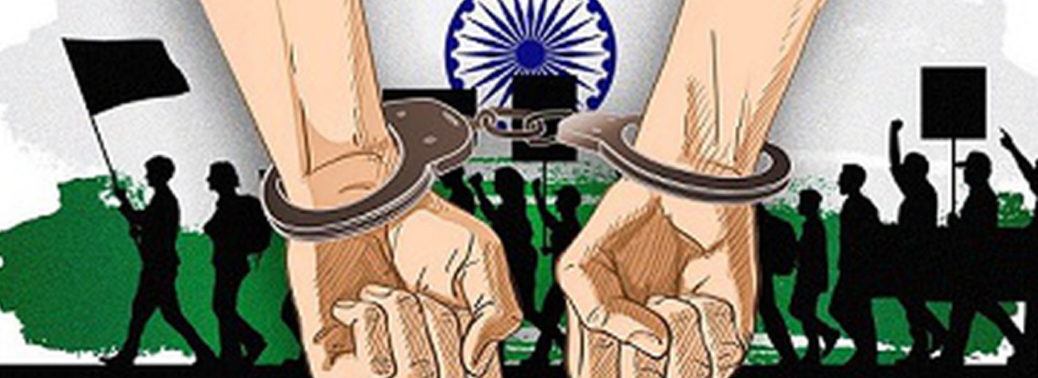
Why in News?
- Adult Education is a Concurrent Subject with both Central and State Governments being required to contribute to its promotion and strengthening.
- At the national level, National Literacy Mission Authority (NLMA), an autonomous wing of MHRD is the nodal agency for overall planning and management and funding of Adult Education Programmes and institutions. Its inter – ministerial General Council and Executive Committee are the two policy and executive bodies.
Centrally Sponsored Schemes:
- Presently, the provision of adult education is through the Saakshar Bharat Programme (SBP) which is a centrally sponsored scheme.
- The National Literacy Mission Authority (NLMA), is the Nodal Agency at the National level. The Joint Secretary (Adult Education) is the ex – officio Director General of NLMA.
- It was set up in 1988 with the approval of the Cabinet as an independent and autonomous wing of the Ministry of HRD (the then Department of Education). The Cabinet vested NLMA with full executive and financial powers in the sphere of work.
- National Literacy Mission Authority is mandated with
- Policy and planning;
- Developmental and promotional activities;
- Operational functions including assistance to voluntary agencies and other NGOs,
- Technology demonstration
- Leadership training
- Resource development including media and materials
- Research and development
- Monitoring and evaluation etc.
The Council of NLMA:
- Is the apex body of NLMA, headed by Minister of Human Resource Development and consists of, among others, Ministers of Panchayati Raj, Rural Development, Minority
Affairs, Information and Broadcasting, Health and Family Welfare, Youth Affairs and Sports, Social Justice and Empowerment, Women and Child Development, senior level
political leaders of the main political parties, three Members of Parliament, Education Ministers of six States etc.
Executive Committee:
- The Executive Committee is responsible to carry out all the functions of the Authority in accordance with the policy and guidelines laid down by the Council.
- It strives for proper implementation of policies and incorporation of latest developments in the field of Adult Education.
Major campaigns under the National Literacy Mission:
- TOTAL LITERACY CAMPAIGNS (TLC):This model is the dominant strategy for the eradication of adult illiteracy in India. TLC campaigns are area-specific, time-bound, volunteer-based, cost-effective and outcome-oriented.
- The campaigns are implemented through district-level literacy committees which are registered under the Societies Registration Act as independent and autonomous bodies to provide a unified umbrella under which a number of individuals and organisations work together.
- POST LITERACY PROGRAMME (PLP):Post-literacy programmes attempt to give interested learners an opportunity to harness and develop their learning potentials after completion of a course in basic literacy.
- Post literacy programmes are open to neo-literates in the age group of 9-35 who have completed the basic literacy course under the total literacy campaigns, dropouts from primary schools and pass outs from Non formal Education (NFE) programmes.
- CONTINUING EDUCATION PROGRAMME (CEP):After the impingement of literacy and adult education programmes another challenge that came before the National Literacy Mission was to create a Continuing Education System and maintain a channelled continuous and life-long learning process.
- Thus, the scheme of Continuing Education was taken up. The Continuing Education Scheme is multi-faceted and is postulated on the principles of treating basic literacy, post literacy and later continuing education. Above all the scheme aims at addressing the socio-economic situations of the community to provide infrastructure for larger development initiatives.
EASE OF LIVING INDEX AND MUNICIPAL PERFORMANCE INDEX 2019
13, Feb 2020

Why in News?
- To help assess the progress made in cities through various initiatives and empower them to use evidence to plan, implement & monitor their performance, two Assessment Frameworks, viz. Ease of LivingIndex (EoLI) and Municipal Performance Index (MPI) 2019 have been launched by the Ministry of Housing & Urban Affairs.
Ease of Living Index and Municipal Performance Index:
- Both these indices are designed to assess quality of life of citizens in 100 Smart Cities and 14 other Million Plus Cities.
Municipal Performance Index:
- With the Municipal Performance Index 2019, the Ministry has sought to assess the performance of municipalities based on five enablers namely Service, Finance, Planning, Technology and Governance which have been further divided into 20 sectors which will be evaluated across 100 indicators.
- This will help Municipalities in better planning and management, filling the gaps in city administration, and improving the liveability of cities for its citizens.
Ease of Living Index:
- Ease of Living Index is aimed at providing a holistic view of Indian cities – beginning from the services provided by local bodies, the effectiveness of the administration, the outcomes generated through these services in terms of the liveability within cities and, finally, the citizen perception of these outcomes.
- The key objectives of the Ease of Living Index are four-folds, viz.
- Generate information to guide evidence-based policy making
- Catalyse action to achieve broader developmental outcomes including the SDG’
- Assess and compare the outcomes achieved from various urban policies and schemes.
- Obtain the perception of citizens about their view of the services provided by the city Administration.
- EoLI 2019 will facilitate the assessment of ease of living of citizens across three pillars: Quality of Life, Economic Ability and Sustainability which are further divided into 14 categories across 50 indicators.
Citizen Perception Survey:
- For the first time, as part of the Ease of Living Index Assessment, a Citizen Perception Survey is being conducted on behalf of the Ministry (which carries 30% of the marks of the Ease of Living Index).
- This is a very important component of the assessment exercise as it will help in directly capturing perception of citizens with respect to quality of life in their cities. This survey, which is being administered both online and offline, has commencedfrom 1st February 2020 and will continue till 29th February 2020.
- The offline version involving face-to-face interviews will commence on the 1st of February and will run parallel to the on-line versions. The same is being promoted through bulk SMS push as well as extensive coverage in social media.
DEBATE AROUND UNIFORM CIVIL CODE (UCC)
12, Feb 2020
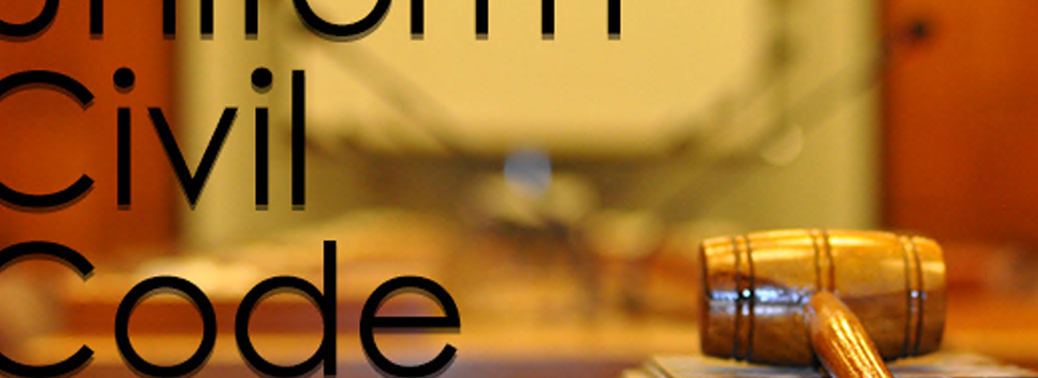
Why in News?
- Recently the Supreme Court described Goa as a “shining example” with a Uniform Civil Code and observed that the founders of the Constitution had hoped and expected a Uniform Civil Code for India but there has been no attempt at framing one.
Highlights:
- Article 44 of the Constitution lays down that the state shall endeavour to secure a Uniform Civil Code for the citizens throughout the territory of India.
- A Uniform Civil Code is one that would provide for one law for the entire country, applicable to all religious communities in their personal matters such as marriage, divorce, inheritance, adoption etc.
- Article 44 is one of the directive principles. These are not justiciable (not enforceable by any court) but the principles laid down therein are fundamental in governance.
- Article 43 mentions “state shall endeavour by suitable legislation” while the phrase “by suitable legislation” is absent in Article 44. All this implies that the duty of the state is greater in other directive principles than in Article 44.
Fundamental Rights or DPSP?
- The Supreme Court held in Minerva Mills (1980): “Indian Constitution is founded on the bed-rock of the balance between Parts III (Fundamental Rights) and IV (Directive Principles).
- To give absolute primacy to one over the other is to disturb the harmony of the Constitution”.
- Article 31C inserted by the 42nd Amendment in 1976, however, lays down that if a law is made to implement any directive principle, it cannot be challenged on the ground of being violative of the fundamental rights under Articles 14 and 19.
Current Civil Code:
- Indian laws do follow a uniform code in most civil matters, Indian Contract Act, Civil Procedure Code, Sale of Goods Act, Transfer of Property Act, Partnership Act, Evidence Act etc.
- States, however, have made hundreds of amendments and therefore in certain matters, there is diversity even under these secular civil laws.
- All Hindus of the country are not governed by one law, nor are all Muslims or all Christians. Not only British legal traditions, even those of the Portuguese and the French remain operative in some parts.
- In the Northeast, there are more than 200 tribes with their own varied customary laws. The Constitution itself protects local customs in Nagaland.
- Similar protections are enjoyed by Meghalaya and Mizoram. Even reformed Hindu law, in spite of codification, protects customary practices.
UAE BANKS: INDIAN DEFAULTERS & RECOVERY
10, Feb 2020

Context:
- Recently, the Union government issued a notification allowing the decrees of certain UAE courts in civil cases to be enforceable in India. At least 9 banks from the UAE are in the process of initiating legal action against Indian defaulters to recover around Rs 50,000 crore, after this new ruling.
UAE as a ‘Reciprocating Territory’
- The UAE has been declared a reciprocating territory undersection 44A of Civil Procedure Code.
- It is said to be the only remaining part of a 1999 agreement between the UAE and India related to cooperation in civil and commercial matters.
- Apart from UAE, the other countries declared to be “reciprocating territories” are: United Kingdom, Singapore, Bangladesh, Malaysia, Trinidad & Tobago, New Zealand, the Cook Islands (including Niue) and the Trust Territories of Western Samoa, Hong Kong, Papua New Guinea, Fiji, Aden.
What is a ‘reciprocating territory’ and what are superior courts?
- The Central Government may, by notification in the Official Gazette, can declare any country or territory outside India to be a reciprocating territory.
- Essentially, orders (decree) passed by certain designated courts from a ‘reciprocating territory’ can be implemented in India, by filing a copy of the decree concerned in a District Court here.
- The provision is applicable money decrees – for payment of money, not being sums payable “in respect of taxes or other charges of a like nature or in respect of a fine or other penalty”.
- However, this does not include an arbitration award, even if such an award is enforceable as a decree or judgment.
- The courts so designated under the notifications are called ‘superior Courts’.
Why is the move considered to be significant?
- Earlier UAE-based banks had no recourse to enforce judgements directly to recover their corporate or retail loans given to Indians in the UAE, but now they can take action in India.
- Most of the cases involve corporate loans taken by Dubai or Abu Dhabi-based subsidiaries of Indian companies and also individuals.
- The new government notification allowed the decrees of certain UAE courts in civil cases to be enforceable in India.
- This means a UAE bank, if it has a court order in its favour against a defaulter who has fled to India or no more has operations in the Emirates, can seek to enforce it here like any local lender to recover the money.
- So, now UAE banks may also explore initiating proceedings under the IBC (India’s Insolvency and Bankruptcy Code) or the banks could also approach the NCLT or even invoke personal guarantees.
- The decision is believed to help bring down the time required for executing decrees between the two countries.
- Indian expatriates in the UAE would no longer be able to seek safe haven in their home country if they are convicted in a civil case in the UAE.
RAJYA SABHA HOUSE PANEL SUGGESTS STEPS TO CURB CHILD PORNOGRAPHY
08, Feb 2020

Why in News?
- A parliamentary panel has recommended a code of conduct for Internet service providers (ISPs) and strengthening the National Commission for Protection of Child Rights to curb Child Pornography.
Highlights:
- The report, prepared by an ad hoc committee set up by the Rajya Sabha and led by Congress MP Jairam Ramesh, was submitted to the Chairman of the House.
- It recommends a multi-pronged strategy detailing technological, institutional, social and educational as well as State-level measures.
- Among its key recommendations is a code of conduct or a set of guidelines for ensuring child safety online.
- It puts a greater onus on ISPs to identify and remove child sexual abuse material (CSAM) as well as report such content and those trying to access them to the authorities under the national cybercrime portal.
- It has also called for strengthening the National Commission for Protection of Child Rights (NCPCR) so that it can serve as the nodal body for curbing child pornography.
- The capabilities required in the NCPCR should include technology, cyberpolicing and prosecution along with an inter-ministerial task force, the panel has proposed.
- The committee has delved into great detail in using technology to curb circulation of child porn such as breaking end-to-end encryption to trace its distributors of child pornography, mandatory applications to monitor children’s access to pornographic content, employing photo DNA to target profile pictures of groups with CSAM.
Drawbacks:
- The suggestion to break encryption may also just lead to traffic moving to different platforms.
- There is also a need to develop a victim-centric strategy instead of just focusing on prosecution.
FEMALE FOETICIDE:
04, Feb 2020

Context:
- Recently, Punjab’s Department of Health and Family Welfare became the first state to hire a detective agency to Check Female Foeticide.
What is Female Foeticide?
- Female foeticide refers to ‘aborting the female in the mother’s womb’.
- The active methods of killing girls through selective sex abortion and passive methods like discrimination in care and nutrition are used to eliminate the girl child.
- Sex ratio in India stand at 940 in 2011 and child sex ratio has shown more continuous decline since 1961 but more alarming after 1991.
Reasons Behind Prevalence of Female Foeticide:
- The Indian society generally shows cultural bias against women.
- Any kind of investment in girl’s education and empowerment is considered as investment in failed enterprise. Their physical security is added responsibility on the family.
- Practice of dowry puts extra burden on the parents and all these results into general preference for son and girl foeticide and Infanticide.
Impact of Female Foeticide:
- The low sex ratio resulting from female foeticide which are manifesting themselves in various ways like
- Trafficking of women for sexual work and marriage. Such marriages are not sustainable because of cultural differences and results into instances of physical, mental and sexual abuse of the bride.
- Increased crimes against women like sexual harassment, lewd remarks against women, and instances of eve teasing.
Steps taken to stop it:
- PCPNDT Act (Pre- Conception and Pre-Natal Diagnostic Technique Act-1994)was enacted to ban the use of sex selection techniques before and after conception and prevent the use of prenatal diagnostic techniques for selective abortion.
- Beti Bachao Beti Padhao (BBBP): This programme have been launched to ensure survival, protection and empowerment of girls by eliminating the differential in the sex ratio, infant mortality rate and improving their nutritional and education status.
- Sukanya Samridhi Yojana: It is acomponent of BBBP programme aims to ensure equitable share of the girl child in family savings. The savings can be used for the education of girl child and her marriage, thus helping in the empowerment of girl and reducing the economic burden that families face at the time of marriage.
- Balika Samriddhi Yojana:It is a scholarship scheme designed to provide financial support to young girls and their mothers who are below the poverty line. The key objective of the scheme is to improve their status in society, increase the marriageable age of girls and improve the enrolment as well as retention of girls in schools.
Way Ahead:
- Implementation of laws has been the big issue in India and many violators have been left scot-free. So, PCPNDT Act should be stringently implemented.
- The attitudes of the people towards girl child should be changed by creating awareness for bringing socio-cultural changes.
- Ensure participation of various religious groups, social organizations and education system to not only teach but practise the value of Gender Equality.
INDIA’S DOCTRINE OF NUCLEAR NO FIRST USE
19, Aug 2019

Context: Defence Minister Rajnath Singh tweeted, after visiting the nuclear test site in Pokhran that “The future of India’s ‘No First Use’ policy on nuclear weapons depends on the “circumstances”,
What is No First Use doctrine, and how did it come into being?
- A commitment to not be the first to use a nuclear weapon in a conflict has long been India’s stated policy.
- India declareda “no-first-use” policy under which it won’t be the first to use nuclear weapons in a conflict with its neighbors, but will retaliate should deterrence fail. Unlike Pakistan, India’s other neighbor and rival China also has a declared no-first-use policy on nuclear weapons.
- India’s Nuclear Doctrine
a) Building and maintaining a credible minimum deterrent
b) Posture of ‘No First Use’, nuclear weapons will only be used in retaliation against a nuclear attack on Indian Territory or on Indian forces anywhere
c) Nuclear retaliation to a first strike will be massive and designed to inflict unacceptable damage
d) Non-use of nuclear weapons against non-nuclear weapon states
e) In the event of a major attack against India, or Indian forces anywhere, by biological or chemical weapons, India will retain the option of retaliating with nuclear weapons
Background
- On January 4, 2003, when Vajpayee was India’s Prime Minister, the Cabinet Committee on Security (CCS) met to review the progress in operationalizing the country’s nuclear doctrine.
- An official release issued that day summarized the decisions that were being put in the public domain.
- Among the major points in the doctrine was “a posture of No First Use”, which was described as follows:
- “Nuclear weapons will only be used in retaliation against a nuclear attack on Indian territory or on Indian forces anywhere”.
Contents of Doctrine
- Nuclear retaliatory attacks can only be authorised by the civilian political leadership through the Nuclear Command Authority. The Nuclear Command Authority comprises a Political Council and an Executive Council. The Political Council is chaired by the Prime Minister.
- India would not use nuclear weapons against non-nuclear weapon states.
- India would continue to put strict controls on the export of nuclear and missile related materials and technologies, participate in the Fissile Material Cutoff Treaty negotiations, and continue to observe the moratorium on nuclear tests.
- India remains committed to the goal of a nuclear weapons free world, through global, verifiable and non-discriminatory nuclear disarmament.
- India’s doctrine does not mention any country, but it is no secret that the Indian nuclear arsenal is to counter threats from China and Pakistan.
Advantages of Doctrine
- Since there is no first use alert requirement, the chances of reacting to a false alarm are nullified thus effectively quashing the chances of unnecessary chaos.
- A ‘no first use’ nuclear weapons policy suits India’s interest. Shifting to a first-use policy would mark a shift from deterrence towards nuclear war fighting
- These weapons are enormously destructive and should not be used. Since there is no first use alert requirement, the chances of reacting to a false alarm are nullified A first use would result in international dishonour and weigh heavily on a country with a first use posture.
- NFU doctrine is cheaper to implement; for India, which has many economic targets to achieve, this is a very important factor.
- NFU policy is just right for India as it ensures security for the nation and does not detract it from its march towards better prosperity for its people.
- India’s NFU policy which has kept the nuclear arsenal in both India and Pakistan in a de-mated posture, which means that the nuclear warheads are not mated with the delivery systems.
- A NFU doctrine is cheaper to implement. For India, which has many economic targets to achieve, this is a very important factor.
China
- China has maintained a ‘no first use’ policy since 1964 when it went nuclear, and the Chinese leadership has always considered nuclear weapons as political weapons.
Pakistan
- Pakistan has adopted a first-use policy to ensure full-spectrum deterrence
- Pakistan knows that it cannot afford to use any nuclear weapons in a war, including its tactical nuclear weapons, as India would respond with massive nuclear retaliation as per its doctrine
CERTIFICATION OF SEEDS TO BE MADE MANDATORY TO STEP UP FARM OUTPUT
14, Aug 2019

- Context: The Centre is planning to mandate uniform certification by pushing through a replacement to the Seeds Act, 1966.
Background:
- More than half of all seeds sold in India are not certified by any proper testing agency, and are often of poor quality.
- The existing legislation that was enacted over half a century ago and therefore there is a need for revival.
Proposed Changes in The New Bill:
- The 1966 Act starts with these words: “An Act to provide for regulating the quality of certain seeds for sale…” The new Bill removes the word “certain”, and aims to regulate the quality of all seeds sold in the country, as well as exported and imported seeds.
- The new law will also raise the stakes by increasing penalties for non-compliance. Currently, the fine ranges from ₹500 to ₹5,000.
Significance:
- New changes could increase overall agricultural productivity by up to 25%.
- It will also bring uniformity to the process of quality regulation.
STATE-RUN OMCS TO BUY BIODIESEL MADE FROM USED COOKING OIL
14, Aug 2019

- Context: Central Government has launched a ‘Repurpose Used Cooking Oil (RUCO)’sticker and a phone app to enable the collection of used cooking oil. Restaurants and hotels interested in supplying used cooking oil can affix the sticker to show availability.
About RUCO:
- The RUCO (Repurpose Used Cooking Oil) initiative have been launched by Food Safety and Standards Authority of India (FSSAI) which will enable collection and conversion of used cooking oil (UCO) to bio-diesel.
- Under RUCO, 64 companies at 101 locations have been identified to enable collection.
- FSSAI wants businesses using more than 100 litres of oil for frying, to maintain a stock register and ensure that UCO is handed over to only registered collecting agencies.
- FSSAI is also working in partnership with Biodiesel Association of India and the food industry to ensure effective compliance of used cooking oil regulations.
- FSSAI has additionally launched a micro-site to monitor the progress of the collection and conversion of used cooking oil into biodiesel.
Background:
- The consumption of Used Cooking Oil (UCO) poses adverse health effects.
- During frying, several properties of oil are altered, Total Polar Compounds (TPC) are formed on repeated frying.
- The toxicity of these compounds is associated with several diseases such as hypertension, atherosclerosis, Alzheimer’s disease, liver diseases.
- Therefore, it is essential to monitor the quality of vegetable oils during frying.
- In order to safeguard consumer health, FSSAI has fixed a limit for Total Polar Compounds at 25 percent beyond which the vegetable oil shall not be used.
- All Food Business Operators (FBOs) are required to monitor the quality of oil during frying by complying with the said regulations.
- Repurpose Used Cooking Oil (RUCO) is an ecosystem that will enable the collection and conversion of UCO to biodiesel.
What are Total Polar Compounds (TPC)?
- TPC is formed due to repeated frying and usage of edible oil which changes its physiochemical and nutrition properties making it unfit for human consumption.
- TPCs above the set level cause hypertension, atherosclerosis, Alzheimer’s disease, liver disease etc.
- Cooking oil may have saturated fatty acids (palm oil) or unsaturated fatty acids (soyabean).
- The saturated fatty acids such as in palm oil are more stable that the unsaturated fatty acids which decompose easily at high temperature forming polar compounds.
- Thus, it makes oils with saturated fatty acids fit for frying. However, oils with unsaturated fatty acids are healthier provided they are used just once for frying.
MOTOR VEHICLES AMENDMENT ACT 2019
13, Aug 2019
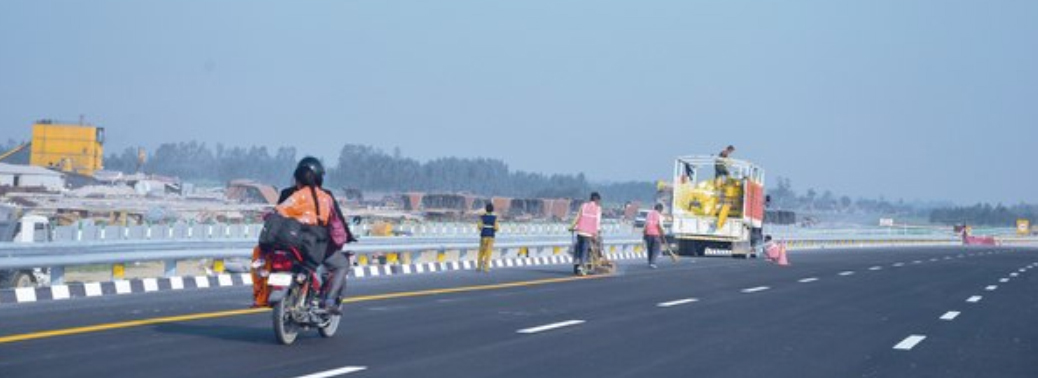
Why in News?
- President Ram Nath Kovind gave assent to the Motor Vehicles (Amendment) Act, 2019.
Highlights:
- The Act aims to make Indian roads safer, reduce corruption and use technology to overhaul the country’s transportation system.
- Towards safety, the law has proposed stiffer penalties for traffic rule violations such as over-speeding, dangerous driving, driving under the influence of alcohol and other offences such as not wearing a helmet or driving without licence.
- The penalty for drunk driving has been increased by five times to ₹2,000. Speeding will now attract a fine or ₹5,000 instead of₹500 earlier. Noting giving way to emergency vehicles such as ambulances will attract a ₹10,000 fine.
- The new law also allows the Centre to ask manufacturers to recall vehicles in case of defects that cause harm to the environment.
- The Centre, in consultation with the states, can frame a national transportation policy to transform the rural and public road transportation system and improve last-mile connectivity.
- The process for testing and certification for automobiles is proposed to be regulated more effectively. The testing agencies issuing automobile approvals have been brought under the ambit of the Act.
- The driving training process has been strengthened enabling faster issuance of transport licenses.
- This will help in reducing the shortage of commercial drivers in the country.
- To bring harmony of the registration and licensing process, it is proposed to create National Register for Driving Licence and National Register for Vehicle registration through “Vahan” & “Sarathi” platforms. This will facilitate uniformity of the process across the country.
- The Act proposes offences committed by Juveniles. The Guardian / owner shall be deemed to be guilty in cases of offences by Juveniles and Juvenile to be tried under JJ Act. Registration of Motor Vehicle to be cancelled
- Improving delivery of services to the stakeholders using e-Governance is one of the major focuses of this Act. This includes enabling online learning licenses, increasing validity period for driving licenses, doing away with the requirements of educational qualifications for transport licenses are some of the features.
THE PUBLIC PREMISES (EVICTION OF UNAUTHORISED OCCUPANTS) AMENDMENT BILL, 2019
09, Aug 2019
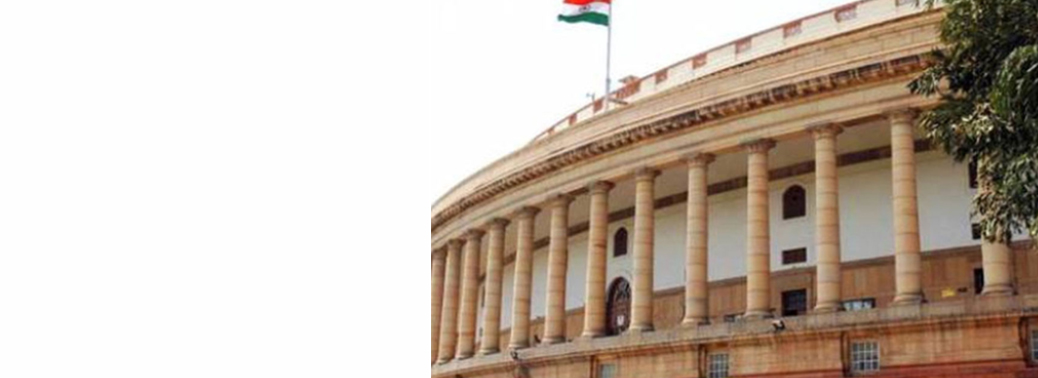
- Context: The Public Premises (Eviction of Unauthorised Occupants) Amendment Bill, 2019 was passed by both the houses of the Parliament. The Bill amends the Public Premises (Eviction of Unauthorised Occupants) Act, 1971. The Act provides for the eviction of unauthorised occupants from public premises in certain cases.
Background:
- The aim of the Bill is to facilitate smooth and speedy eviction of occupants of government accommodation on expiry of their terms and conditions.
- The Government provides residential accommodation to its employees, Members of Parliament and other dignitaries while they are in service or till the term of their office on licence basis.
- As per the existing allotment rules, after the expiry of the terms and conditions of the licence, the occupants of such residential accommodations become unauthorised for staying in such accommodation and should vacate the same.
Issue:
- However, it is often seen that the unauthorised occupants do not vacate the government accommodation on expiry of the terms and conditions of the licence as per the rules and uses dilatory tactics to withhold the accommodation.
- In order to check this delay, it is proposed to insert a new sub-section (3A) in section 7 of the Act to the effect that if the person challenges the eviction order passed by the estate officer in any court, he has to pay the damages for every month for the residential accommodation held by him.
- Under the existing provisions, the eviction proceedings of unauthorised occupants from “public premises” take around five to seven weeks’ time.
Key Highlights of the Bill:
Residential Accommodation:
- The Bill defines ‘residential accommodation occupation’ as the occupation of public premises by a person on the grant of a license for such occupation.
- The license must be given for a fixed tenure, or for the period the person holds office.
- Further, the occupation must be allowed under the rules made by the central, state or union territory government, or a statutory authority (such as Parliament Secretariat, or a central government company, or premises belonging to a state government).
Notice for Eviction:
- The Bill adds a provision laying down the procedure for eviction from residential accommodation.
- It requires an estate officer (an officer of the central government) to issue a written notice to a person if he is in unauthorised occupation of a residential accommodation.
- The notice will require the person to show cause of why an eviction order should not be made against him, within three working days.
- The written notice must be fixed to a conspicuous part of the accommodation, in a prescribed manner.
Order of Eviction:
- After considering the cause shown, and making any other inquiries, the estate officer will make an order for eviction.
- If the person fails to comply with the order, the estate officer may evict such person from the residential accommodation, and take possession of it.
- For this purpose, the estate officer may also use such force as necessary.
Payment of Damages:
- If the person in unauthorised occupation of the residential accommodation challenges the eviction order passed by the estate officer in court, he will be required to pay damages for every month of such occupation.
SURROGACY REGULATION BILL, 2019
06, Aug 2019
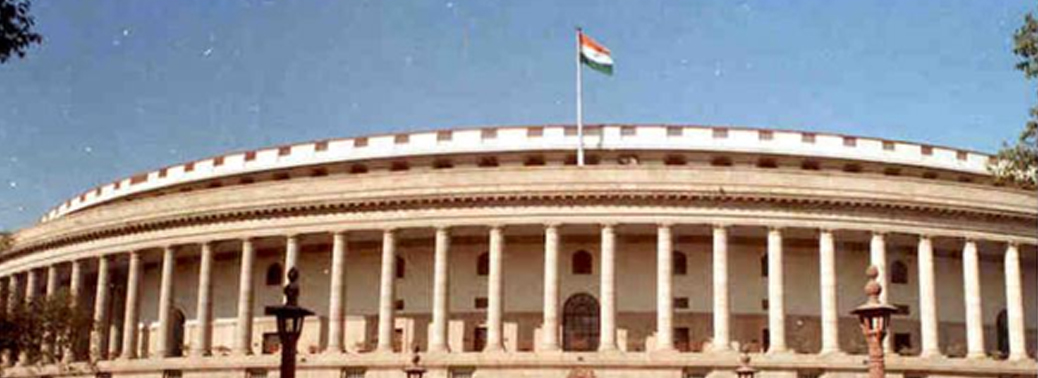
Context:
- The Surrogacy (Regulation) Bill 2019, was passed by the Lok Sabha.
Provisions of bill:
Regulation of surrogacy:
- The Bill prohibits commercial surrogacy, but allows altruistic surrogacy.
- What is Altruistic Surrogacy ?
- Altruistic surrogacy involves no monetary compensation to the surrogate mother other than the medical expenses and insurance coverage during the pregnancy.
- Commercial surrogacy includes surrogacy or its related procedures undertaken for a monetary benefit or reward (in cash or kind) exceeding the basic medical expenses and insurance coverage.
Purposes for which Surrogacy is permitted:
Surrogacy is permitted when it is:
- For intending couples who suffer from proven infertility;
- Altruistic
- Not for commercial purposes
- Not for producing children for sale, prostitution or other forms of exploitation; and
- For any condition or disease specified through regulations.
Eligibility criteria for Intending Couple:
- The intending couple should have a ‘certificate of essentiality’ and a ‘certificate of eligibility’ issued by the appropriate authority.
- A certificate of essentiality will be issued upon fulfilment of the following conditions:
- A certificate of proven infertility of one or both members of the intending couple from a District Medical Board;
- An order of parentage and custody of the surrogate child passed by a Magistrate’s court; and
- Insurance coverage for a period of 16 months covering postpartum delivery complications for the surrogate.
- The certificate of eligibility to the intending couple is issued upon fulfilment of the following conditions:
- The couple being Indian citizens and married for at least five years;
- Between 23 to 50 years old (wife) and 26 to 55 years old (husband);
- They do not have any surviving child (biological, adopted or surrogate); this would not include a child who is mentally or physically challenged or suffers from life threatening disorder or fatal illness; and
- Other conditions that may be specified by regulations.
Eligibility criteria for surrogate mother:
- To obtain a certificate of eligibility from the appropriate authority, the surrogate mother has to be:
- A close relative of the intending couple;
- A married woman having a child of her own;
- 25 to 35 years old;
- A surrogate only once in her lifetime; and
- Possess a certificate of medical and psychological fitness for surrogacy.
- Further, the surrogate mother cannot provide her own gametes for surrogacy.
Appropriate Authority:
- The central and state governments shall appoint one or more appropriate authorities within 90 days of the Bill becoming an Act.
- The functions of the appropriate authority include;
- Granting, suspending or cancelling registration of surrogacy clinics;
- Enforcing standards for surrogacy clinics;
- Investigating and taking action against breach of the provisions of the Bill;
- Recommending modifications to the rules and regulations.
Registration of Surrogacy Clinics:
- Surrogacy clinics cannot undertake surrogacy related procedures unless they are registered by the appropriate authority.
- Clinics must apply for registration within a period of 60 days from the date of appointment of the appropriate authority.
National and State Surrogacy Boards:
- The Central and the State Governments shall constitute the National Surrogacy Board (NSB) and the State Surrogacy Boards (SSB), respectively.
- Functions of the NSB include,
- Advising the central government on policy matters relating to surrogacy;
- Laying down the code of conduct of surrogacy clinics; and
- Supervising the functioning of SSBs.
Parentage and abortion of Surrogate Child:
- A child born out of a surrogacy procedure will be deemed to be the biological child of the intending couple. An abortion of the surrogate child requires the written consent of the surrogate mother and the authorisation of the appropriate authority.
- This authorisation must be compliant with the Medical Termination of Pregnancy Act, 1971. Further, the surrogate mother will have an option to withdraw from surrogacy before the embryo is implanted in her womb.
Offences and Penalties:
- The offences under the Bill include:
- Undertaking or advertising commercial surrogacy;
- Exploiting the surrogate mother;
- Abandoning, exploiting or disowning a surrogate child; and
- Selling or importing human embryo or gametes for surrogacy.
- The penalty for such offences is imprisonment up to 10 years and a fine up to 10 lakh rupees. The Bill specifies a range of offences and penalties for other contraventions of the provisions of the Bill.
Critical Analysis:
Altruistic Mother:
- The Surrogacy (Regulation) Bill 2019, once again denies women agency over their own bodies.The bill seeks to outlaw commercial surrogacy, and allows only “altruistic” surrogacy for “needy” couples with proven conditions of infertility.
- Women are once again being asked to use their bodies for the greater good without getting paid for it. Sperm donors will continue to get paid.
- Men in general are masters of their bodies. But women’s bodies need to be regulated, policed and legislated into dependence.
Surrogacy in Indian Scenario:
- There is clear evidence of malpractice surrounding commercial surrogacy in India. Middle men take most of the money, and women are robbed of the income that they deserve. It is also alleged that surrogates are not allowed to choose whether to become surrogates – they are forced into the business by their greedy families.
SANKALP SCHEME
04, Aug 2019
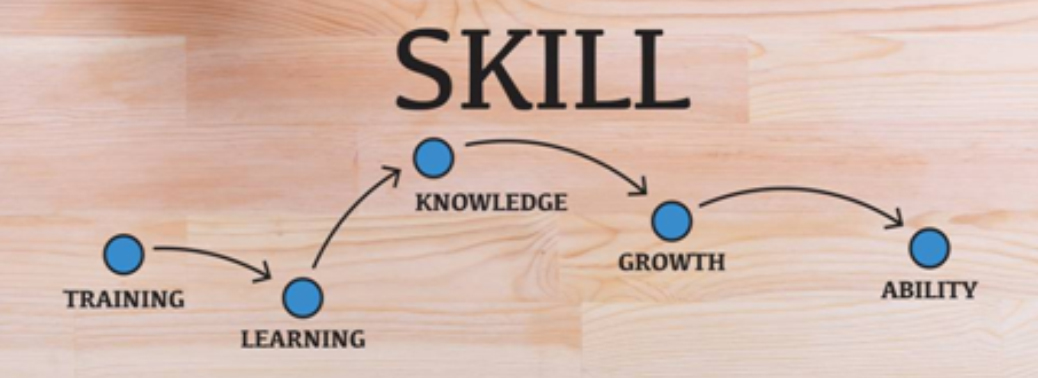
Why in News?
- Minister of Skill Development & Entrepreneurship has reviewed the World Bank loan assisted “Skills Acquisition and Knowledge Awareness for Livelihood Promotion (SANKALP) programme.
Highlights:

- All 36 States/ UTs across country have submitted their consent for participation in SANKALP.
- In addition to these State grants of Rs 10 lakh each also released to 117 aspirational districts under Aspirational Skilling Abhiyaan.
SANKALP Scheme:
- SANKALP is an outcome-oriented centrally sponsored programme of Ministry of Skill Development & Entrepreneurship (MSDE) with a special focus on decentralized planning and quality improvement.
- The project is implemented with the support of World Bank monetarily in line with the objectives of National Skills Development Mission (NSDM).
- It focuses on the overall skilling ecosystem covering both Central & State agencies.
- Under SANKALP four key result areas have been identified viz:
- Institutional Strengthening (at National, State & District level)
- Quality Assurance Quality Assurance of skill development programs
- Inclusion of marginalized population in skill development and
- Expanding Skills through Public Private Partnerships (PPPs)
TechEx 2019
04, Aug 2019
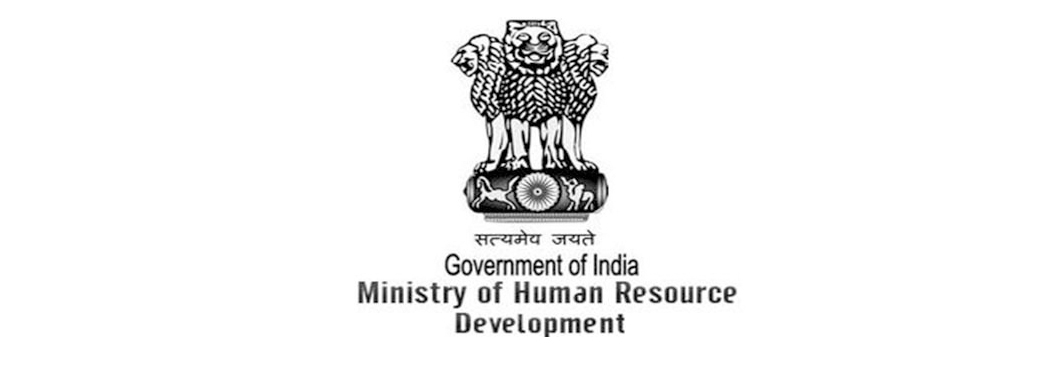
Why in News?
- Union Human Resource Development Minister, inaugurated theTechEx – technology exhibition at IIT Delhi
TechEx:
- TechEx was organized to demonstrate products and prototypes developed under the two flagship schemes of the Ministry of Human Resource Development (MHRD) namely IMPacting Research, INnovation and Technology (IMPRINT) and UchhatarAvishkar Yojana (UAY).
- TechEx is a unique effort, which offers an excellent platform to the researchers to showcase their work and inspire them to do their best in their respective domains.
- some prominent among the exhibits were non-invasive and low-cost rapid TB diagnostics, artificial pancreas for closed loop blood glucose control of type-I diabetic patients, affordable cancer diagnosis/treatment, electric vehicle charger, etc.
IMPRINT Scheme:
- MPRINT scheme was launched in November, 2015 with a view to providing solutions to the most relevant engineering challenges by translating knowledge into viable technology (products or processes) in 10 selected technology domains.
- The domains are namely health care, energy, sustainable habitat, nano-technology hardware, water resources and river systems, advanced materials, Information and Communication Technology, manufacturing, security and defence, and environmental science and climate change.
Uchhatar Avishkar Yojana (UAY):
- Uchhatar Avishkar Yojana (UAY) was announced in 2015 with a view to promoting innovation of a higher order that directly impacts the needs of the Industry and thereby improves the competitive edge of Indian manufacturing.
- UAY projects are funded jointly by MHRD, participating Ministries and the Industry
- The scheme focusses on a viable industry-academic collaboration where industry shares a part of the cost of research.
GOVERNMENT TO SUPPORT INDIA’S IT INDUSTRY
02, Aug 2019

Why in News?
- Union Minister of Commerce & Industry and Railways, held a meeting with senior managers of IT companies in New Delhi
IT Industry Challenges:
- India’s IT industry contributed 7.7% to the country’s GDP in FY 2017 and is expected to contribute 10% of India’s GDP by 2025.
- The United States account for 2/3rds of India’s IT services exports.
- India is the largest exporter of IT services in the world and exports dominate the Indian IT industry and constitutes about 79% of the total revenue of the industry.
- India’s IT service sector is now gearing up to be the digital partner of intelligent automation like smart algorithms, bots and AI tools, which are fast becoming a part of every industry and an increasingly digital world.
Challenges and support:
- The representatives of the companies informed that although the Chinese IT services market is the third largest in the world India’s investments and business have not been able to grow in China.
- This is due to various non-tariff barriers and challenges faced by Indian companies to set up their entity in China. Market access issues that create hurdles for Indian companies to open their business in China was also discussed.
- Government of India will give all support for the global growth of India’s flagship industry and will make all efforts to facilitate the IT service industry and for that it is ready to engage with China and also Japan and Korea
- Commerce and Industry Minister urged India’s IT services companies to explore other markets and not be inhibited in operating in countries that are non-English speaking.
J &K RESERVATION (SECOND AMENDMENT) BILL
02, Aug 2019
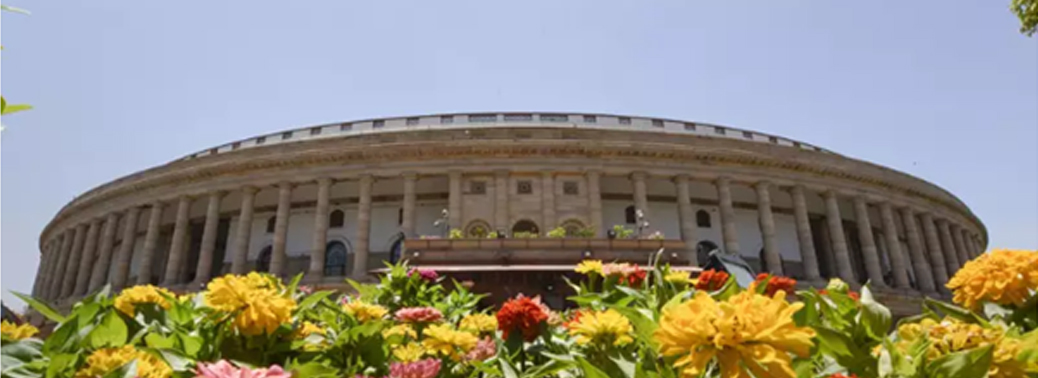
Why in News?
- Cabinet has approved J&K Reservation (Second Amendment) Bill to provide 10 percent reservation to the poor in higher education and government jobs.
Highlights:
- The bill will pave the way for the extension of 10 percent reservation for the poor in educational institutes and government offices of Jammu and Kashmir.
- The 10 percent reservation for the Economically Weaker Sections (EWS) will be in addition to the existing reservations in the state.
Background:
- The Supreme Court had earlier refused to order a stay on the government’s decision to grant 10 percent quota to economically weaker sections in jobs and admissions. The court had, however, agreed to examine the validity of the law and issued a notice to the Centre on the pleas.
- The Lok Sabha and the Rajya Sabha passed the reservation bill on January 8 and 9 respectively and it was later signed by President Ram Nath Kovind.
Extension of Reservation:
- The Act provides for the reservation in appointment and promotions in certain state government posts to persons belonging to socially and educationally backward classes.
- It defines socially and educationally backward classes to include persons living in areas adjoining the Actual Line of Control.
- The Bill amends this to include those persons living in areas adjoining the International Border, within the ambit of this reservation.
- Further, the Act states that any person who has been appointed on the basis of residence in an area adjoining the Line of Control must serve in such areas for at least seven years.
- The Bill extends this condition to persons living in areas adjoining the International Border as well.
Exclusion from Reservation:
- The Act states that any person whose annual income exceeds three lakh rupees or other amounts as notified by the state government, would not be included within socially and educationally backward classes.
- However, this exclusion does not apply to persons living in areas adjoining the Actual Line of Control.
- The Bill states that in addition, this exclusion will not apply to persons living in areas adjoining the International Border also.
DRAFT NATIONAL EDUCATION POLICY 2019
02, Aug 2019
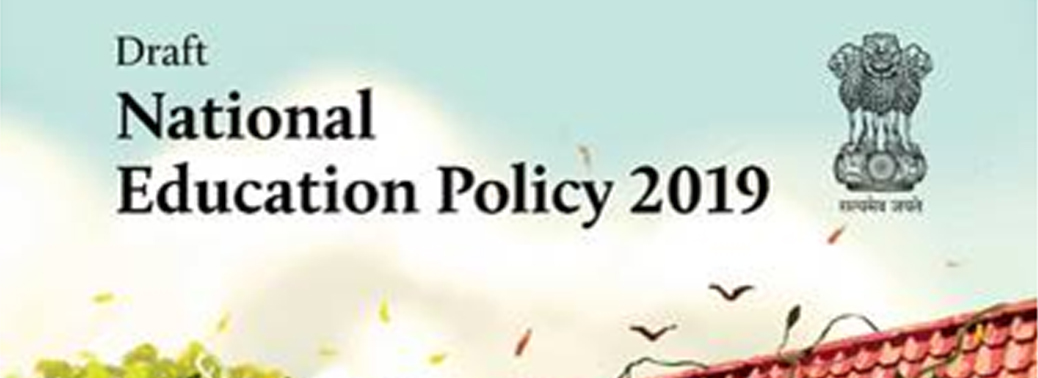
About
- The New Education Policy drafted by a committee headed by Dr.K.Kasturirangan.
- The report proposes an education policy, which seeks to address the challenges of:
1. Access
2. Equity
3. Quality
4. Affordability
5. Accountability faced by the current education system.
- The draft Policy provides for reforms at all levels of education from school to higher education.
- It seeks to increase the focus on early childhood care, reform the current exam system, strengthen teacher training, and restructure the education regulatory framework.
Key Features
Current Situation
- Early childhood education is delivered through anganwadis and private-preschools.
- There has been less focus on the educational aspects of early childhood.
Suggestion by Committee
- The draft Policy recommends developing a two-part curriculum for early childhood care and education.
- This will consist of:
1. Guidelines for up to three-year-old children (for parents and teachers), and
2. Educational framework for three to eight-year-old children.
- This would be implemented by improving and expanding the anganwadi system and co-locating anganwadis with primary schools.
RTE Act,2009:
- The draft Policy recommends to include early childhood education and secondary school education in the ambit of RTE Act so that all children between the ages of 3 to 18 are covered under the Act.
- It also recommends no detention of children till class 8.
Curriculum Framework:
- This would consist of a 5-3-3-4 design comprising:
1. Five years of foundational stage (three years of pre-primary school and classes one and two),
2. Three years of preparatory stage (classes three to five),
3. Three years of middle stage (classes six to eight), and
4. Four years of secondary stage (classes nine to 12).
- Curriculum load in each subject should be reduced to its essential core content. This would make space for holistic, discussion and analysis-based learning.
School Exam Reforms:
Current situation of board examinations:
1. Force students to concentrate only on a few subjects,
2. Do not test learning in a formative manner, and
3. Cause stress among students.
Draft policy suggests-
- To track students’ progress throughout their school experience, the draft Policy proposes State Census Examinations in classes three, five and eight.
- Restructuring the board examinations to test only core concepts, skills and higher order capacities.
- These board examinations will be on a range of subjects.
- The students can choose their subjects, and the semester when they want to take these board exams.
- The in-school final examinations may be replaced by these board examinations.
School Infrastructure:
Current Situation
- Establishing primary schools in every habitation across the country has helped increase access to education.
- However, it has led to the development of very small schools (having low number of students).
- The small size of schools makes it operationally complex to deploy teachers and critical physical resources.
Recommendation
- Multiple public schools should be brought together to form a school complex.
- A complex will consist of one secondary school (classes nine to twelve) and all the public schools in its neighborhood that offer education from pre-primary till class eight.
Regulation of Schools:
- The Policy recommends independent State School Regulatory Authority for each state that will prescribe uniform standards for public and private schools across the state.
Higher Education:
- The Policy aims to increase Gross Enrollment Ratio to 50% by 2035 from the current level of about 25.8%.
Regulatory Structure:
- Instead of multiple regulators the Policy recommends National Higher Education Regulatory Authority which would include professional and vocational education so that the role of professional councils such as AICTE and Bar Council Of India would be limited to setting standards of professional practice.
- Establishing National Research Foundation: as an autonomous body to fund, mentor and build capacity for quality research in India.
Vocational Education:
- Less than 5% of the workforce in the age group of 19-24 years receives vocational education in India.
- The Policy recommends integrating vocational educational programs in all educational institutions in a phased manner over 10 years.
- National Committee for the integration of Vocational Education will be set up to achieve the intended goals in vocational education in India.
3 Language Formula:
- Flexibility given to states to select subjects.
- The state governments should implement a modern Indian language preferably southern Indian language, apart from Hindi and English in Hindi speaking states and of regional language, English and another language preferably Hindi in non-Hindi speaking states.
Challenges:
- In the case of early childhood care and education, the focus is more on physical resources and less focus is provided to psychosocial stimulation for development.
- There is no government system to take care of babies of poor families or of mothers who go to work for daily wages. The experimental project of Fulwari or community-managed crèches in Chhattisgarh is one answer to this gap.
- There needs to be a discussion on whether literacy and numeracy skills should be developed during the time of foundational learning.
- In the draft Policy, there is no mention of how the State regulatory body will regulate the government institutions.
- Increasing the limit on the higher side of education i.e.., up to 18 is not consistent with the limits across the world. Also, it is a very expensive proposition.
- There is not enough capacity in the country to provide for teacher’s education. Also, there is more focus given to B.Ed. and M.Ed. has been given less importance under the policy.
- There are fewer consensuses on the integration of foundational learning with schooling. In Europe, compulsory education begins at the age of 6. In countries like Denmark and Finland, compulsory education begins at the age of 7.
ATAL INNOVATION MISSION
29, Jul 2019
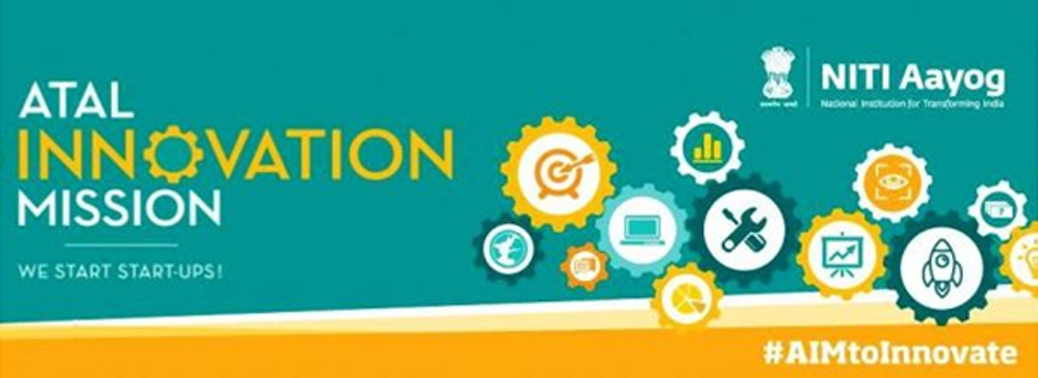
Why in News?
- Atal Innovation Mission (AIM) including Self-Employment and Talent Utilization (SETU) is Government of India’s endeavour to promote a culture of innovation and entrepreneurship. Its objective is to serve as a platform for promotion of world-class Innovation Hubs, Grand Challenges, Start-up businesses and other self-employment activities, particularly in technology driven areas.
- The Mission has been set up under NITI Aayog
Functions of AIM:
- Entrepreneurship promotion through Self-Employment and Talent Utilization, wherein innovators would be supported and mentored to become successful entrepreneurs
- Innovation promotion: to provide a platform where innovative ideas are generated :
- Atal Tinkering Labs
- Atal Incubation Centers
- Scale-up support to Established Incubators
Atal Tinkering Labs:
- The objective of establishing AIM is to create scientific temper and cultivate the spirit of curiosity and innovation among young minds.
- In Schools, AIM facilitates to set up network of Atal Tinkering Laboratories (ATL).
- The vision of Atal Tinkering Lab initiative is to ‘Cultivate 1 Million children in India as Neoteric Innovators’. The objective of this scheme is to foster curiosity, creativity and imagination in young minds and inculcate skills such as design mind-set, computational thinking, adaptive learning, physical computing, rapid calculations, measurements etc.
WHO REPORT ON THE GLOBAL TOBACCO EPIDEMIC
28, Jul 2019
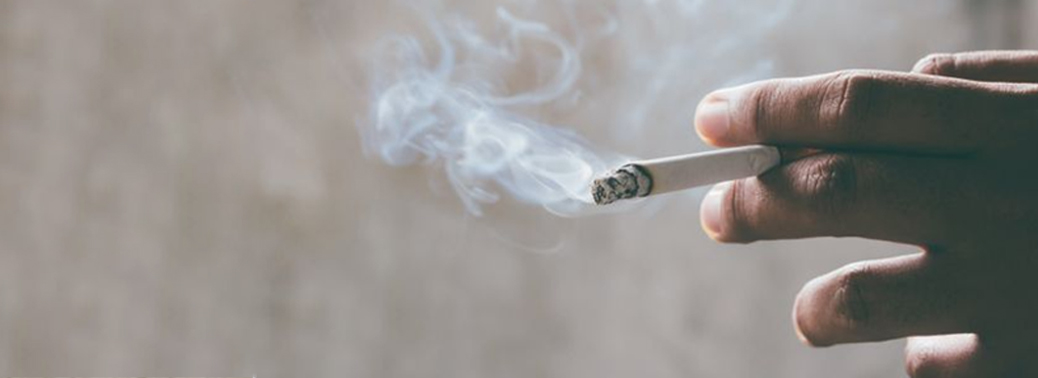
Context:
- The seventh WHO Report on the Global Tobacco Epidemic analyses national efforts to implement the most effective measures from the WHO Framework Convention on Tobacco Control (WHO FCTC) that are proven to reduce demand for tobacco.
- Report makes special reference about India’s efforts in helping smokers quit.
MPOWER
- Measures, like the “MPOWER” interventions, have been shown to save lives and reduce costs from averted healthcare expenditure.
- The MPOWER report was launched in 2007 to promote government action on six tobacco control strategies in-line with the WHO FCTC to:
- Monitor tobacco use and prevention policies.
- Protect people from tobacco smoke.
- Offer help to quit tobacco use.
- Warn people about the dangers of tobacco.
- Enforce bans on tobacco advertising, promotion and sponsorship.
- Raise taxes on tobacco.
Indian Context
National Tobacco control programme
- The key activities undertaken under the National Tobacco Control Programme include:
- National Level Public awareness campaigns
- Monitoring, Evaluation and Research.
- Advocacy and inter-sectoral linkages
- Training and capacity building of multiple stakeholders.
- Enforcement of the Tobacco Control Act (COTPA, 2003)
- School Awareness Programmes
- Setting up and expansion of cessation services.
- Recently India made mandatory with increase in size of pictorial warning of tobacco causing cancer
Significance of graphic warning on tobacco packs
- Over half the world’s population – or 3.9 billion people living in 91 countries – benefit from large graphic health warnings, and India is among countries with the highest level of achievement, the WHO report notes.
- While there has been no India-specific evaluation, studies from several countries that introduced similar strong labels have shown that this policy has been most effective in reducing tobacco use among the youth, and also in motivating users to quit.
COMPANIES (AMENDMENT) BILL, 2019
27, Jul 2019
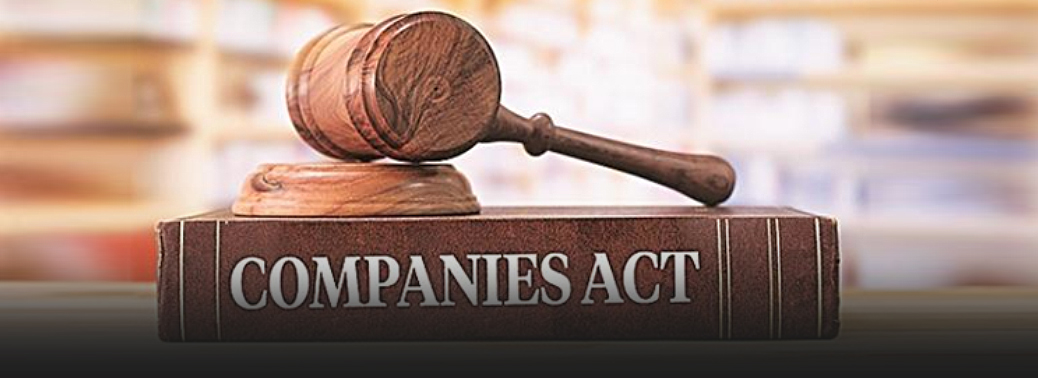
Why in News?
- Lok Sabha passed the Companies (Amendment) Bill, 2019. The legislation is aimed at tightening the Corporate Social Responsibility (CSR) compliance.
Significance of The Bill:
- The amendment will tighten the Corporate Social Responsibility (CSR) compliance and would reduce the load of cases before the National Company Law Tribunal (NCLT).
- It would ensure a greater accountability, better enforcement of the corporate governance norms and compliance management in corporate sector.
- With the amendments, procedural and technical defaults would be decriminalised while compliance would be incentivised.
Highlights of The Bill:
Re-categorisation of certain Offences:
- The 2013 Act contains 81 compoundable offences punishable with fine or fine or imprisonment, or both. These offences are heard by courts.
- The Bill re-categorizes 16 of these offences as civil defaults, where adjudicating officers (appointed by the central government) may now levy penalties instead.
- These offences include:
- (i) issuance of shares at a discount, and (ii) failure to file annual return. Further, the Bill amends the penalties for some other offences.
Corporate Social Responsibility (CSR):
- Under the Act, if companies which have to provide for CSR, do not fully spent the funds, they must disclose the reasons for non-spending in their annual report.
- Under the Bill, any unspent annual CSR funds must be transferred to one of the funds under Schedule 7 of the Act (e.g., PM Relief Fund) within six months of the financial year.
- However, if the CSR funds are committed to certain ongoing projects, then the unspent funds will have to be transferred to an Unspent CSR Account within 30 days of the end of the financial year, and spent within three years.
- Any funds remaining unspent after three years will have to be transferred to one of the funds under Schedule 7 of the Act.
- Any violation may attract a fine between Rs 50,000 and Rs 25,00,000 and every defaulting officer may be punished with imprisonment of up to three years or fine between Rs 50,000 and Rs 25,00,000, or both.
Debarring auditors:
- Under the Act, the National Financial Reporting Authority debar a member or firm from practising as a Chartered Accountant for a period between six months to 10 years, for proven misconduct.
- The Bill amends the punishment to provide for debarment from appointment as an auditor or internal auditor of a company, or performing a company’s valuation, for a period between six months to 10 years.
Commencement of business:
- The Bill states that a company may not commence business, unless it (i) files a declaration within 180 days of incorporation, confirming that every subscriber to the Memorandum of the company has paid for the shares agreed to be taken by him, and (ii) files a verification of its registered address with the RoC within 30 days of incorporation.
- If it fails to comply with these provisions and is found not to be carrying out business, its name of the company may be removed from the Register of Companies.
Registration of charges:
- The Act requires companies to register charges (e.g., mortgages) on their property within 30 days of creation of charge, extendable upto 300 days with the permission of the RoC.
- The Bill changes the deadline to 60 days (extendable by 60 days).
Change in approving authority:
- Under the Act, change in period of financial year for a company associated with a foreign company, has to be approved by the National Company Law Tribunal.
- Similarly, any alteration in the incorporation document of a public company which has the effect of converting it to a private company, has to be approved by the Tribunal. Under the Bill, these powers have been transferred to central government.
Compounding:
- Under the Act, a regional director can compound (settle) offences with a penalty of up to five lakh rupees. The Bill increases this ceiling to Rs 25 lakh.
Bar on holding office:
- Under the Act, the central government or certain shareholders can apply to the NCLT for relief against mismanagement of the affairs of the company.
- The Bill states that in such a complaint, the government may also make a case against an officer of the company on the ground that he is not fit to hold office in the company, for reasons such as fraud or negligence.
- If the NCLT passes an order against the officer, he will not be eligible to hold office in any company for five years.
Beneficial Ownership:
- If a person holds beneficial interest of at least 25% shares in a company or exercises significant influence or control over the company, he is required to make a declaration of his interest.
- The Bill requires every company to take steps to identify an individual who is a significant beneficial owner and require their compliance under the Act.
CODE ON OCCUPATIONAL SAFETY, HEALTH AND WORKING CONDITIONS BILL, 2019
26, Jul 2019

Why in News?
- The Minister of State (I/C) for Labour and Employment Shri Santosh Kumar Gangwar introduced The Code on Occupational Safety, Health and Working Conditions Bill, 2019 in Lok Sabha today to amend the laws regulating the Occupational Safety, Health and Working Conditions of the persons employed in an establishment.
Code on Occupational Safety, Health and Working Conditions Bill, 2019:
- With the ultimate aim of extending the safety and healthy working conditions to all workforce of the country, the Code enhances the ambit of provisions of safety, health, welfare and working conditions from existing about 9 major sectors to all establishments having 10 or more employees.
- The proposed Code enhances the coverage of workers manifold as it would be applicable to all establishments employing 10 or more workers, where any industry, trade, business, manufacture or occupation is carried on, including, IT establishments or establishments of service sector.
- Further the varying threshold of applicability has been made uniform at 10 workers for all establishments except mines and dock where the Code would be applicable even with 1 worker. In order to ensure wider coverage, the definitions of Working Journalists and Cine worker have also been modified to include workers employed in electronic media and all forms of audio-visual production.
- Similarly, the definition of inter-state migrant worker has also been proposed to be modified to include those migrant workers who are being employed directly by the employer from other States without contractor or agent. This proposal would enhance the coverage of the safety, health and working conditions provisions manifold as compared to the present scenario.
Other Features:
- The Code provides basic broad legislative framework with enabling provisions for framing rules, regulations, standards, and bye-laws as per the requirements of different sectors which has Resulted in reduction of 622 sections to 134 sections in the Code. This would result in simple legislation with flexibility in changing the provisions in tune with emerging technologies and makes the legislation dynamic.
- The Bill proposes one registration for an establishment instead of multiple registrations. Presently 6 labour acts out of 13 provide for separate registration of the establishment. This will create a centralized data base and promote ease of doing business. At present, separate registration is required to be obtained under 6 Acts.
- Employer to provide free of cost annual health checks-up for employees above prescribed age for prescribed tests and for prescribed establishments. Increases productivity as it would be possible to detect diseases. Coverage of employees above a certain age for health check-up would promote inclusion.
- First time statutory provision to issue appointment letter to every employee of the establishment with the minimum information prescribed by the appropriate government. The provision of appointment letter will result in formalization of employment and prevent exploitation of the worker.
- The multiple committees under five labour Acts have been substituted by one National Occupational Safety and Health Advisory Board. The National Board is of tripartite nature and has representation from trade unions, employer associations, and State governments. This will result in reduction in multiplicity of bodies/committees in various Acts and simplified and coordinated policy-making.
- Enabling provision for constituting a bi-partite Safety Committee in any class of establishment by appropriate government. It will promote safe and healthy working conditions in an establishment. The participatory nature of the committee will encourage implementation of decisions taken by the management.
- A part of the penalty for contravention of provisions relating to duties of employer leading to death or serious bodily injury to any person may be given to the victim or the legal heirs of the victim by the Court. The part of penalty would help in rehabilitation of injured worker or would provide financial support to the family of deceased.
- Presently, different applicability thresholds exists for welfare provisions like crèche, canteen, first aid, welfare officer etc in different Acts. The proposed Code has envisaged uniform threshold for welfare provisions for all establishment as far as practicably feasible.
- Women permitted to work beyond 7 PM and before 6 AM subject to the safety, holidays, working hours or any other condition as prescribed by appropriate government in respect of prescribed establishments. However, only after taking their consent for night work. This will promote gender equality and is in tune with demands from the various forums including international organizations as it leads to protective discrimination.
Further, the condition of taking consent/ willingness of the women employee for night work would avoid any kind of misuse of the provision. - The provision of one license and one return in place of multiple licenses and returns in existing 13 labour laws subsumed in this Code to save time, resources and efforts of establishments.
IMPLEMENTATION OF POSHAN ABHIYAAN
26, Jul 2019
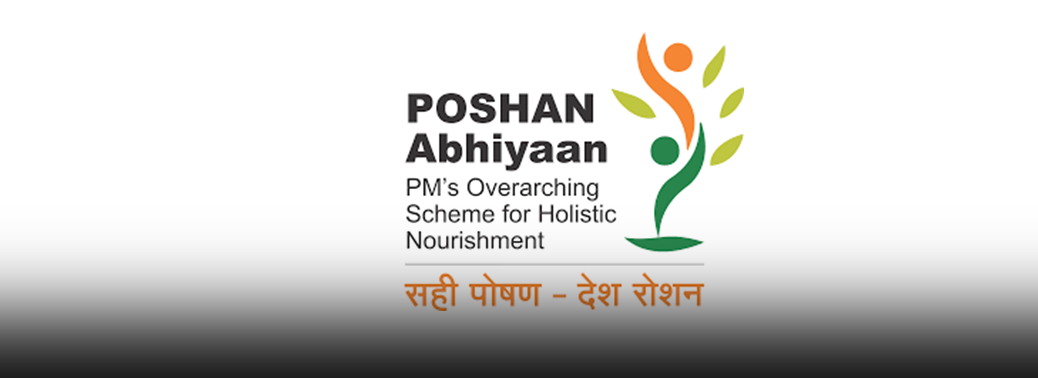
Why in News?
- POSHAN Abhiyaan has been set up by Government of India in 2017 for a three-year time frame.
Objectives:
- Reduce the level of stunting in children (0-6 years) under-nutrition (underweight prevalence) in children (0-6 years) and Low Birth Weight at 2% per annum
- Reduce anaemia among young children (6-59 months), women and adolescent girls at 3% per annum across the country.
Abhiyaan:
- The Abhiyaan ensures convergence with various programmes, organising Community Based Events; incentivizing States/UTs for achieving goals.
- Community Mobilization and Awareness Advocacy leading to Jan Andolan – to educate the people on nutritional aspects. Incremental Learning Approach (ILA); strengthening Field Functionaries.
- Under the Abhiyan, all districts of the 36 States/UTs, including Tamil Nadu, have been covered for implementation in a phased manner.
NORTH EASTERN REGION VISION 2020
26, Jul 2019

Why in News?
- North Eastern Region Vision 2020 document provides an overarching framework for the development of the North Eastern Region.
- The main objective is to bring the north eastern region at par with other developed regions under which different Ministries, including the Ministry of Development of North Eastern Region have undertaken various initiatives.
Reasons for resource flow:
- Mandatory earmarking of at least 10% of GBS of Central Ministries/Departments for North Eastern Region (NER).
- Creation of Non-Lapsable Central Pool of Resources (NLCPR).
- There has been a sharp rise in provisional expenditure (subject to final vetting by Ministry of Finance) by Central Ministries in NER by 83%.
Major initiatives:
- Strengthening infrastructure and connectivity is a major thrust area identified by the Vision document. Several connectivity initiatives have been undertaken in the recent past.
- In the last five years under the schemes of Ministry of DoNER funds were released for road projects, bridges, ISBT, airports, railway in North Eastern Region.
- Moreover, Regional Connectivity Scheme (RCS-UDAN) has been launched to provide connectivity to unserved and underserved Airports within the country.
- Also, to promote regional connectivity, airfare has been made affordable through Viability Gap Funding (VGF). The North East has been kept as a priority area under RCS-UDAN.
- In respect of Rail Connectivity, during the last four years the entire North East Region has been converted to the Broad Gauge (BG) network.
Other major initiatives taken:
- Promotion of MSMEs in North Eastern Region and Sikkim
- Comprehensive Telecom Development Project (CTDP) for the North-Eastern Region
- Comprehensive Scheme for strengthening of Transmission and Distribution Systems (CSST&DS).
- North Eastern Region Power System Improvement Project (NERPSIP)
- Mission Organic Value Chain Development for North Eastern Region scheme
- North East Region Textile Promotion Scheme (NERTPS).
- National Sports University at Imphal, Agartala-Akhaura Rail-Link to connect the existing Agartala station in Tripura to Akhaura Station of Bangladesh Railways
- Development of Brahmaputra and 19 new waterways including Barak.
FREEDOM OF EXPRESSION TO GOVERNMENT EMPLOYEES
26, Jul 2019
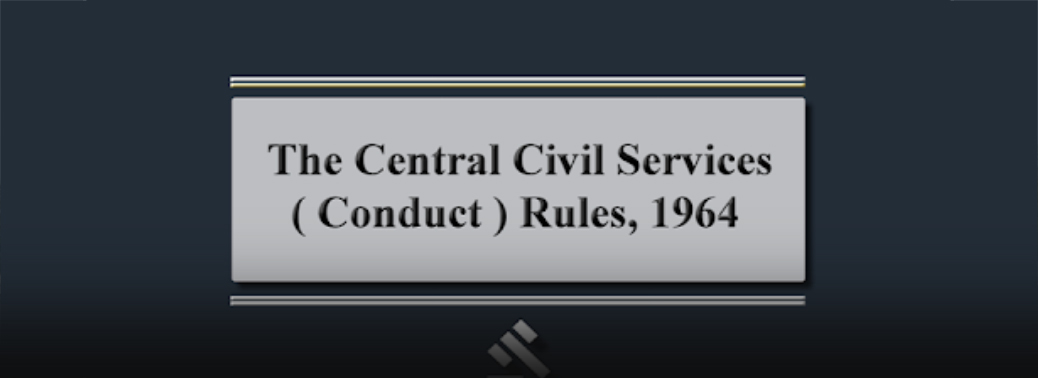
Why in News?
- It is mentioned that as per Rule 8 of Central Civil Services (Conduct) Rules, 1964, no Government servant shall, except with the previous sanction of the Government, own or conduct or participate in the editing or management of, any public media.
Central Civil Services (Conduct) Rules provides:
- Which has the effect of an adverse criticism of any current or recent policy or action of the Central Government or a State Government
- which is capable of embarrassing the relations between the Central Government and the Government of any State
- which is capable of embarrassing the relations between the Central Government and the Government of any foreign State
Exceptions:
- Bonafide expression of views by office-bearers of a trade union or association of Government servants for the purpose of safeguarding the conditions of service of such Government servants or for securing an improvement thereof.
- Views expressed by a Government servant in his official capacity or in the due performance of the duties assigned to him.
UNLAWFUL ACTIVITIES PREVENTION (AMENDMENT) BILL, 2019
26, Jul 2019

Why in News?
- The Lok Sabha has passed the Unlawful Activities (Prevention) Amendment Bill 2019, in a move that gives a big push to India’s internal security machinery.
- The move comes after amendment to the NIA Bill.
UAPA:
- The UAPA is an upgrade on the Terrorist and Disruptive Activities (Prevention) Act TADA, which was allowed to lapse in 1995 and the Prevention of Terrorism Act (POTA) was repealed in 2004.
- It was originally passed in 1967 under the then Congress government led by former Prime Minister Indira Gandhi.
- Till 2004, “unlawful” activities referred to actions related to secession and cession of territory. Following the 2004 amendment, “terrorist act” was added to the list of offences.
Why Amendment?
- The Bill amends the Unlawful Activities (Prevention) Act, 1967, providing special procedures to deal with terrorist activities, and individuals and groups that foster terrorism in India.
Highlights:
- The proposed amendments to the existing Act redefine “Who may commit terrorism “, establishing that under the Act, the Centre may designate an organisation as a terrorist organisation if it commits or participates in acts of terrorism, prepares for terrorism, promotes terrorism, or is otherwise involved in terrorism.
- The Bill also additionally empowers the government to designate individuals as terrorists on the same grounds.
- The Bill also paves the way for the National Investigation Agency (NIA) to seize property as part of investigations into terror cases.
- At the same time, while the existing Act provides for investigation of cases to be conducted by officers of the rank of Deputy Superintendent or Assistant Commissioner of Police or above. The proposed amendment additionally empowers the officers of the NIA to investigate cases — of the rank of Inspector or above.
- Further, the International Convention for Suppression of Acts of Nuclear Terrorism (2005) has also been added in the Second Schedule through this Amendment.
Need for Amendments:
- It is often accused that UAPA Act assigns absolute power to the central government to declare someone as terrorist.
- Terrorism is not just fostered by the gun. Terrorism is also the spread of hate and radicalism.
- If the bill is passed, a person can be declared a terrorist when they take part in terror activities, or provide funds, or harbour a terror theory and then spread it among youth.
CODE ON WAGES BILL, 2019
26, Jul 2019
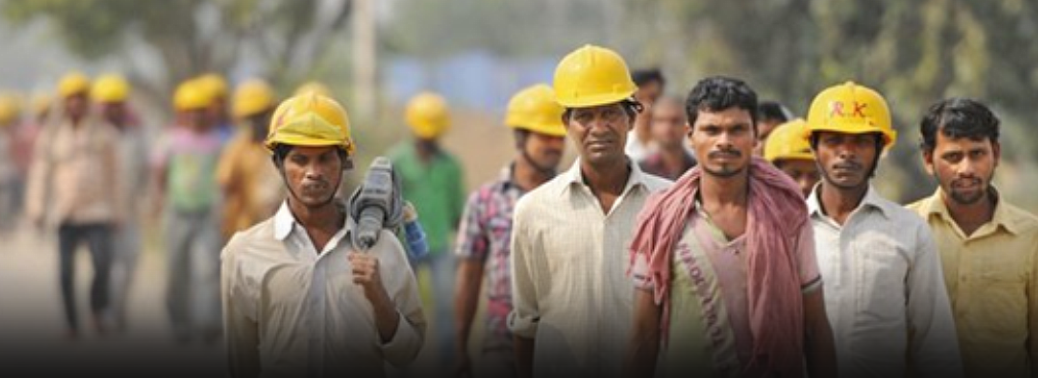
Why in News?
- The Code on Wages Bill, 2019 was introduced in Lok Sabha to amend and consolidate the laws relating to wages and bonus and matters connected therewith.
Code on Wages Bill 2019:
- The Code on Wages Bill, 2019 subsumes relevant provisions of The Minimum Wages Act, 1948, The Payment of Wages Act, 1936, The Payment of Bonus Act, 1965 and The Equal Remuneration Act, 1976. After the enactment of the Code on Wages, all these four Acts will get repealed.
The Salient features of the Code:
- The Code on Wage universalizes the provisions of minimum wages and timely payment of wages to all employees irrespective of the sector and wage ceiling.
- At present, the provisions of both Minimum Wages Act and Payment of Wages Act apply on workers below a particular wage ceiling working in Scheduled Employments only.
- This would ensure “Right to Sustenance” for every worker and intends to increase the legislative protection of minimum wage from existing about 40% to 100% workforce.
- This would ensure that every worker gets minimum wage which will also be accompanied by increase in the purchasing power of the worker thereby giving fillip to growth in the economy.
- Introduction of statutory Floor Wage to be computed based on minimum living conditions, will extend qualitative living conditions across the country to about 50 crore workers.
- It is envisaged that the states to notify payment of wages to the workers through digital mode.
- There are 12 definitions of wages in the different Labour Laws leading to litigation besides difficulty in its implementation.
- The definition has been simplified and is expected to reduce litigation and will entail at lesser cost of compliance for an employer.
- An establishment will also be benefited as the number of registers, returns, forms etc., not only can be electronically filed and maintained, but it is envisaged that through rules, not more than one template will be prescribed.
- At present, many of the states have multiple minimum wages. Through Code on Wages, the methodology to fix the minimum wages has been simplified and rationalised by doing away with type of employment as one of the criteria for fixation of minimum wage.
- The minimum wage fixation would primarily base on geography and skills. It will substantially reduce the number of minimum wages in the country from existing more than 2000 rates of minimum wages.
- Many changes have been introduced in the inspection regimes including web based randomised computerised inspection scheme, jurisdiction-free inspections, calling of information electronically for inspection, composition of fines etc.
- All these changes will be conducive for enforcement of labour laws with transparency and accountability.
- There were instances that due to smaller limitation period, the claims of the workers could not be raised.
- To protect the interest of the workers, the limitation period has been raised to 3 years and made uniform for filing claims for minimum wages, bonus, equal remuneration etc., as against existing varying period between 6 months to 2 years.
- It can be said that a historical step for ensuring statutory protection for minimum wage and timely payment of wage to 50 crore workers in the country has been taken through the Code on Wages besides promoting ease of living and ease of doing business.
BENGALURU GOES LIVE WITH FACIAL BIOMETRICS-BASED AIR TRAVEL
25, Jul 2019
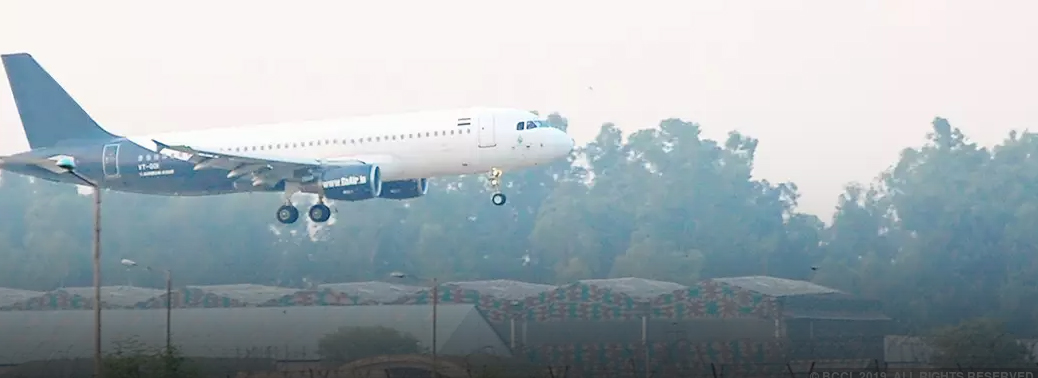
Why in News?
- The Kempegowda International Airport (KIA) rolled out a biometric-based self-boarding facility.
Highlights:
- The passengers had the option of boarding a flight without producing travel documents at each touch point.
- To avail this facility, a passenger has to enrol their ID, biometric data and flight details before entering the terminal.
- The passenger will be authenticated and verified at every touch point by biometric technology.
Paperless Biometric System:
- The Bangalore International Airport Limited (BIAL), the operator of the KIA, is expected to deploy the paperless biometric system at over 350 passenger touch points in Terminal 1 with the final phase of the project.
- In the final stage, this technology will be integrated with the Digi Yatra Central Platform that is currently being architecture by the central government’s Digi Yatra Foundation.
User Data Privacy:
- The BIAL maintains that biometric data is used only for authentication and verification of passengers to assist the boarding process, and not for recognition.
- The process offers the highest degree of safety and security while ensuring stringent standards of safety.
- Passenger data will be deleted within a few hours of completion of air travel.
- Vision Box, the company that developed and installed One – ID biometric platform technology, is compliant with the European Union’s General Data Protection Regulation (GDPR), which adopts privacy by design principles.
MERGER OF NIMH WITH ICMR-NIOH
25, Jul 2019

Why in News?
- The Union Cabinet approved to dissolve National Institute of Miners’ Health (NIMH), an autonomous Institute under Ministry of Mines (MoM) and merge/amalgamate with ICMR-National Institute of Occupational Health (NIOH).
Significance:
- The merger/amalgamation of NIMH with NIOH will prove beneficial to both the Institutes in term of enhanced expertise in the field of occupational health besides the efficient management of public money.
Highlights:
- NIMH was set up by Government of India in 1990
- The Institute conducts applied research in occupational health and hygiene and specializes in providing technical support services to mining and mineral-based industry and endeavours for safe mines and healthy miners through R&D.
- The focus areas of NIOH include a vast array of areas related to occupational health which also includes, occupational medicine and occupational hygiene.
- Expenditure Management Commission recommended, inter-alia, that- “Organisations with similar objectives can be considered for merger to encourage synergy in operations and reduction in cost”.
What Is Occupational Health?
- Occupational health deals with all aspects of health and safety in the workplace and has a strong focus on primary prevention of hazards.
- The health of the workers has several determinants, including risk factors at the workplace leading to cancers, accidents, musculoskeletal diseases, respiratory diseases, hearing loss, circulatory diseases, stress related disorders and communicable diseases and others
ANDHRA PRADESH EMPLOYMENT OF LOCAL CANDIDATES IN INDUSTRIES/FACTORIES ACT, 2019
24, Jul 2019
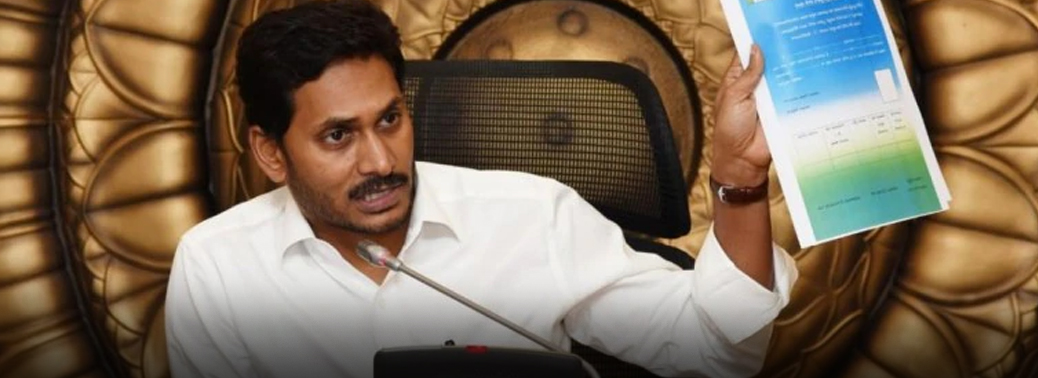
- Context- The Andhra Pradesh Government on Tuesday reserved 75% jobs in private industrial units and factories for residents of the state.
Highlights of The Act:
- The new rules will apply to joint ventures as well as projects under public-private partnerships.
- The law applies to existing units as well as industrial units which will be set up in the state in the future.
- The new law says that if residents with the necessary skills are not available, the companies will have to train them in cooperation with the state government.
- Only the industries listed in the first schedule of the Factories Act – mostly producing hazardous goods like petroleum, pharmaceuticals, coal, fertilisers and cement – have been excluded from the ambit of the Act.
- Companies will have to comply with the new Act within three years of beginning of its operations. They will also have to file quarterly reports about local appointments with a nodal agency.
8 MORE ROUTES START OPERATIONS UNDER UDAN
23, Jul 2019

Why in News?
- Giving further fillip to Regional Connectivity, 8 more routes became functional Under Regional Connectivity Scheme – Ude Desh Ka Aam Nagrik- UDAN of the Ministry of Civil Aviation.
Highlights:
- With the addition of these 8 new routes, total UDAN routes Operational as on date have increased to 194 routes. The scheme seeks to boost regional air connectivity and provides various incentives to airlines. The routes are Mysore – Hyderabad, Mysore – Goa, Mysore – Cochin and Kolkata – Shillong.
UDAN Scheme:
- UDAN is a regional connectivity scheme. The full form of UDAN is ‘Ude Desh ka Aam Nagarik’. The scheme aims to develop smaller regional airports to allow common citizens easier access to aviation services. The following are the stated objectives of the regional connectivity scheme: Operalisation and development of 425 underserved or unserved airports in the country. Boost inclusive economic development by providing faster connectivity
- Development of air transport infrastructure in remote areas aiding job growth.
PANEL FAVOURS CRYPTOCURRENCY BAN IN INDIA
23, Jul 2019

- Context: The committee headed by finance secretary Subhash Chandra Garg has proposed a draft bill “Banning of Cryptocurrency & Regulation of Official Digital Currency Bill, 2019″
Highlights of The Committee Recommendations:
- Proposed banning of private cryptocurrencies in India by enacting a law and imposing fines and penalties for carrying on activities related to cryptocurrencies.
- Proposed a draft bill “Banning of Cryptocurrency & Regulation of Official Digital Currency Bill, 2019″, which has been placed in the public domain.
- The committee has, taken a lenient view on the government launching an official digital currency, asking it to keep an open mind on the matter
It suggested the use of distributed-ledger technology (DLT) or blockchain in India, by banks and other financial firms for processes such as loan-issuance tracking, collateral management, fraud detection and claims management in insurance and reconciliation systems in the securities market.
The committee identifies the potential use cases for blockchain technology in areas such as:
- Payments systems including cross-border and small value payments;
Data identity management or know-your-customer requirements by various financial entities. - Insurance
- Collateral and ownership (including land) registries
- Loan issuance and tracking
- e-stamping
- Trade financing
- Post-trade reporting
- Securities and commodities and
- Internal systems of financial service providers.
- The advantages of using DLT are mainly seen in terms of reducing administration and transaction costs, obviating duplication and improving accuracy of data, improving the speed and efficiency of transactions and detecting fraud.
UGC SCHEME OF ‘PARAMARSH’
21, Jul 2019

Why in News?
- The Union Minister for Human Resource Development launched ‘Paramarsh’ – a University Grants Commission (UGC) scheme for Mentoring NAAC Accreditation Aspirant Institutions to promote Quality Assurance in Higher Education.
‘Paramarsh’:
- This “Paramarsh” scheme will target 1000 Higher Education Institutions for mentoring with a specific focus on quality as enumerated in the UGC “Quality Mandate”.
- Mentor-Mentee relationship will not only benefit both the institutions but also provide quality education to the 3.6 crore students who are enrolling to Indian Higher Education system at present.
Significance of the scheme:
- The Scheme will be a paradigm shift in the concept of mentoring of institution by another well performing institution to upgrade their academic performance and enable them to get accredited by focusing in the area of curricular aspects, teaching-learning & evaluation, etc.
- The scheme is expected to have a major impact in addressing a national challenge of improving the quality of Higher Education in India.
- The scheme will lead to enhancement of overall quality of the Mentee Institutions and enhance its profile as a result of improved quality of research, teaching and learning methodologies.
- Mentee Institution will also have increased exposure and speedier adaptation to best practices.
- “Paramarsh” scheme will also facilitate sharing of knowledge, information and opportunities for research collaboration and faculty development in Mentee Institutions.
SCHEMES FOR INDIGENOUS EMPLOYMENT IN NER
21, Jul 2019
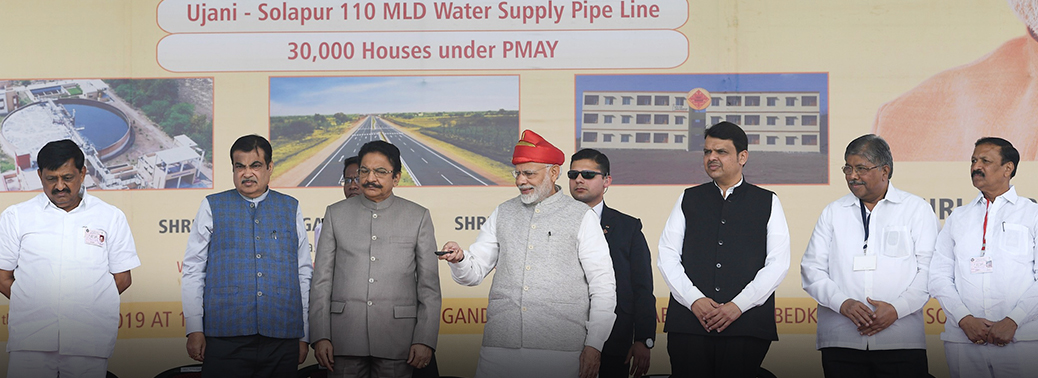
- The North Eastern Handicrafts and Handlooms Development Corporation Limited (NEHHDC):
- The North Eastern Handicrafts and Handlooms Development Corporation Limited (NEHHDC), a Central Public Sector Enterprises (CPSE) of the Ministry of Development of North Eastern Region (DoNER),
- Provides marketing linkage to the artisans and weavers of the North Eastern Region (NER) by conducting exhibitions and craft bazaars in various parts of the country which in turn generates indirect employment for the artisans and weavers.
NERCORMP:
- The North Eastern Region Community Resource Management Project (NERCORMP), a livelihood project under the Ministry of DoNER, has facilitated in establishing community-based micro-credit organizations and non-farm enterprises in its project areas.
- It provides employment to Self Help Groups (SHGs) in 10 districts of 4 States of NER namely Arunachal Pradesh, Assam, Manipur and Meghalaya for enterprise development.
North East Rural Livelihood Project (NERLP):
- A World Bank aided project, being implemented by Ministry of DoNER, provides skill development training, vocational training to unemployed youths & Self-Help Groups (SHGs) in 11 districts of four North East States namely Mizoram, Nagaland, Sikkim and Tripura.
MoUs FOR ENHANCED COOPERATION TO END TB BY 2025
21, Jul 2019
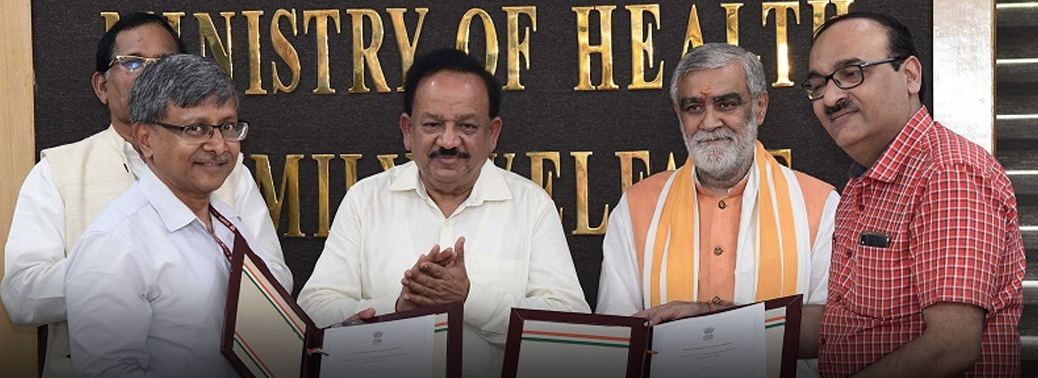
Why in News?
- Ministry of Health and Family Welfare today exchanged MoUs with the Ministry of AYUSH, Ministry of Defence and Ministry of Railways to strengthen inter-ministerial coordination and efforts towards Tuberculosis-free India by 2025.
Highlights:
- Although entirely preventable and curable, Tuberculosis is a major obstacle to India’s human and economic development.
- India, in near future, is predicted to have world’s largest working population and a disease like TB which mostly affects adults in their most productive years, poses a great risk to the country’s economic growth potential.
- Apart from being a public health problem, TB is also associated with poor socio-economic development, marginalization and exploitation.
- The actions required to tackle the socio-economic and structural determinants of TB lie beyond the purview of the health sector alone, calling for a harmonized multisectoral response.
EXPORT PROMOTION SCHEME
19, Jul 2019
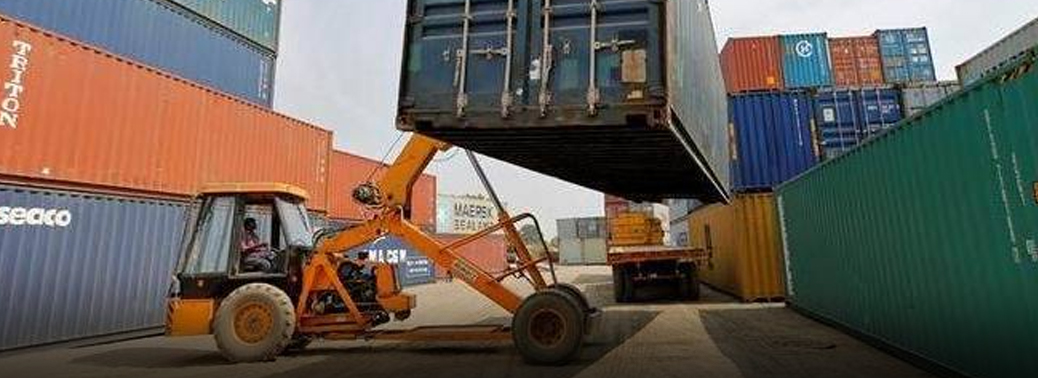
Why in News?
- The Government of India has launched a scheme namely, Trade Infrastructure for Export Scheme (TIES) with the objective to assist Central and State Government Agencies for creation of appropriate infrastructure for growth of exports from the States.
Highlights:
- The Scheme provides financial assistance in the form of grant-in-aid to Central/State Government-owned agencies for setting up or for up-gradation of export infrastructure as per the guidelines of the Scheme.
- The scheme can be availed by the States through their Implementing Agencies, for infrastructure projects with overwhelming export linkages like the Border Haats, Land customs stations, quality testing and certification labs, etc.
- The Government of India strives to ensure a continuous dialogue with the State Governments and Union Territories on measures for promoting exports.
- Also for providing an international trade enabling environment in the States, and to create a framework for making the States active partners in boosting exports from India.
- Under the Foreign Trade Policy (FTP), DGFT operates various Export promotion schemes such as Advance Authorization, Duty Free Import Authorization, Export Promotion of Capital Goods, Merchandise Exports from India Scheme (MEIS) and Services Exports from India Scheme (SEIS).
- To give effect to these schemes, Central Board of Indirect Taxes and Customs has issued various exemption notifications.
Merchandise Exports from India Scheme (MEIS):
- MEIS was introduced in the FTP from 01.04.2015, providing rewards for exporters of specified goods.
- The objective of the MEIS is to offset infrastructural inefficiencies and associated costs involved in exporting goods/products which are produced/manufactured in India.
- The scheme incentivizes exporters in terms of Duty Credit Scrips at the rate of 2, 3, 4, 5, 7 % of FOB Value of exports realized.
- These scrips are transferable and can be used to pay certain Central Duties/taxes including Customs Duties.
Agriculture Export Policy:
- The Agriculture Export Policy was launched in 2018 to harness export potential of Indian agriculture, through suitable policy instruments, to make India global power in agriculture and raise farmers’ income
- This comprehensive “Agriculture Export Policy” aims to increase agricultural exports by integrating Indian farmers and agricultural products with the global value chains.
CANNABIS LEGALIZING ISSUE
19, Jul 2019
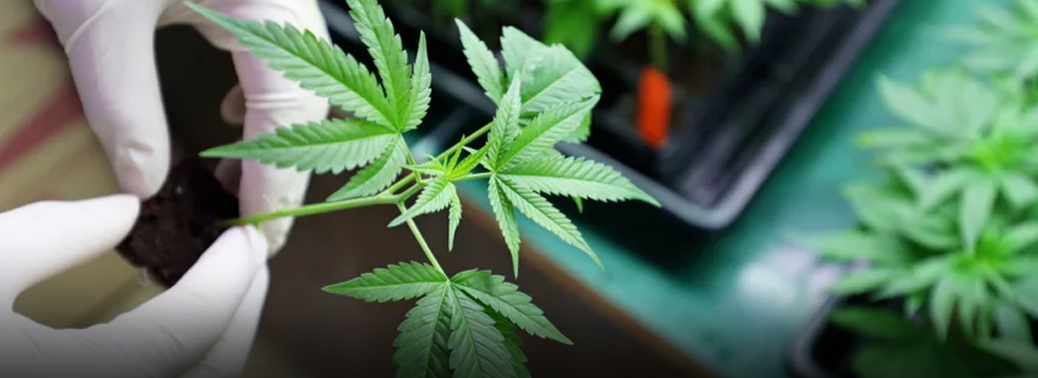
Context:
- Litigation has claimed before the Delhi High Court in its pursuit to bring an end to various existing laws in India that prohibit and criminalise its use.
Background:
- The earliest known reports regarding the use of cannabis in India come from the Atharva-Veda, written around 2000-1400 BCE.
- Cannabis has been consumed in different ways—smoking (ganja), chewing (bhaang), drinking (tea), etc.
- Its plant has been used for manufacturing clothes, shoes, ropes and paper. In ancient India, it was used for treating or alleviating symptoms of several diseases.
Classification:
- The International Classification of Diseases and the Diagnostic and Statistical Manual of Mental Disorders designate cannabis as an addictive substance, with recognised dependence disorders.
NDPS Act:
- The Narcotic Drugs and Psychotropic Substances Act, 1985, prohibited cultivation or production of cannabis plant by anybody, while reserving these rights with central and state governments if they wish to do so, by creating rules later.
Cannabis legalization issue at global level:
- There is a global wave of legalisation of cannabis, based on its medicinal properties and commercial utilities.
- Buoyed by success in the West (Uruguay, some US states, Canada), cannabis supporters are pushing for legalisation in India.
- In the US, the use of marijuana (a more addictive derivative) for medicinal purposes is legal in a number of states, whereas its use for recreational purpose has also been legalised in some states.
- Canada has legalised its use for recreational as well as medicinal purposes.
- Europe recognises the use of marijuana for recreational purposes as a crime, but its use for medical purposes is permitted in many countries.
Medicinal Use:
- There is no good evidence that cannabis is beneficial when used in diseases such as Crohn’s disease, sleep disorder, glaucoma, etc.
- Similarly, there is no data to support its use in oncology practice outside of clinical experiments—cannabis derivatives are known to have immunosuppressive that can promote cancer.
- In summary, its medicinal benefits aren’t as strong as presented by the proponents of legalisation—safer and effective alternatives are available in the market.
Why did US and Canada legalize it?
- With an increasing number of youth (though a minority) supporting legalisation, most policymakers don’t see it a battle worth fighting, even though justified.
- In the US, public opinion was built on decades of misinformation, racial discrimination, police excesses, degree of punishment, incarceration in jail, craving for liberty, etc.
- Also, policymakers seem to be excited about another source of revenue.
Does legalisation help:
- Colorado legalised marijuana around five years ago.
- Expert committeee noted there is substantial evidence that its use may lead to cancer, cardiovascular illness, lung diseases, road accidents, impaired adolescent health, serious drug interaction and reproductive health disorders.
- It reported robust evidence that legalisation may increase unintentional use by children at home. It noted the foetus born to mothers who use marijuana may be seriously harmed.
- Post-legalisation, new types of crimes emerged, such as illegal cultivation, sale, production.
Legalization of Cannabis in Indian Context:
- India has a history of misuse of even prescription drugs that are otherwise beneficial.
- Weak opiates (derivatives of opium) are one of the easily available alternatives to cannabis for medical conditions.
- Codeine-based cough syrups are effective for controlling severe cough, but after reports of rampant misuse.
- In Indian context, when prescription drugs are grossly misused, how can we ensure disciplined used of cannabis? It is obvious that arguments of medicinal or industrial use are simply smokescreens to fool policymakers and swing public support.
Will legalisation worsen our overburdened healthcare system?
- India is struggling to control the three addictive substances of tobacco, alcohol and areca nut.
- As per the Global Adult Tobacco Survey, 270 million Indians use tobacco and it kills around 1.35 million Indians every year.
- Nearly 30% of India’s adult population is using alcohol, leading to 3.3 million deaths. Legalisation of cannabis is not only going to worsen these alarming statistics, but also serve as a gateway for one of these carcinogens.
Conclusion:
- The younger generation is living in an era of personal liberty, rising affluence, more prone to addiction and struggling with personal relationships.
- Introduction of yet another psychoactive drug will wreak havoc on a population still struggling with tobacco, alcohol and pan masala.
- It is unlikely to solve the drug menace in Punjab, Rajasthan and other states.
- Cannabis prohibition is being portrayed as paternalistic nanny-state policy by party hoppers.
- However, promotion of addiction and sufferings among millions is a heavy price to pay for protection of individual freedom of a handful.
- We cannot allow our next generation get trapped into a vortex of poor performance, indiscipline, addiction, psychosis, isolation, insecurity and bleak future.
MOTOR VEHICLES (AMENDMENT) BILL, 2019
18, Jul 2019
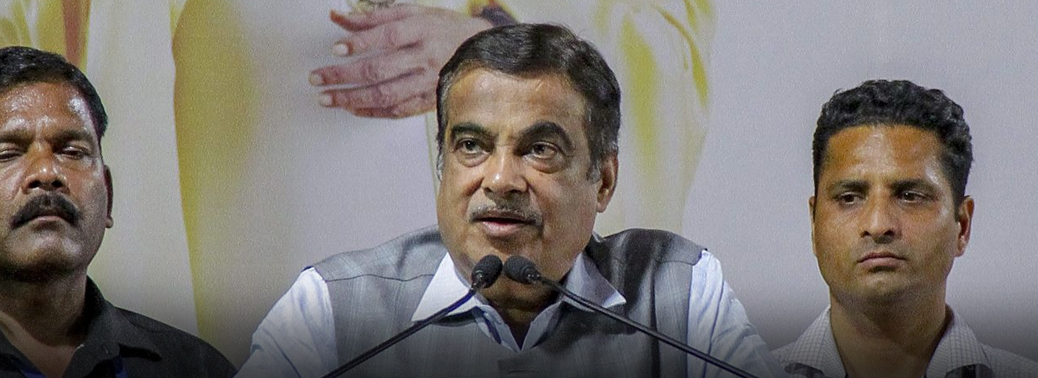
Why in News?
- Minister for Road Transport and Highways has been in the news as he pushes the Motor Vehicles (Amendment) Bill, 2019 in Parliament.
- The amendments proposed by the government to the existing Motor Vehicles Act of 1988 essentially focus on improving road safety.
Key elements of the Proposed Amendment:
Minimum Compensation:
- The Bill proposes to increase the minimum compensation for hit and run cases.
- In particular, in case of death, such compensation would vary from Rs 25,000 to Rs 2 Lakh. In the case of grievous injury, it would vary from Rs 12,500 to Rs 50,000.
- Beyond road safety, the Bill also increases penalties for several offences such as driving under the influence of alcohol and drugs.
Cashless treatment of victims:
- The Bill also enables the Central government to develop a scheme for cashless treatment of road accident victims during the “golden hour” (first 60 minutes following the injury during which doctors have the best chance of saving a life).
Accident Fund:
- The government’s insurance scheme is likely to be funded through a Motor Vehicle Accident Fund that the central government is expected to constitute to provide compulsory insurance cover to all road users in India.
- This fund will be available for the treatment of the injured.
Defining Good Samaritan:
- The Bill also defines a good Samaritan as a person who renders emergency medical or non-medical assistance to a victim at the scene of an accident.
- However, to be seen as one, such assistance must have been given in good faith, voluntarily, and without the expectation of any reward.
- If these conditions are met, such a person will not be liable for any civil or criminal action for any injury to or death of an accident victim, caused due to their negligence in assisting the victim.
National Road Safety Board:
- The Bill also proposes a National Road Safety Board which will advise the central and state governments on all aspects of road safety and traffic management.
- The Bill also enables the central government to order a recall of motor vehicles if it is found that they are defective and can cause harm to other road users or the environment.
- In case of such a recall, the manufacturers would either have to replace the faulty vehicle or pay full compensation to the customer.
Regulating Digital Intermediaries:
- The Bill also attempts to plug a policy gap that has been introduced by the emergence of shared economy concepts and technology.
- As such, it defines taxi aggregators as digital intermediaries or market places which can be used by passengers to connect with a driver for transportation purposes.
- These aggregators will be issued licenses by state, but they must also comply with the Information Technology Act, 2000.
BROADBAND READINESS INDEX
18, Jul 2019
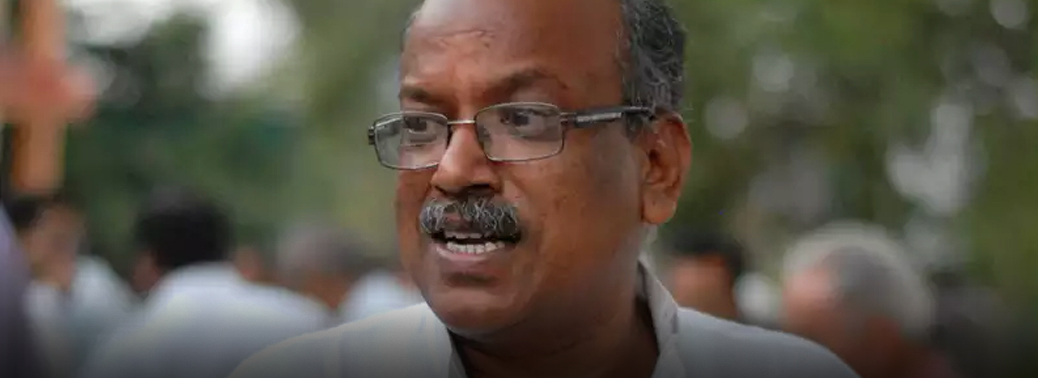
Why in News?
- Department of Telecom (DoT) and the Indian Council for Research on International Economic Relations (ICRIER) signed a Memorandum of Understanding (MoU) to develop a Broadband Readiness Index (BRI) for Indian States and Union Territories (UT).
Highlights:
- The National Digital Communication Policy (NDCP) 2018 acknowledged the need for building a robust digital communications infrastructure leveraging existing assets of the broadcasting and power sectors including collaborative models involving state, local bodies and the private sector.
- Accordingly, the policy recommended that a BRI for States and UTs be developed to attract investments and address Right of Way (RoW) challenges across India.
Broadband Readiness Index:
- The BRI consists of two parts. Part I will focus on infrastructure development based on the measurement of nine parameters. Part II consists of demand side parameters which will be captured through primary surveys.
- It will include indicators such as percentage of households using computers/ laptops with internet connection, percentage of households with fixed broadband connection, internet users as a percentage of the population, smart phones density, percentage of households with at least one digitally literate member, etc.
- The primary survey will be conducted annually until 2022.
Details of the index:
- Index will appraise the condition of the underlying digital infrastructure and related factors at the State/UT level.
- Such an exercise will provide useful insights into strategic choices made by States for investment allocations in ICT programmes.
- In the spirit of competitive federalism, the index will encourage states to cross learn and jointly participate in achieving the overall objective of digital inclusion and development in India.
- The framework will not only evaluate a state’s relative development but will also allow for better understanding of a state’s strengths and weaknesses that can feed into evidence-based policy making.
- The methodology developed as a part of this research will be adapted and used on an annual basis for systematic evaluation of state-performance on metrics set out as the goals for 2022 under the new policy.
- As a result, ranking and understanding State/UT performance over time will be an important part of the exercise.
- The development of BRI will be a collaborative exercise with stakeholders including State governments and industry associations like the Tower and Infrastructure Providers Association (TAIPA), the Internet Service Providers Association of India (ISPAI) and the Cellular Operators Association of India (COAI).
- This will be a first of its kind exercise that will comprehensively measure the development of telecom infrastructure at the sub national level.
NATIONAL DIGITAL HEALTH BLUEPRINT (NDHB)
17, Jul 2019

- Prepared by a committee constituted by the Ministry of Health and Family Welfare
- Aims to create an implementation framework for the National Health Stack (NHS) proposed by NITI Aayog.
What is National Health Stack (NHS)
- The National Health Stack (NHS) envisages a centralized health record for all citizens of the country in order to streamline the health information and facilitate effective management of the same.
Objectives of NDHB
- Establishing and managing the core digital health data and the infrastructure required for its seamless exchange;
- Promoting the adoption of open standards by all the actors in the National Digital Health Eco- system, for developing several digital health systems that span across the sector from wellness to disease management;
- Creating a system of Personal Health Records, based on international standards, and easily accessible to the citizens and to the service providers, based on citizen-consent;
- Following the best principles of cooperative federalism while working with the States and Union Territories for the realization of the Vision;
Promoting Health Data Analytics and Medical Research; - Enhancing the efficiency and effectiveness of Governance at all levels;
- Ensuring Quality of Healthcare.
- Leveraging the Information Systems already existing in the health sector.
NDHB Principle
- The key principles of the Blueprint include, from the domain perspective, Universal Health Coverage, Inclusiveness, Security and Privacy by Design, Education and Empowerment of the citizens, and from the technology perspective, Building Blocks, Interoperability, a set of Registries as Single Sources of Truth, Open Standards, Open APIs and above all, a minimalistic approach.
GOOD SAMARITAN GUIDELINES
16, Jul 2019

Why in News?
- Ministry of Road Transport and Highways has issued guidelines in pursuance of order of Hon’ble Supreme Court of India to protect the Good Samaritans in case of road accidents.
Good Samaritan:
- A Good Samaritan is a bystander, who voluntarily comes forward to administer immediate assistance or emergency care to a person injured in an accident, or crash, or emergency medical condition, or emergency situation.
Significance of Good Samaritan law:
- In the last ten years, road crashes have killed over 13 lakh people in India. According to the Law Commission of India, 50% of these victims died of preventable injuries and could have been saved if they had received care on time.
How law came into force:
- On March 30, 2016, the Supreme Court of India gave “force of law” to the guidelines for the protection of Good Samaritans issued by the Ministry of Road Transport and Highways.
- The purpose of a Good Samaritan law is to provide legal protection to bystanders who come to the aid and rescue of victims of road crashes.
How Good Samaritan is protected:
- A Good Samaritan will not be liable for any civil or criminal action for any injury or death of the victim
- Good Samaritan who informs police or emergency service regarding an injured person not to be compelled to reveal his personal details
- Disciplinary action against public officials who coerce Good Samaritan to reveal his personal details
- Good Samaritans not to be forced to bear the initial cost of treatment: Ministry of Health and Family Welfare (MoHFW) to issue guidelines that no public or private hospital can demand payment for registration and admissions costs from the Good Samaritans
- Hospitals cannot refuse treatment to a victim: Lack of response by a doctor in an emergency situation to be considered as a “Professional Misconduct” and disciplinary action shall be taken against such a doctor
- The Good Samaritan can choose to be an eyewitness and cannot be compelled
- Eye witness to be examined in a single occasion
- Video conferencing may be used for examination of a Good Samaritan
LIFESPAN OF SCHEDULED TRIBE PEOPLE
16, Jul 2019
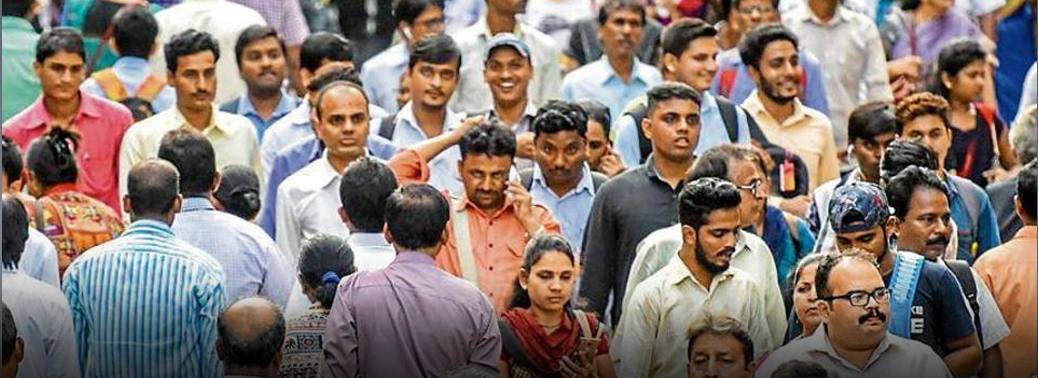
Why in News?
- According to data from the National Census 2011 to estimate, by indirect methods, the life expectancy for the Scheduled Tribes (STs) and non-ST population in India is 63.9 years, as against 67 years for general population.
- The reasons for shorter lifespan include gaps in various health and nutritional indicators, education level, poverty level, between ST and non-STs, traditional life styles, remoteness of habitations & dispersed population.
Steps taken by Government:
- Under National Health Mission (NHM), support is being provided to States for strengthening their healthcare system including for upgradation of existing and setting up new public health infrastructure based on requirements posed by the States/UTs.
- All tribal districts whose composite health index is below the State average have been identified as High Priority Districts (HPDs) and receive more resources per capita under the NHM as compared to the rest of the districts in the State.
- As per the budget announcement 2017-18, 1.5 lakh Health Sub Centres and Primary Health Centres are being transformed into Health and Wellness Centres (HWCs)
- The Ayushman Bharat – Health and Wellness Centres (AB-HWCs) aim to provide an expanded range of services to include care for non – communicable diseases, palliative and rehabilitative care, Oral, Eye and ENT care, etc
- Ministry of Tribal Affairs supplements the efforts of Central line Ministries as well as State Governments for addressing needs of education, health and nutrition, skill development, livelihood etc. of tribals/ tribal areas by way of critical gaps filling.
CALLS FOR SEPARATE LAW ON EVICTIONS OF URBAN POOR.
15, Jul 2019
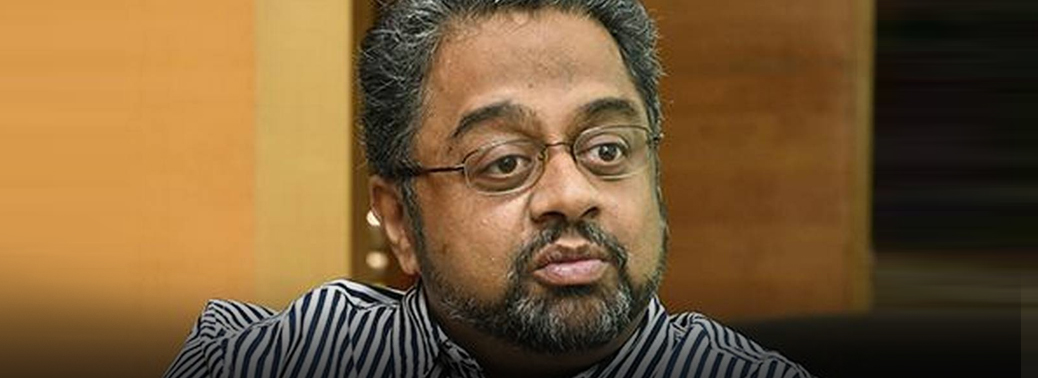
Stats
- Government authorities, at both the central and state levels, demolished over 53,700 homes, thereby forcefully evicting more than 260,000 (2.6 lakh) people across urban and rural India, including the homeless
Major Findings:
- Forced evictions occurred across urban and rural areas – in cities, towns, and villages.
- They took place for a range of reasons and under various guises, including: ‘city beautification’ projects, mega events, and interventions aimed at creating ‘slum-free cities’; infrastructure and ostensible ‘development’ projects; forest and wildlife protection; and, disaster management efforts.
- In most of the reported eviction cases, state authorities did not follow due process established by national and international standards.
- In the majority of cases, the state has not provided resettlement; where provided, resettlement is largely inadequate. Forced evictions are thus contributing to a rise in homelessness.
- All cases of forced eviction resulted in multiple, and often gross, human rights violations.
- Through these acts of eviction and demolition of homes, central and state government authorities have violated national and international laws, policies, guidelines, and schemes.
- Thousands of families across India are currently threatened with the risk of eviction and displacement.
City Beautification’ Projects:
- Housing and Land Rights Network (HLRN) an NGO, finds that the highest percentage of reported evictions (99 of 213 cases) were carried out for ‘slum4 clearance’ drives and ‘city beautification’ projects. The notion of the state that ‘city beautification’ implies removing the poor from cities reflects an alarming prejudice and discrimination against the country’s most marginalized populations.
- It also indicates the criminalisation of poverty.
Separate law:
- The authorities in India, instead of seeking to evict a large number of the urban poor before implementing development projects, can adopt a new kind of social compact with the community concerned and real estate developers. Examples in Colombia and Argentina where local governments came together with private real estate developers and the respective communities for improving housing for slum dwellers. the urban poor were provided with better houses at the same place where they were living earlier while a portion of the land was released for redevelopment.
- Resettlement policy
- India did not have a resettlement policy,
- Separate law on evictions on the lines of one in South Africa.
Recommendation:
- Recognize and uphold the human right to adequate housing, which includes security of tenure and the right to freedom from forced evictions, of all residents of India.
- Take immediate measures towards restitution of human rights of all affected persons by providing adequate resettlement, rehabilitation, and compensation; restoring homes, livelihoods, basic services, and education; and, enabling return to original sites of residence, where possible. Grant compensation to all affected persons, based on human rights assessments and criteria, for all losses—material and non-material—and damage incurred during the eviction/relocation process. Investigate incidents of forced eviction and take punitive action against those found guilty of violating the law and human rights.
Conclusion:
- Unless concerted efforts are adopted by both the central and state governments to incorporate a strong human rights approach in the conceptualization and implementation of schemes, the targets of ‘housing for all’ will continue to remain mere rhetoric.
- It is only through the respect, protection, and fulfilment of the human rights of the urban and rural poor to their lands and homes, that India’s housing crisis can be resolved.
STUDY IN INDIA’ PROGRAMME
14, Jul 2019

Why in news?
- To facilitate Internationalization of Higher Education in India, a Programme viz. ‘Study in India’ is under implementation.
Objectives:
- To make India a preferred education destination/hub for foreign students;
- Improve the soft power of India with focus on the neighbouring countries
- Use it as a tool in diplomacy;
- To rapidly increase the inflow of inbound International Students in India through systematic brand-building,
- Marketing, social media and digital marketing campaigns;
- To increase India’s market share of global education exports;
- Improvement in overall quality of higher education;
- To reduce the export-import imbalance in the number of international students;
- Growth in India’s global market share of International students;
- Increase in global ranking of India etc.
Special Focus:
- The programme focuses on attracting International students from select 30 plus countries across South-East Asia, Middle East and Africa.
- The programme envisages participation of select reputed Indian institutes/universities by way of offering seats for the International students at affordable rates, along with fee waivers to meritorious foreign students ranging from 100% to 25%.
- A centralised admission web-portal (https://studyinindia.gov.in) acts as a single window for the admission of foreign students. With the increase in number of foreign students, the global ranking of the Indian Higher Educational institutions will improve.
- The domestic students shall be exposed to a more diverse peer group and also get greater International exposure culminating in enhanced interest of Indian students to study in the country.
- This information was given by the Union Minister for Human Resource Development, Dr. Ramesh Pokhriyal ‘Nishank’ in a written reply in the Rajya Sabha today.
MODEL TENANCY ACT
14, Jul 2019
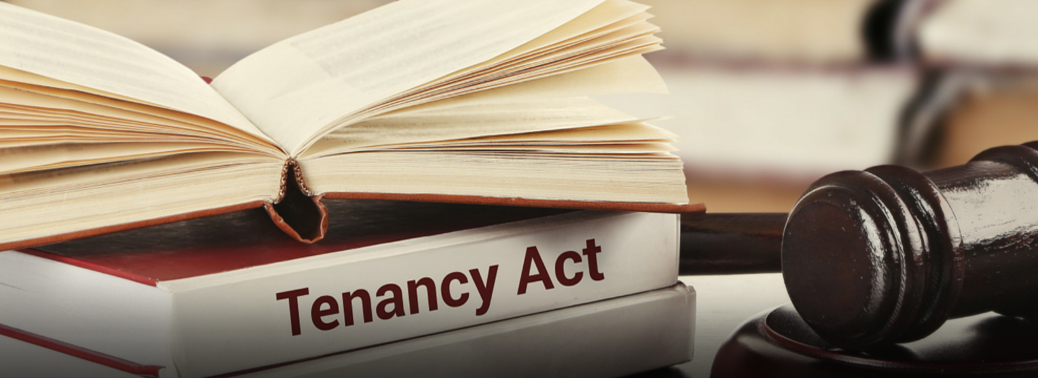
Why in News?
- The Ministry of Housing and Urban Affairs has drafted a ‘Model Tenancy Act’, 2019 which envisages to balance the interest and rights of both the owner and tenant and to create an accountable and transparent ecosystem for renting the premises in disciplinedand efficient manner.
Model Tenancy Act:
- Act will enable creation of adequate rental housing stock for various income segmentsof society including migrants, formal and informal sector workers, professionals, students etc. and increase access to quality rented accommodation, enable gradual formalization of rental housing market.
- It will help overhaul the legal framework vis-à-vis rental housing across the country. It is also expected to give a fillip to private participation in rental housing for addressing the huge housing shortage across the country.
- The Draft MTA will also promote growth of rental housing and investment in the sector and promote entrepreneurial opportunities and innovative mechanism of sharing of space.This MTA will be applicable prospectively and will not affect the existing tenancies.
Features of Draft Model Tenancy Act:
- MTA stipulates a robust grievance redressal mechanism comprising of Rent Authority, Rent Court and Rent Tribunal.
- It has been proposed to cap the security deposit equal to a maximum of two month’s rent in case of residential properties and, minimum of one month’s rent in case of non-residential property.
- After coming into force of this Act, no person shall let or take on rent any premises except by an agreement in writing.
- The Model Act provides for its applicability for the whole of the State i.e. urban as well as rural areas in the State.
- Within two months of executing rental agreement both landowner and tenant are required to intimate to the Rent Authority about the agreement and within seven days a unique identification number will be issued by the Rent Authority to the both the parties.
- A digital platform will be set up in the local vernacular language of the State for submitting tenancy agreement and other documents.
- A copy of the draft Act has also been shared with the States/UTs for seeking their views/comments.
- Once finalized the Model Act will be shared with the States/Union Territory (UTs) for adoption.
Significance:
- As per Census 2011, nearly 1.1 crore houses were lying vacant in the country and making these houses available on rent will complement the vision of ‘Housing for All’ by 2022.
- The existing rent control laws are restricting the growth of rental housing and discourage the owners from renting out their vacant houses due to fear of repossession.
- One of the potential measures to unlock the vacant house is to bringing transparency and accountability in the existing system of renting of premises and to balance the interests of both the property owner and tenant in a judicious manner.
CCTV IN CLASSROOMS- ANALYSIS
13, Jul 2019
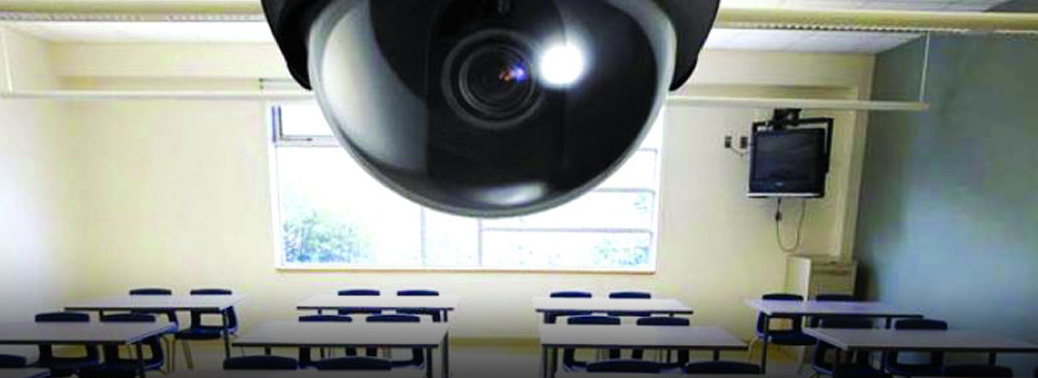
- Context– Project to install CCTV cameras inside all classrooms in Delhi state schools.
Delhi Government Stand:
Empowering Parents
- In private schools, parents are empowered by their own education and economic leverage due to the fees they pay. Parental oversight has been the bedrock of effective school management. CCTV surveillance would bring empowerment to parents.
Parent Participation
- School Management Committees (SMCs), parent bodies mandated by the Right to Education Act. They have been empowered to monitor and supervise basic deliverables of schools, such as teacher attendance, healthy mid-day meals, clean washrooms, drinking water, etc. The CCTV in classrooms project is the next step towards increasing accountability of schools.
Accountability:
- By sharing feeds with parents, it is actually ensuring that the crores of public money invested into CCTVs are not wasted.
- Often, CCTVs fail to serve their purpose for lack of motivated monitoring.
- Outsourcing of the monitoring to an invested stakeholder like parents is actually a smart innovation.
Child Care:
- The CCTV feeds can aid parents to identify several problems their children may be facing, including bullying, corporal punishment, inadequate attention spans, teacher absenteeism and even student truancy. It will empower them to not just raise their children better but also to ask the right questions to their child’s school.
Issue of Privacy Breach
- Classrooms cannot be classified as private by any stretch of imagination.
- feed being provided to parents is highly restricted.
- Only the feed for their own children will be provided to parents.
- The feed does not include audio, and can only be accessed live.
Deterrence for Crimes
- If CCTVs can be deterrents to crime outside schools, they can be deterrents within too.
Argument Against CCTV Installation in Schools:
The Aim of Education Isn’t Just Disciplinary:
- While a school is meant to teach discipline, it is also the space where students can make mistakes and subsequently learn from them.
- Creating panopticons inside schools instils fear, not values.
Classrooms Aren’t Public Spaces Either:
- Classrooms cannot be classified as private.
- However, schools are not as public as a footpath.
- The expectation of relative privacy is what allows students the freedom to express themselves, make mistakes, and inculcate creativity and imagination.
- The Delhi government cannot assume that constant surveillance of every activity will improve the learning environment.
Lack of digital infrastructure:
- Internet penetration in urban India still stands at 64.84%, including multi-SIM usage. In cases where parents don’t have smartphones and internet access, what does the government intend to do?
Phone sharing:
- Shared access to a phone is a common habit, and the Delhi government has still not clarified, despite our repeated queries, how they intend to verify a parent’s identity on the DGS Live app.
Access to Videos:
- Creating a massive repository of video footage of children is a phenomenally bad idea, and a violation of their privacy.
- In the absence of any legislative and judicial oversight, it can be easily abused.
Conclusion:
- There should be proper white paper published by Delhi Government regarding CCTV installation so that public understands the motives and undue activity can be restricted.
PROTECTION OF CHILDREN AGAINST SEXUAL OFFENCES ACT (POCSO)
12, Jul 2019
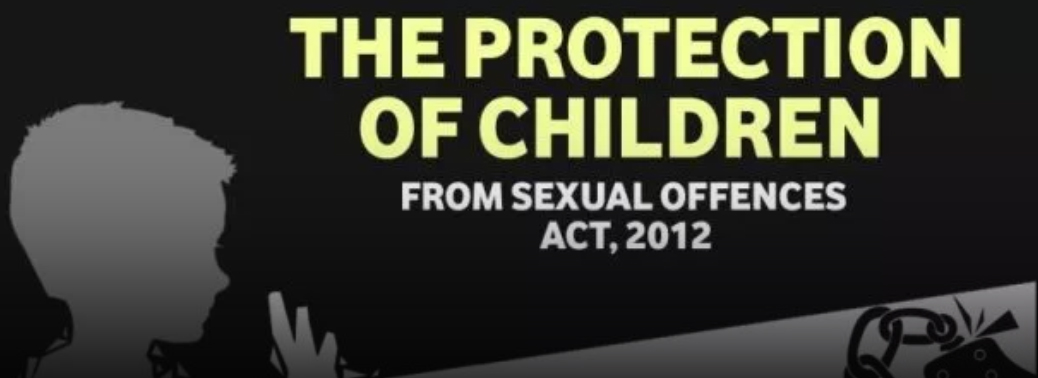
- Context– Cabinet has approved a new definition for child pornography in its amendments to the POCSO Act.
What is POCSO Act:
- The POCSO Act provides for the protection of children from offences of sexual assault, sexual harassment and pornography.
- The Act lays down child-friendly mechanisms for reporting, recording of evidence, investigation, and speedy trial offences through designated Special Courts.
- The Act defines “child” as any person below 18 years of age.
Stats of Child Abuse:
- Child Abuse Report, Women and Child Development India, 2007
- Half of the country’s children face some form of sexual abuse, with 21% having faced severe sexual abuse.
- Boys account for around 53% and girls for 47% of all children reporting abuse.
Features of POCSO Act 2012
Aggravated Sexual Assault
- The POCSO Act criminalises penetrative and non-penetrative sexual assault. It makes a distinction between “sexual assault” and “aggravated sexual assault”.
- “Aggravated sexual assault” is under certain circumstances where the child victim is mentally ill or when the offence has been committed by a person in a position of trust or authority (e.g. family member, police officer, teacher, or doctor;)
Special Courts and Public Prosecutors
- The POCSO Act requires that all trials be conducted in-camera, to ensure that a child’s identity is not revealed.
- The Act requires State governments to set up Special Courts.
- These Courts can determine the amount of compensation for the treatment and rehabilitation of the child.
- Cases before the Court must be disposed within one year from the date they were reported.
- State Governments are required to appoint Special Public Prosecutors (SPP) who will exclusively address POCSO cases.
Child-Friendly Courts
- Avoiding exposure to the accused is a crucial component in protecting the best interests of the child, as this ensures that the child is not traumatised by facing the accused, as well as it ensures that the opportunity for the accused and his lawyers to intimidate the child is minimised.
Victim Compensation
- In addition to the punishment, the POCSO Act requires Courts to prescribe a direct payment of compensation. This victim compensation may be used for medical treatment or rehabilitative purposes.
Recent Amendments to bill: / Child pornography
- Watching, possessing or circulating animations or cartoons that depict a minor engaging in a sexually explicit conduct could land person in jail.
- law will also apply to pornographic content where adults or young adults pretend to be children. Fine for possessing child porn to ₹5,000 from the earlier proposal of ₹1000.
Conclusion:
- While the mandate of the legislation is truly radical in that it aims to protect children against sexual abuse, and provides for a victim sensitive criminal justice process, there are several snags in its implementation.
- Serious open discussion on child abuse can and is taking place.
- We need to use this momentum to make lasting systemic change; for our children, it is the least we can do.
INITIATIVES UNDERTAKEN TO IMPROVE THE QUALITY OF EDUCATION
10, Jul 2019

Different initiatives undertaken by Govt. to improve quality of Education:
- The Central Government has launched an Integrated Scheme for School Education – Samagra Shiksha, from 2018-19 which subsumes the erstwhile centrally sponsored schemes of Sarva Shiksha Abhiyan (SSA), Rashtriya Madhyamik Shiksha Abhiyan (RMSA) and Teacher Education (TE).
- Under Samagra Shiksha, funds are given to all States and UTs for various interventions to improve the quality of education such as training of in-service teachers, headmasters and principals, remedial teaching for academically weaker students, provision of library grants to schools, ICT and digital initiatives, strengthening of teacher education institutions, Rashtriya Avishkar Abhiyan, Padhe Bharat Badhe Bharat, etc.
- In order to focus on quality education, the Central rules to the Right of Children to Free and Compulsory Education (RTE) Act have been amended to include reference on class-wise, subject-wise Learning Outcomes for all elementary classes. The National Council of Educational Research and Training (NCERT) conducted a National Achievement Survey, under which learning outcomes of students were evaluated, through a District level sampling and gaps were identified.
- Government of India has decided to participate in the Programme for International Students Assessment (PISA) to be conducted by the Organization for Economic Cooperation and Development (OECD) in 2021.
- Approval has been given for conducting a Census based audit called Shagunotsav of all government and government aided schools in all States and UTs. Further, in 2019-20 approval has been given for conducting a School Based Assessment (SBA) of all elementary stage students, to evaluate learning outcomes.
- MHRD has designed a 70 indicators-based matrix Performance Grading Index (PGI) to grade the States and UTs. To collect timely and accurate data, an Educational Management Information System called UDISE+ (UDISE plus) has been launched in 2018-19.
- In 2019-20, approval has been given for setting up Youth and Eco Club in all Government Schools across the country. In order to experience and celebrate the rich cultural diversity of India and to encourage experimental learning, Rangotsav was organized in schools in 2018-19.
FOOD AND NUTRITION SECURITY ANALYSIS, INDIA, 2019
09, Jul 2019
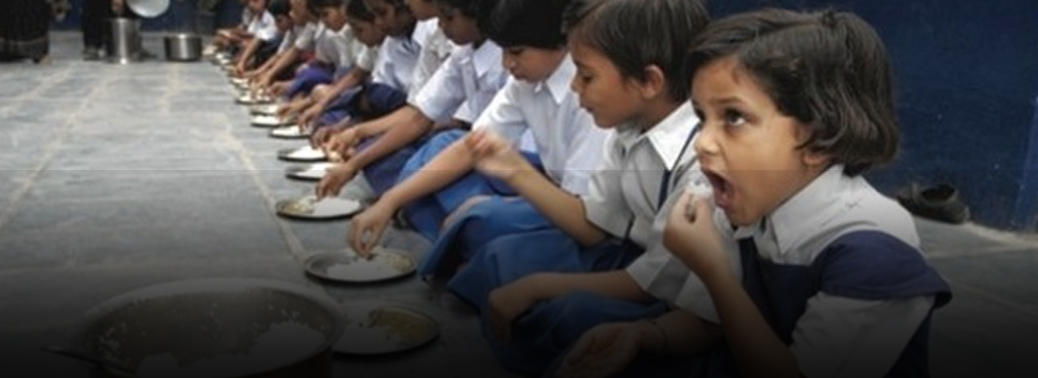
Why in News?
- The Food and Nutrition Security Analysis, India, 2019, a report by the MoSPI and The World Food Programme lists Maharashtra as one of the six States with high levels of stunting and underweight.
- The State also has a prevalence of stunting and wasting.
- Here’s a look at the highlights of the report and overall malnutrition in Maharashtra.
Malnutrition:
- Malnutrition, in all its forms, includes under nutrition (wasting, stunting, underweight) inadequate vitamins or minerals, overweight, obesity, and resulting diet-related non- communicable diseases.
Types of Malnutrition:
- Moderate Acute malnutrition (MAM): Children aged between six months and 59 months who are between the -2 and -3 standard deviation for weight for height (wasting) score.
- Severe Acute Malnutrition (SAM): Children aged between six months and 59 months and have a weight for height (wasting) score 3 standard deviations below the median, have a mid-upper-arm circumference less than 115 mm, or the presence of bilateral edema.
- Severe Chronic Malnutrition (SCM): Calculated with the Z-score defined as a height-for- age index less than –3 standard deviations from the mean weight of a reference population of children of the same height and/or having edema.
- Stunting: Calculation is based on height-for-age. It is is associated with an underdeveloped brain, poor learning capacity, and increased nutrition-related diseases.
- Wasting: Calculated by weight-for-height. It is associated with decreased fat mass. Also known as wasting syndrome, it causes muscle and fat tissue to waste away.
- Underweight: Calculated by the weight-for-age formula. It is a body weight considered to be too low to be healthy. It can reflect both stunting and wasting.
Food and Malnutrition in the Country:
- Over the last 20 years, total food grain production in India increased from 198 million tonnes to 269 million tonnes.
- Despite increase in food production, the rate of malnutrition in India remains very high.
- In the food basket, it turns out that in both urban and rural areas, the share of expenditure on cereal and cereal substitutes has declined between 1972-73 and 2011-12, from 57% to 25% in rural areas and from 36% to 19% in urban areas.
- The energy and protein intake from cereals has decreased in both rural and urban India, largely because of increased consumption of other food items such as milk and dairy products, oils and fat and relatively unhealthy food such as fast food, processed food, and sugary beverages.
- The consumption of unhealthy energy and protein sources is much higher in urban areas.
Double Burden of Malnutrition:
- For several decades India was dealing with only one form of malnutrition– undernutrition. In the last decade, the double burden which includes both over- and undernutrition, is becoming more prominent and poses a new challenge for India.
- From 2005 to 2016, prevalence of low (< 18.5 kG/M2) body mass index (BMI) in Indian women decreased from 36% to 23% and from 34% to 20% among Indian men. During the same period, the prevalence of overweight/obesity (BMI > 30 kG/M2) increased from 13% to 21% among women and from 9% to 19% in men.
- Children born to women with low BMI are more likely to be stunted, wasted, and underweight compared to children born to women with normal or high BMI.
States Performance:
- The highest levels of stunting and underweight are found in Jharkhand, Bihar, Uttar Pradesh, Madhya Pradesh, Gujarat and
- At the national level, among social groups, the prevalence of stunting is highest amongst children from the STs (43.6 percent), followed by SCs (42.5 percent) and OBCs (38.6 percent). The prevalence of stunting in children from ST in Rajasthan, Odisha and Meghalaya is high while stunting in children from both ST and SC is high in Maharashtra, Chhattisgarh and Karnataka.
- Prevalence of wasting is highest in Jharkhand (29.0%) and above the national average in eight more States (Haryana, Goa, Rajasthan, Chhattisgarh, Maharashtra, MP, Karnataka and Gujarat) and three UTs (Puducherry, Daman and Diu and Dadra and Nagar Haveli).
- Prevalence of underweight is also highest in Jharkhand (47.8%) and is above the National average in seven more States (Maharashtra, Rajasthan, Chhattisgarh, Gujarat, UP, MP and Bihar) and one UT (Dadra and Nagar Haveli).
SURROGACY (REGULATION) BILL, 2019
07, Jul 2019

Why in News?
- The Cabinet has approved the introduction of Surrogacy (Regulation) Bill, 2019 that aims to prohibit commercial surrogacy in India.
Highlights:
- The Bill proposes to regulate surrogacy in India by establishing a National Surrogacy Board at the central level and state surrogacy boards and appropriate authorities in the state and Union Territories.
- The purpose of the Bill is to ensure effective regulation of surrogacy, prohibit commercial surrogacy, and allow ethical surrogacy.
- While commercial surrogacy will be prohibited, including sale and purchase of human embryos and gametes, ethical surrogacy for needy couples will be allowed on fulfilment of stipulated conditions.
- It will also prevent exploitation of surrogate mothers and children born through surrogacy.
- There will not be any financial implications, except for the meetings of the National and State Surrogacy Boards and appropriate authorities, which will be met out of the administrative budgets of respective departments.
Concerns with Commercial Surrogacy:
- Procreation is not just about furthering the family lineage, but also about succession, tradition and legality.
- Having a child is about putting a biological system in place, not just caring for societal mores.
- There is therefore a need to define the legality and ethicality of the practice.
- Commercial surrogacy can lead to complaints of exploitation of women, especially those from the economically weaker section, because it would involve financial compensation, the adequacy of which can always be challenged.
- Pregnancy remains a biological phenomenon, with its attendant complications, necessitating proper medical care, the grossness of which could be open to challenge in case something goes wrong.
- Children born out of surrogacy can also face the problems of citizenship, abandonment and abuse, another aspect that needs to be taken care of.
- There is also the problem of jurisdiction because not all countries permit it. Couples wanting a surrogacy arrangement may travel to a country that permits it.
MINIMUM WAGE SYSTEM
05, Jul 2019
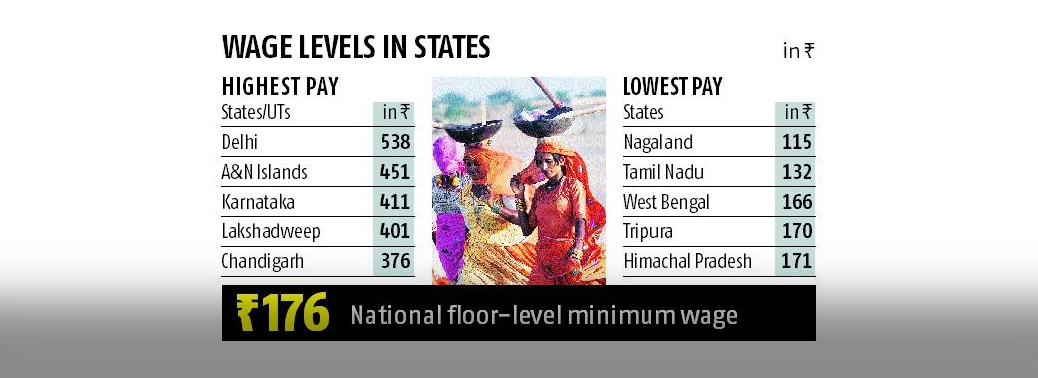
Background
- In India, labour is included in the concurrent list which implies that both the central government and state governments can make laws regarding this subject.
- The Second National Commission on Labour (2002) had recommended that existing labour laws should be classified into broader groups for easier compliance, such as
- (i) industrial relations, (ii) Wages, (iii) Social Security, (iv) Safety, and (v) welfare and working conditions.
- This would also allow for uniformity in the coverage of various labour laws that are in force.2
- The Code on Wages replaces four existing laws:
1. The Payment of Wages Act, 1936
2. The Minimum Wages Act, 1948
3. The Payment of Bonus Act, 1965 and
4. The Equal Remuneration Act, 1976.
Who Determines Minimum Wages?
- The Code provides that a National Minimum Wage may be set by the Central Government. States cannot set minimum wages lower than the national minimum wage.
- The Central Government may set separate national minimum wages for different states or regions of the country. Minimum wages must be revised by the central or state governments at an interval of Five Years.
Key Issues:
- Central government may set a national minimum wage. Further, it may set separate national minimum wages for different states or regions.
- 1. The rationale for a national minimum wage, and
- 2. Whether the central government should set one or multiple national minimum wages.
- States have to ensure that minimum wages set by them are not lower than the national minimum wage. If existing minimum wages set by states are higher than the national minimum wage, they cannot reduce the minimum wages.
- This may affect the ability of states to reduce their minimum wages if the national minimum wage is lowered.
Gender Discrimination:
- The Equal Remuneration Act, 1976, prohibits employers from discriminating in wage payments as well as recruitment of employees based on gender.
- While the Code prohibits gender discrimination on wage-related matters, it does not include provisions regarding discrimination during recruitment.
Advisory boards:
- The central government and state governments will constitute the Central Advisory Board
- and State Advisory Boards respectively.
- These boards will consist of:
- 1. Employers,
- 2. Employees in equal number as the employers, and
- 3. Independent Persons (Not Exceeding One Third of the Total Members of the Board).
- They will advise the central or state governments on issues such as setting and revision of minimum wages and increasing employment opportunities for women, among others.
Advantages of A National Minimum Wage:
- National minimum wage is to ensure a uniform standard of living across the country.
- The introduction of a national minimum wage may help reduce these differences and provide a basic standard of living for all employees across the country.
Disadvantages of A National Minimum Wage:
- It may be argued that the ability of state governments to adjust minimum wage levels may be affected, if the central government sets a national minimum wage.
- These adjustments may be required for variations, across the country, in costs of living such as prices of essential goods and housing.
- The Code does not provide for consultation between the central and state governments while determining the national minimum wage.
NATIONAL COMMON MOBILITY CARD
03, Jul 2019
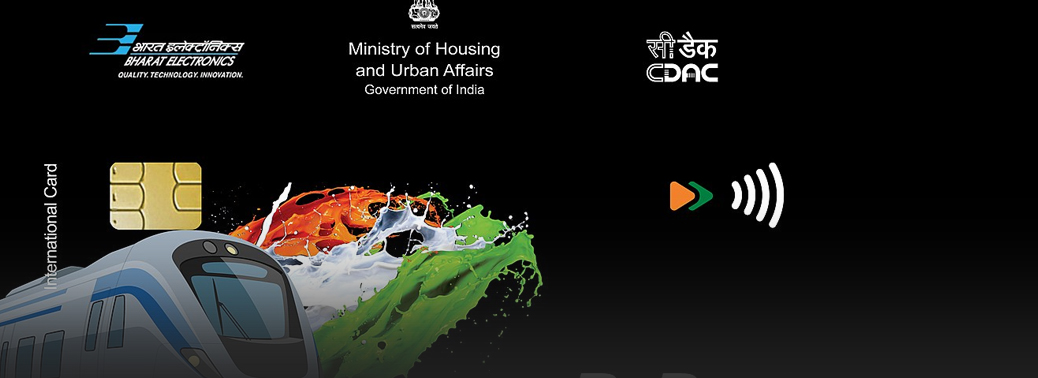
Why in News?
- National Common Mobility Card (NCMC) – One Nation, One Card for transport mobility is an initiative of the Ministry of Housing and Urban Affairs to enable seamless travel by different metros and other transport systems across the country besides retail shopping and purchases.
Highlights:
- The Indigenous Automatic Fare Collection System based on One Nation One Card Model is the first of its kind in India.
- These are bank issued cards on Debit/Credit/Prepaid card product platform.
- The customer may use this single card for payments across all segments including metro, bus, suburban railways, toll, parking, smart city and retail.
- The stored value on card supports offline transaction across all travel needs with minimal financial risk to involved stakeholders. The service area feature of this card supports operator specific applications e.g. monthly passes, season tickets etc.
Benefits of NCMC:
- NCMC Ecosystem offers the value proposition for customers as they need not to carry multiple cards for different usage. Further, the super quick contactless transactions will improve the seamless experience.
- For operators, NCMC ecosystem brings common standards for implementation without vendor lock-in.
- This will also help in higher digital payments penetration, savings on closed loop card life cycle management cost and reduced operating cost. The rich data insights may be used by operators for business intelligence leading to efficient operation.
- With NCMC Ecosystem, Banks will get an access to segments which are highly driven by cash but stickiness in nature. NCMC Ecosystem will further help government in digitization of low value payments and reduced cost for the entire ecosystem.
CHILD LABOUR
02, Jul 2019

Context:
- Instances of child labour detected during inspections have reduced successively from 2014 to 2018, figures presented by the government in Lok Sabha show.
- Child labour cases: trend shows decline, govt says will eradicate it
Constitution on Child Labour:
- The Indian Constitution ensures the right of all children (6-14 years) to free and compulsory education and prohibits their employment in hazardous occupations; and promotes policies protecting children from exploitation
Laws Prohibiting Child Labour:
- The Child Labour Act was amended in 2016 and the amendment provides for complete prohibition of work or employment of children below age 14 in any occupation and process and prohibition of adolescents in the age group 14-18 in hazardous occupations and processes.
- The Amendment Act also provides for strict punishment of employers for violation of the Act and has made the offence cognisable.
National Child Labour Project (NCLP)
- Under the scheme, children aged 9-14 are rescued/withdrawn from work and enrolled in NCLP Special Training Centres before being mainstreamed into the formal education system. Children aged 5-8 are directly linked to the formal education system through close coordination with the Sarva Shiksha Abhiyan
What type of Works:
- Engaged in manual work, in domestic work in family homes, in rural labour in the agricultural sector including cotton growing, at glass, match box and brass and lock-making factories, in embroidery, rag-picking, beedi rolling, in the carpet-making industry, in mining and stone quarrying, brick kilns and tea gardens amongst others.
- Gender Specific Work girls performing more domestic and home-based work, boys are more often employed in wage labour.
Factors which lead to Child Labour:
- It is a multi-dimensional problem that involves various reasons contributing to it in a variety of ways. continued poverty, illiteracy and ignorance of poor parents, population explosion-large family size, low family income, the tradition of making children learn the family skill, lack of political will and weak/tardy enforcement of laws, un-employment/under-employment, migration, absence of provision for universal compulsory primary education.
Employers Preference for Child Labour
- The most important objective of the employer is to earn more profit on limited expenditure
National Legislations regarding Child Labour:
- Child Labour (Prohibition and Regulation) Amendment Act, 2016
- National Policy on Child Labour (1987) which focuses upon rehabilitation of such children
- Juvenile Justice (Care and Protection of Children) Act 2015
- India has recently ratified two of the ILO (International Labour Organisation) Conventions on Child labour i.e. o Minimum Age Convention 1993 o Worst forms of Child Labour Convention 1999.
- Child Labour (Prohibition and Regulation) Amendment Act, 2016
- It amends the Child Labour (Prohibition and Regulation) Act, 1986.
- The major amendments include Extends this ban on employment of children under 14 across all sectors, o Prohibits the employment of adolescents aged 14-18 years in hazardous occupations and Introduces more stringent jail term and fines for offenders: a jail term of six months to two years and a fine upto Rs 50,000.
- The Bill adds a new category of persons called “adolescent”. An adolescent means a person between 14 and 18 years of age. The Bill prohibits employment of adolescents in hazardous occupations as specified (mines, inflammable substance and hazardous processes).
- It brings down the list of hazardous occupations from the earlier 83 to just three: mining, inflammable substances, and hazardous processes under the Factories Act, and the centre will decide which processes are hazardous.
- The Act has a provision of creating Rehabilitation Fund has also been made for the rehabilitation of children.
ILO Convention upon Child Labour:
- Recently India ratified the two fundamental ILO Conventions concerning the elimination of child labour,
- India ratify ILO Convention No.138, which requires States party to set a minimum age under which no one shall be admitted to employment or work in any occupation, except for light work and artistic performances.
- Convention No. 182. The latter calls for the prohibition and elimination of the worst forms of child labour, including slavery, forced labour and trafficking; the use of children in armed conflict; the use of a child for prostitution, pornography and in illicit activities (such as drug trafficking); and hazardous work.
Conclusion:
- The phenomenon of child labour is multi-dimensional complex problem and deep rooted in the socio-economic fabric of the society.
- There are many factors responsible to this complex problem, so a comprehensive integrated approach is required to tackle and combat child labour.
- This can be done only by bringing attitudinal change, and social awareness and rigorous campaign against the problem of child labour.
Thus, it requires honest effort and strong commitment and support from all concerned.
NATIONAL POLICY ON SAFETY, HEALTH AND ENVIRONMENT AT WORKPLACE
02, Jul 2019

Aim-
- To establish a preventive safety and health culture in the country through elimination of the incidence of work related injuries, diseases, fatalities, disasters and to enhance the well-being of employees in all the sectors of economic activity in the country.
Steps taken Legislation:
- Mines Act, 1952 has been enacted by Central Government to regulate the objectives of safety and health of workers in mines.
- In respect of factories, a comprehensive legislation in the form of the Factories Act, 1948, for taking care of the occupational safety and health aspects of the workers employed in factories registered under the Factories Act, 1948 has been enacted.
Recent tragedy:
- Meghalaya mining accident.
Way Forward:
- Reforms in labour laws are an ongoing process to update the legislative system to address the need of the hour so as to make them more effective, flexible and in sync with emerging economic and industrial scenario.
- The Ministry has taken steps for drafting four labour codes on Wages, Industrial Relations, Social Security & Welfare, and Occupation Safety, Health and Working conditions respectively, by simplifying, amalgamating and rationalizing the relevant provisions of the existing Central Labour Laws.
THE JAMMU AND KASHMIR RESERVATION (AMENDMENT) BILL, 2019
02, Jul 2019
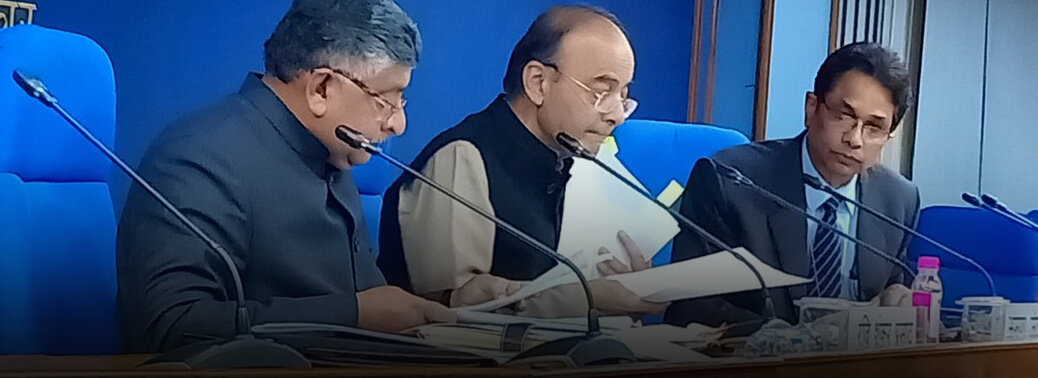
- Context: Jammu and Kashmir (Reservation) Amendment Bill, 2019 was passed by both the houses of the Parliament.
About the Bill:
- The Bill amends the Jammu and Kashmir Reservation Act, 2004.
- The Act provides for reservation in appointment and promotions in state government posts, and admission to professional institutions for certain reserved categories.
- Professional institutions include government medical colleges, dental colleges, and polytechnics.
- Extension of reservation: The Act provides for reservation in appointment and promotions in certain state government posts to persons belonging to socially and educationally backward classes.
- It defines socially and educationally backward classes to include persons living in areas adjoining the Actual Line of Control.
- The Bill amends this to include those persons living in areas adjoining the International Border, within the ambit of this reservation.
- Further, the Act states that any person who has been appointed on the basis of residence in an area adjoining the Line of Control, must serve in such areas for at least seven years.
- The Bill extends this condition to persons living in areas adjoining the International Border as well.
- Exclusion from Reservation: The Act states that any person whose annual income exceeds three lakh rupees or other amount as notified by the state government, would not be included within socially and educationally backward classes.
- However, this exclusion does not apply to persons living in areas adjoining the Actual Line of Control. The Bill states that in addition, this exclusion will not apply to persons living in areas adjoining the International Border also.
NAGALAND TO SET UP A REGISTER OF INDIGENOUS INHABITANTS
02, Jul 2019
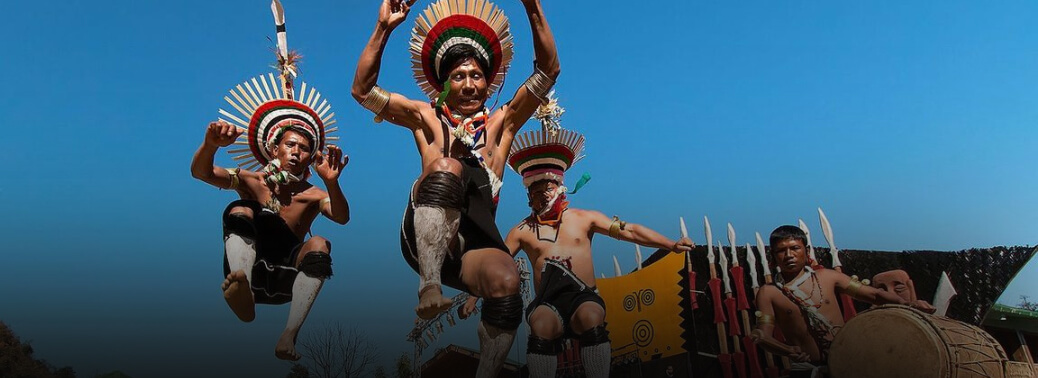
- Context: After Assam, Nagaland government has initiated a move to implement its own version of citizenship register for indigenous communities of the state.
What is Nagaland’s Initiative?
- According to a notification issued by the Government of Nagaland has decided to set up a Register of Indigenous Inhabitants of Nagaland (RIIN) with the aim of preventing fake indigenous inhabitants’ certificates.
- The RIIN will be the master list of all indigenous inhabitants of the state.
- The RIIN list will be based on “an extensive survey”.
- It will involve official records of indigenous residents from rural and (urban) wards and would be prepared under the supervision of the district administration.
- All indigenous inhabitants of the state would be issued a barcoded and numbered Indigenous Inhabitant Certificate.
- The process will be conducted across Nagaland and will be done as part of the online system of Inner Line Permit (ILP), which is already in force in Nagaland.
What is Inner Line Permit?
- Inner Line Permit (ILP) is an official travel document required by Indian citizens residing outside certain “protected” states while entering them.
- The ILP is issued by the Government of India and is obligatory for all those who reside outside the protected states.
- With the ILP, the government aims to regulate movement to certain areas located near the international border of India.
- ILP’s origin dates back to the Bengal Eastern Frontier Regulations, 1873, which protected the British Crown’s interest in tea, oil and elephant trade.
- It prohibited “British subjects” or Indians from entering into these protected areas. After Independence, in 1950, the word “British subjects” was replaced by Citizens of India and the focus of the ban on free movement was explained as a bid to protect tribal cultures in North-eastern India.
TRIFED SIGNED AN AGREEMENT TO PARTNER WITH THE e-COMMERCE GIANT’S GLOBAL SELLING PROGRAMME
01, Jul 2019
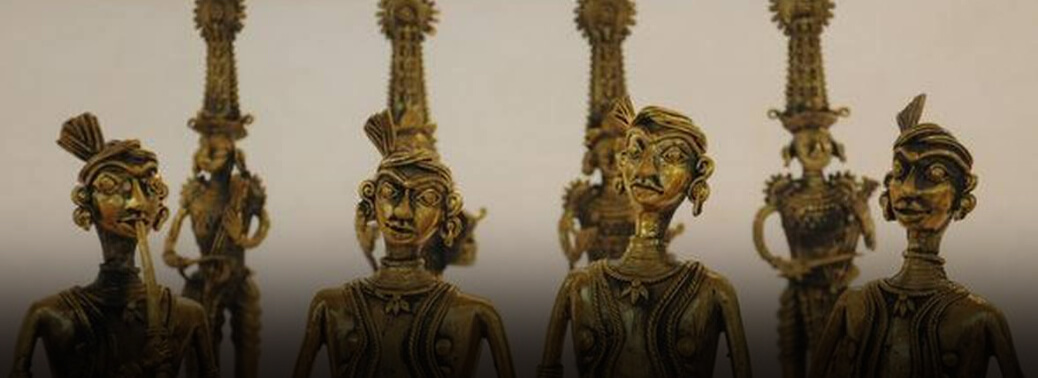
- TRIFED, a PSU under Ministry of Tribal Affairs, Government of India has been working with the main objective of promoting tribal art and craft for the benefit of tribal artisans of the country, under the scheme “Institutional Support for Development & Marketing of tribal products/produce” of the Ministry of Tribal Affairs, Government of India.
- Sale through e-commerce platforms: The various e-commerce platforms offers a huge potential for promotion and sale of tribal products. However, TRIFED is also expanding its operations through other e-commerce portals.
- Benefits-The online market has no geographic borders
Tribal Cooperative Marketing Federation (TRIFED):
- The Tribal Cooperative Marketing Development Federation of India (TRIFED) came into existence in 1987. It is a national-level apex organization functioning under the administrative control of Ministry of Tribal Affairs, Govt. of India.
- TRIFED aims to improve the livelihood of the tribal communities by creating a sustainable market and create business opportunities for them based on their cultured knowledge and traditional skills whilst ensuring fair and equitable remuneration. It involves exploring marketing possibilities for marketing of tribal products on a sustainable basis instalinko, creating brand and providing other services.
Marketing of Tribal Products:
- TRIFED has been marketing tribal products through its Retail Outlets located across country and also through exhibitions.
- TRIFED has established a chain of 35 own showrooms and 8 consignment showrooms in association with State level Organisations promoting tribal handicrafts.
EDUCATION QUALITY UPGRADATION AND INCLUSION PROGRAMME (EQUIP)
01, Jul 2019
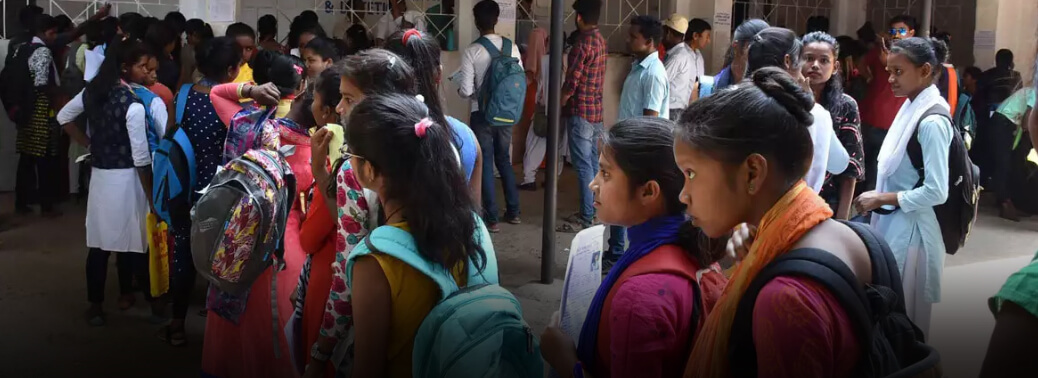
Why in News?
- In accordance with the decision of the Prime Minister for finalizing a five-year vision plan for each Ministry, the Department of Higher Education of HRD Ministry has finalized and released a five-year vision plan named Education Quality Upgradation and Inclusion Programme (EQUIP).
Education Quality Upgradation and Inclusion Programme (EQUIP):
- The Expert Groups drawn from senior academicians, administrators and industrialists, have suggested more than 50 initiatives that would transform the higher education sector completely.
- Double the Gross Enrolment Ratio (GER) in higher education and resolve the geographically and socially skewed access to higher education institutions in India
- Upgrade the quality of education to global standards
- Position at least 50 Indian institutions among the top-1000 global universities
- Introduce governance reforms in higher education for well-administered campuses
- Accreditation of all institutions as an assurance of quality
- Promote Research & Innovation ecosystems for positioning India in the Top-3 countries in the world in matters of knowledge creation
- Double the employability of the students passing out of higher education
- Harness education technology for expanding the reach and improving pedagogy
- Promote India as a global study destination
- Achieve a Quantum Increase in Investment in Higher Education.
Fortified Ration
29, Jun 2019
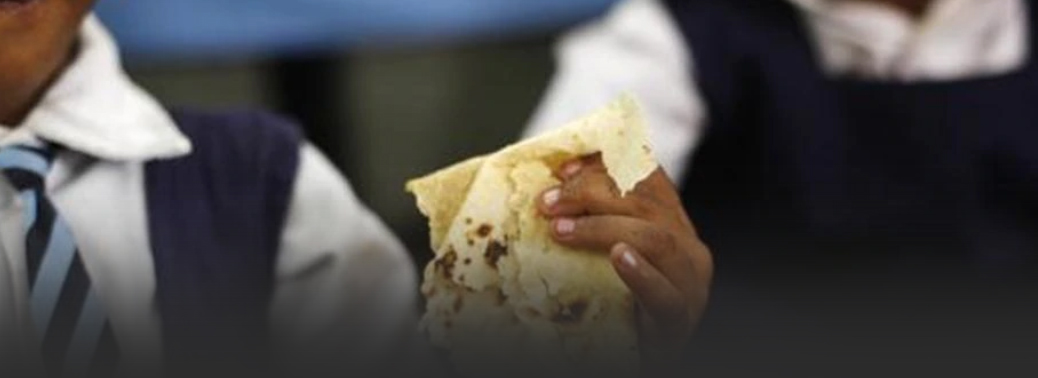
Why in News?
- Department of Food & Public Distribution has approved the “Centrally Sponsored Pilot Scheme on Fortification of Rice & its distribution through Public Distribution System”. Financial Assistance up to 90% in case of North-Eastern, Hilly and Island States and up to 75% in case of rest of the States has been extended.
Fortified Ration
- Under the scheme, milled rice will be mixed with a premix containing vitamins and minerals post-harvest.
- As per the Food Fortification Resource Centre (FFRC) of the Food Safety and Standards Authority of India (FSSAI) under Ministry of Health and Family Welfare, iron, Vitamin B12, and Folic acid are the mandatory nutrients for the fortification of rice, the kernels of which are added into the regular rice kernels in 1 to 100 ratio.
- Iron and folic acid are the two main ingredients that will be added to the food grains.
- Fortification norms will be in accordance with the specifications laid down by the Food Safety and Standards Authority of India (FSSAI).
- Further, Government of India has also advised all States/UTs especially those States/UTs that are distributing wheat flour through Public Distribution System (PDS), to distribute fortified wheat flour through PDS Fortified Edible oils is also supplied to certain states through PDS
THE SPECIAL ECONOMIC ZONES (AMENDMENT) BILL, 2019
28, Jun 2019
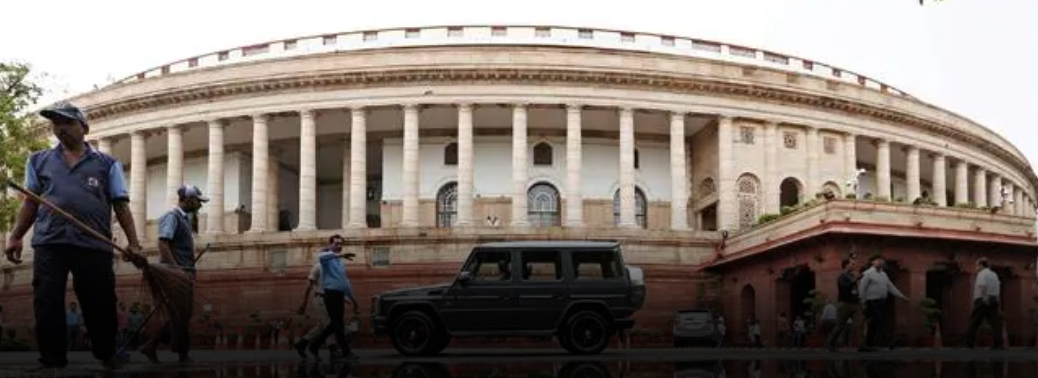
- It amends the Special Economic Zones Act, 2005 and replaces an Ordinance that was promulgated on March 2, 2019. The Act provides for the establishment, development and management of Special Economic Zones for the promotion of exports.
About:
- This policy intended to make SEZs an engine for economic growth supported by quality infrastructure complemented by an attractive fiscal package, both at the Centre and the State level, with the Minimum Possible Regulations.
- It is expected that this will trigger a large flow of foreign and domestic investment in SEZs, in infrastructure and productive capacity, leading to generation of additional economic activity and creation of employment opportunities.
The Main Objectives of the SEZ Act are:
- Generation of additional economic activity
- Promotion of exports of goods and services
- Promotion of investment from domestic and foreign sources
- Creation of employment opportunities
- Development of infrastructure facilities
The SEZ Rules provide for:
- Simplified procedures for development, operation, and maintenance of the Special Economic Zones and for setting up units and conducting business in SEZs;
- Single window clearance for setting up of an SEZ;
- Single window clearance for setting up a unit in a Special Economic Zone;
- Single Window clearance on matters relating to Central as well as State Governments;
- Simplified compliance procedures and documentation with an emphasis on self-certification.
FOOD AND NUTRITION SECURITY ANALYSIS REPORT
26, Jun 2019
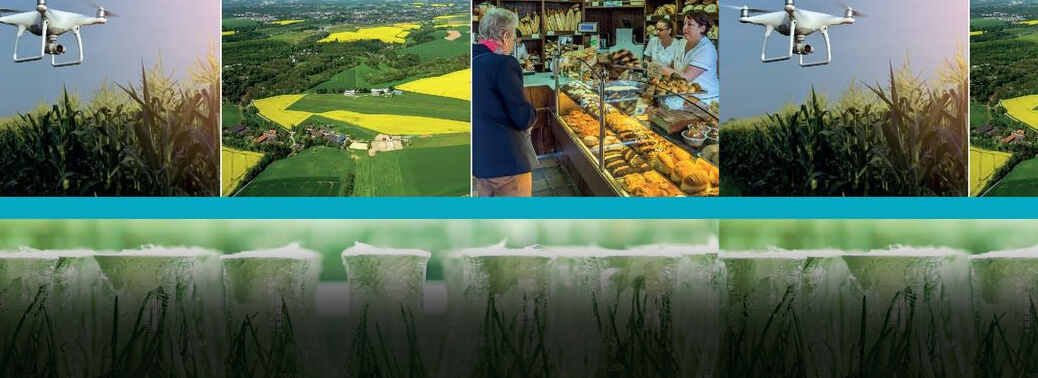
- Prepared by Ministry of Statistics and Programme Implementation & The UN World Food Programme.
- 31.4% of Indian children will be stunted by 2022
- Food grain yields have risen 33% over the last two decades, but are still only half of 2030 target yields
- The Indian farmer is producing more food grains than ever before, making the country Self Sufficient. The Consumer’s access to rice, wheat and other cereals has not increased at the same rate, due to population growth, inequality, food wastage and losses, and exports
- Average Per Capita Consumption of energy among the poorest 30% of the population is 1811 kilo calories, much lower than the norm of 2155 kilo calories per day.
- There are high rates of stunting among children in the poorest wealth quintile (51.4%), Scheduled Tribes (43.6%) and Scheduled Castes (42.5%), and children born to mothers with no education (51%).
HEALTHY STATES, PROGRESSIVE INDIA’-NITI Aayog
26, Jun 2019

- Is a Report on Health published by NITI Aayog
- Report on Rank of States and UTs’ has ranked states in three categories — larger States, smaller States and UTs “to ensure comparison among similar entities”.
- The report ranks states and Union territories innovatively on their year-on-year incremental change in health outcomes, as well as, their overall performance.
- It ranks states and union territories on their year on year incremental change in health outcomes, as well as, their overall performance with respect to each other.
- Kerala, Andhra Pradesh & Maharashtra ranked on top in terms of overall performance. Haryana, Rajasthan and Jharkhand ranked top three States in terms of annual incremental performance.
DRAFT NATIONAL EDUCATION POLICY 2019
25, Jun 2019

Context:
- The Committee for Draft National Education Policy (Chair: Dr. K. Kasturirangan) Report discussed in Parliament.
- The report proposes an education policy, which seeks to address the challenges of:
- Access
- Equity
- Quality
- Affordability, and
- Accountability faced by the current education
School Education:
Early Childhood Care and Education:
- Curriculum that doesn’t meet the developmental needs of children,
- Lack of qualified and trained teachers, and
- Substandard pedagogy
The Right to Education Act, 2009 (RTE Act):
- Currently, the RTE Act provides for free and compulsory education to all children from the age of six to 14 years. The draft Policy recommends extending the ambit of the RTE Act to include early childhood education and secondary school education.
- This would extend the coverage of the Act to all children between the ages of three to 18 years.
School Exam Reforms:
- The Committee noted that the current board examinations:
- Force students to concentrate only on a few subjects
- Do not test learning in a formative manner, and
- Cause stress among
- To track students’ progress throughout their school experience, the draft Policy proposes State Census Examinations in classes three, five and eight.
- it recommends restructuring the board examinations to test only core concepts, skills and higher order capacities.
Teacher Management:
- The Committee noted that there has been a steep rise in teacher shortage, lack of professionally qualified teachers, and deployment of teachers for non-educational purposes.
- The draft Policy recommends that teachers should be deployed with a particular school complex for at least five to seven years.
- Teachers will not be allowed to participate in any non-teaching activities (such as cooking mid-day meals or participating in vaccination campaigns) during school hours that could affect their teaching capacities.
- The Ministry of Human Resources and Development must be renamed as the Ministry of Education in order to bring focus back on education.
Financing Education:
- The Draft Policy reaffirmed the commitment of spending 6% of GDP as Public Investment in Education.
ISRO OPENS ITS LABORATORIES FOR INDIAN SCHOOL
20, Jun 2019
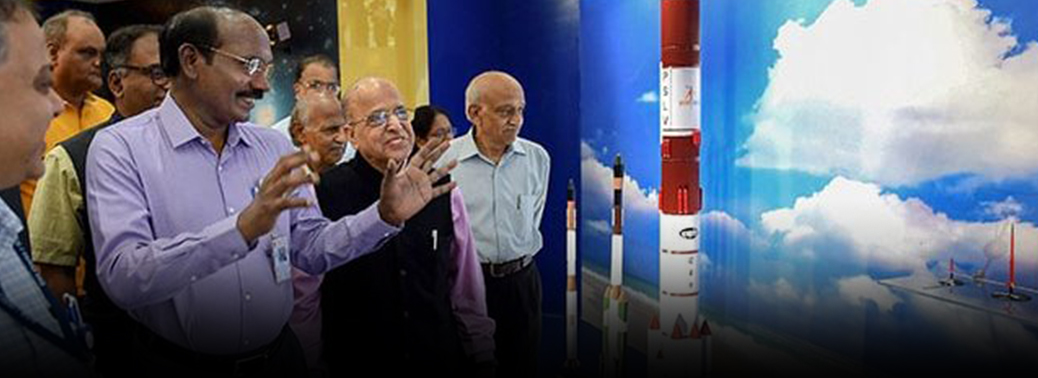
Context:
- Indian Space Research Organisation (ISRO) is an agency which has the legacy of India’s ancient knowledge and modern technology. She opened its laboratories for Indian school students to undergo two-week training from this year. First Batch 108 students drawn from all states.Union Territories completed their exposure in its laboratories in Bengaluru, Sriharikota, Thiruvananthapuram. The training module devised as part of its new Young Scientists Programme.
Background:
- Yuva Vigyanik Karyakram, YUVIKA.
- ISRO’s YUVIKA is modeled around the Indian government’s vision ‘Jai Vigyan, Jai Anusandhan’.The initiative is primarily aimed at imparting basic knowledge on Space Technology, Space Science and Space Applications to children to kindle their interest in the emerging areas of space activities. The two-week-long program would include invited talks, experience sharing by eminent scientists, facility and lab visits, exclusive sessions for discussions with experts, practical and feedback sessions.
NEW POLICY TO PROTECT INDIAN LANGUAGES
20, Jun 2019
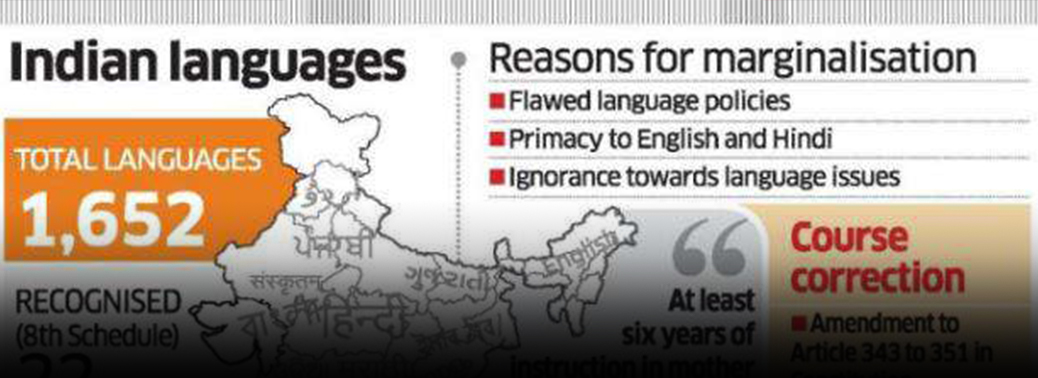
Context:
- Rashtriya Siksha Ayog has been proposed to be set up under the Chairmanship of Prime Minister.
- The member of draft New Education Policy Prof.M K Sridhar said that the new policy protects the Indian languages which are on the verge of extinction.
- The new policy will put education on the pedestal of evaluation and performance and lay emphasis on teachers’ education.
Background:
- The United Nations declared the International Mother Language Day (February 21) the founders of the Indian Constitution gave top priority to teaching in mother tongues’, enabling the child to develop its full potential.
- This concept is in total agreement with the 2017 theme of United Nations World Mother Language Day “to develop the potential of multilingual education to be acknowledged in education, administrative systems, cultural expression and cyber space”.
- In 1956 reorganisation of states in India was carried out with linguistic boundaries that had its own script. Sardar Vallabhbhai Patel, the then home minister played key role in formation and amalgamation of states based on linguistic attributes.
UDCHALO’ TO GIVE A NEW LEASE OF LIFE TO WOUNDED SOLDIERS
04, Jun 2019

Why in News:
- In a bid to make wounded soldiers, who are confined to wheelchairs, self-reliant, an initiative ‘UdChalo’ is all set to take off at the Army’s Paraplegic Rehabilitation Centre (PRC) in Punjab’s Mohali.
Details:
- ‘UdChalo’ is a travel portal, that caters for the personal travel of the military and paramilitary forces personnel by aggregating defence fares and getting exclusive discounts.
- The PRC has joined hands with UdChalo with an aim to empower the disabled military veterans.
- Purpose in life’
Paraplegic and quadraplegic veterans have found a purpose in life through ‘UdChalo’, when they interact with fellow soldiers and resolve their concerns. The initiative is unique and has given a new lease of life of these soldiers who are confined to wheelchairs. PRC provides institutionalised care to soldiers, who are wounded in military or insurgency operations and can’t adequately provide for themselves the constant medical care associated with quadriplegia and paraplegia. Currently, PRC has 31 ex-servicemen from across the country.
MANDATORY HINDI GOES OUT OF DRAFT EDUCATION POLICY
04, Jun 2019
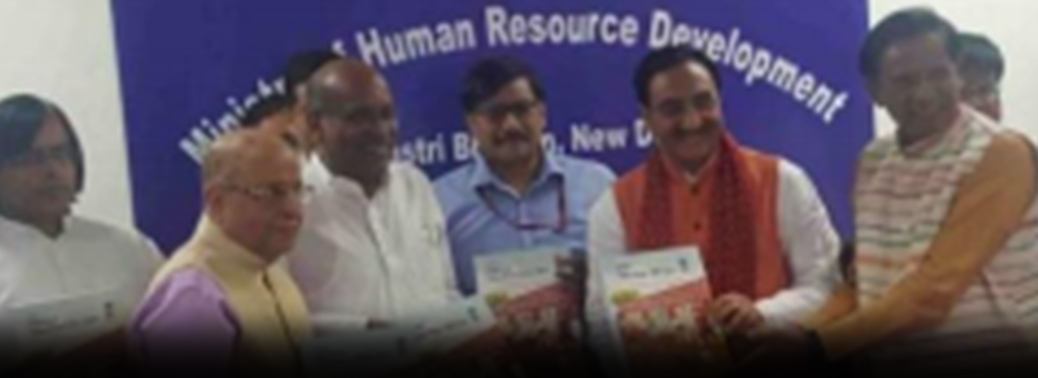
Why in News:
- The clause recommending mandatory Hindi teaching in all schools was dropped from the draft National Education Policy, after the Union government faced an intense backlash from States.
Details:
- The revised draft retains the recommendation to
introduce a three-language formula from Class 1 onwards; it simply removes the clause stipulating the specific languages that students must choose. - There is substantial space devoted to recognising the diversity and multilingual nature of the country, and giving autonomy to the States.
- The Centre went into damage control mode, with senior Cabinet Ministers tweeting reassurances that Hindi would not be imposed without further consultations.
- Finally, the revised draft was uploaded by the Human Resource Development Ministry.
- In keeping with the principle of flexibility, students who wish to change one or more of the three languages they are studying may do so in Grade 6 or Grade 7, so long as they are able to still demonstrate proficiency in three languages (one language at the literature level) in their modular Board Examinations some time during secondary school.”
NEW INCOME TAX RULE FOR SENIOR CITIZENS
25, May 2019

Why in News:
- The Central Board of Direct Taxes (CBDT) has revised the rules applicable in case of filing of Form 15 H, allowing Section 87A rebate.
What is Form 15 H?
- The Form 15 H is a declaration under section 197A (1C) of the Income Tax Act.
- This is to be made by an individual who is of the age of 60 years or more claiming certain incomes without deduction of tax, i.e. TDS.
- The form needs to be submitted to any institution such as a bank.
- It deducts TDS if interest income exceeds Rs 50,000 a year (Rs 40,000 for non-senior citizens).
What is Section 87A?
- Under Section 87A of the Income Tax Act, an assessee, being an individual resident in India, whose total income does not exceed Rs 5 lakh, shall be entitled to a deduction.
- This will be a deduction from the amount of income-tax (as before allowing the deductions) on the total income with which s/he is chargeable for any assessment year.
- The deduction will be an amount equal to 100% of such income-tax or an amount of Rs 12,500, whichever is less.
What is the new rule?
- CBDT has notified that the Form 15H declaration will cover the Section 87A rebate. The new rule is applicable for the financial year 2019-20.
- The new rule will benefit those senior citizens whose tax liability will be Nil after allowing rebate under Section 87A.
- This means that if they are able to keep their total taxable income within Rs 5 lakh, they will face no tax and will be eligible to file Form 15H.
- Those who have interest income as the only source of income will stand to benefit from this change. The new rule will help reduce the running around for tax refund for those who now become eligible for submission of Form 15 H.
CBDT
- The Central Board of Direct Taxes is a statutory authority functioning under the Central Board of Revenue Act, 1963. CBDT consists of a Chairman and six Members.
- The officials of the Board in their ex-officio capacity also function as a Division of the Ministry dealing with matters relating to levy and collection of direct taxes.
HIGHER EDUCATION TO GET A BOOST WITH ₹1.5 LAKH CRORE ACTION PLAN
25, May 2019

Why in News:
- The Ministry of Human Resource Development plans to launch an ambitious ₹1.5 lakh crore action plan to improve the quality and accessibility of higher education over the next five years.
Background: / EQUIP:
- EQUIP stands for the Education Quality Upgradation and Inclusion Programme and was crafted by ten committees led by experts within the government
- The ten committees have drafted strategy to improve access to higher education, especially for underserved communities; improve the gross enrolment ration; improve teaching and learning processes; build educational infrastructure; improve the
- quality of research and innovation; use technology and online learning tools; and work on accreditation systems, governance structures and financing.
What were the recommendations of Subramaniam committee?
- T.S.R.Subramaniam committee was formed in the year 2015 and the committee submitted following recommendations.
- Indian Education Service (IES) should be established as an all India service with the cadre controlling authority vesting Resource HRD ministry.
- The outlay on education should be raised to at least 6% of GDP without further loss of time. Teacher Entrance Tests (TET) should be made compulsory for recruitment of all teachers.
- Compulsory licensing for teachers in government and private schools should be made mandatory.
- Pre-school education for children in the age group of 4 to 5 years should be declared as a right. The no detention policy must be continued for young children until completion of class V when the child will be 11 years old.
- A National Level Test open to every student who has completed class XII from any School Board should be designed.
- The mid-day meal (MDM) program should now be extended to cover students of secondary schools. The University Grants Commission (UGC) needs to be made leaner and thinner and given the role of disbursal of scholarships and fellowships.
- Top 200 foreign universities should be allowed to open campuses in India.
What are the issues with these recommendations?
- The original report recommended that political parties to be banned from appointing Vice Chancellors for universities.
- A radical reform it had recommended is separate bureaucratic framework for HRD functions.
- An autonomous body to handle the selection of teachers for government schools and colleges was also recommended.
- These recommendations may not have been new, but nearly all of them broke with the dogmas of the past.
What is the purpose of new committee?
- The government is not satisfied with the reports of TSR Subramanian Committee.
- Fresh and comprehensive reports are the main objectives for the government to announce the new committee. The new committee will be headed by ISRO chief K Kasturirangan.
- The new committee will consider inputs from the Subramanian committee reports.
What should be done?
- The government’s intention on reforming education would be successful only when it is ready to accept the recommendations and implement them.
NATIONAL INSTITUTE OF NUTRITION STANDS BY ITS REPORT ON NO ONION, GARLIC IN ITS MEALS
16, May 2019
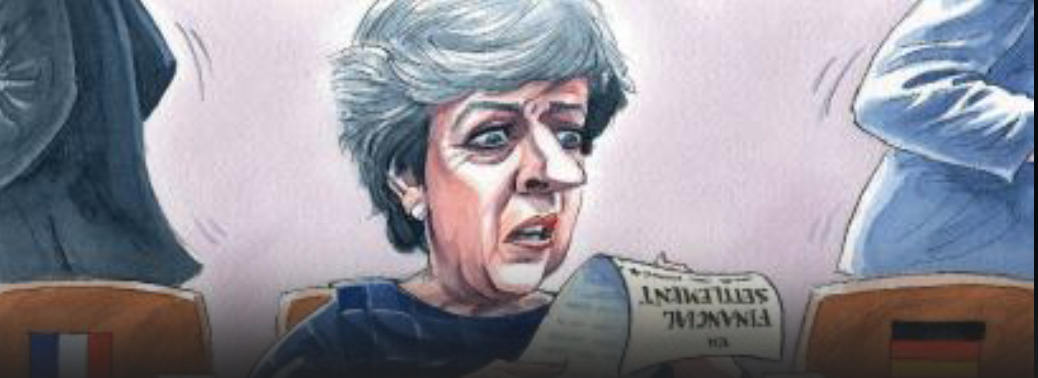
Why in News:
-
The National Institute of Nutrition (NIN) said on Tuesday that it stands by its findings certifying mid- day meals without onion
and garlic provided by the Akshaya Patra Foundation (APF) in karnataka schools as compliant with nutritional norms laid down by the State government.
Background:
NIN: / Aim:
- To achieve optimal nutrition status that is conducive for mental, physical and social well- being of all Indians.
Provisions:
- Periodic Assessment of Nutrient intakes, Health and Nutrition status of the population for optimal health, and assist the Government and regulatory bodies in policy making.
- Establishment of Dietary Reference Intake values, Recommended Dietary allowances, Dietary guidelines for Indian population; and assessment of Nutrient Composition of Foods. Identify various nutrition deficiency disorders prevalent among different segments of the population.
- Conduct operational research for planning and implementation of National Nutrition Programmes in the country. Conduct surveys and study the risk factors of NCDs through multidisciplinary research.
- Conduct innovative basic science Research on nutrient interactions, requirements, responses etc. Identify and study food and environmental safety challenges for providing scientific input for policy and regulation. Development of human resource in nutrition and also provide evidence-based nutrition knowledge to the community.
- Akshaya Patra is the world’s largest (not-for-profit run) Mid-Day Meal Programme serving wholesome food every school day to over 1.76 million children from 14,702 schools across 12 states in India.
Akshaya Patra Foundation:
VERY FEW TAKERS FOR RTE QUOTA SEATS
15, May 2019
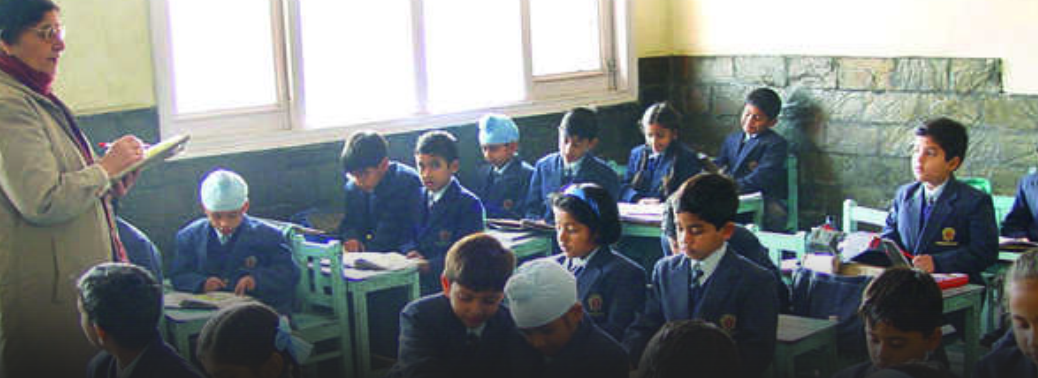
- After the State government amended the rules to prioritise government and aided schools. Admissions for only 28% of the total 7,346 seats allotted during the first round under the reservation quota have been completed.
- The number of seats and applications, too, have declined. This trend is the result of new rules which mandate that a child can be admitted to a private school under the quota only if there is no government or aided school in the locality.
Right to Education (RTE) Act:
- The Right of Children to Free and Compulsory Education (RTE) Act, 2009
- This act is an embodiment of Article 21-A, which says that every child has a right to full time elementary education of satisfactory and equitable quality in a formal school which satisfies certain essential norms and standards.
- Article 21-A and the RTE Act came into effect on 1 April 2010
- It is seen as the most historic development in universalisation of elementary education in the country.
- It implies that every child in the age group of 6 to 14 years has Right to elementary education. They are entitled for free and compulsory education.
Salient features:
- The RTE Act provides for the right of children to free and compulsory education till completion of elementary education in a neighbourhood school.
- It clarifies that ‘compulsory education’ means obligation of the appropriate government to provide free elementary education and ensure compulsory admission, attendance and completion of elementary education to every child in the six to fourteen age group. ‘Free’ means that no child shall be liable to pay any kind of fee or charges or expenses which may prevent him or her from pursuing and completing elementary education.
- It makes provisions for a non-admitted child to be admitted to an age appropriate class.
- It specifies the duties and responsibilities of appropriate Governments, local authority and parents in providing free and compulsory education, and sharing of financial and other responsibilities between the Central and State Governments.
- It lays down the norms and standards relating inter alia to Pupil Teacher Ratios (PTRs), buildings and infrastructure, school-working days, teacher-working hours.
- It provides for rational deployment of teachers by ensuring that the specified pupil teacher ratio is maintained for each school, rather than just as an average for the State or District or Block, thus ensuring that there is no urban-rural imbalance in teacher postings. It also provides for prohibition of deployment of teachers for non-educational work, other than decennial census, elections to local authority, state legislatures and parliament, and disaster relief.
- It provides for appointment of appropriately trained teachers, i.e. teachers with the requisite entry and academic qualifications.
The Sarva Shiksha Abhiyan (SSA) is the main vehicle for implementation of the RTE Act. It is one of the largest programmes of its kind in the world. - It is primarily funded from central budget and it covers the whole country.
Under SSA, special attention has been given to urban deprived children, children affected by periodic migration and children living in remote and scattered habitations. Attempts have also been made to reach out to children suffering from autism. It involves their identification, preparation of individualized Education Plan, teacher training on Autism and therapeutic support.
SUBSTANTIVE EQUALITY: ON SC/ST GOVERNMENT STAFF
13, May 2019
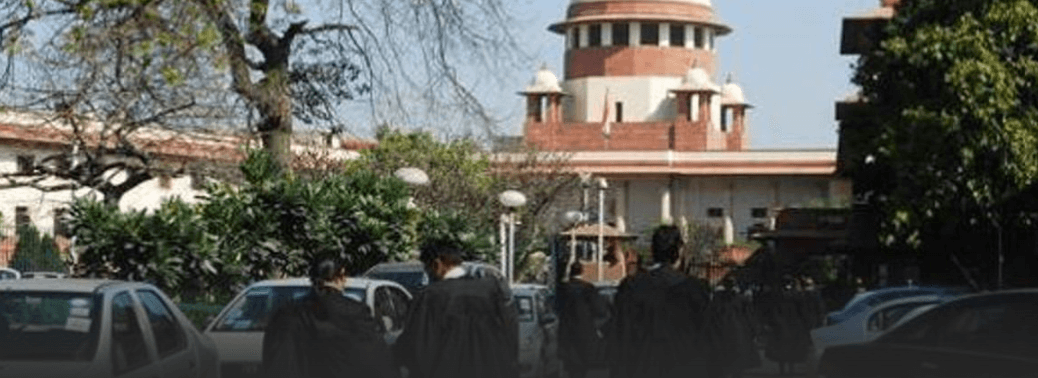
why in news:
- The Supreme Court on Friday upheld the validity of a new Karnataka law granting reservation in promotions to Scheduled Caste and Scheduled Tribe (SC/ST) employees.
Background: / Various judgements related to SC/ST reservations in promotion:
-
Indhira Sawhney Case (1992):
- In Indira Sawhney case, where it was held that once SCs and STs were part of the Presidential List under Articles 341 and 342 of the Constitution, and there was no need to prove backwardness.
- Hence, SC ruled that States need not collect quantifiable data on the backwardness of SC/ST for giving quota in job promotion to SC/ST employees.
- It had not made any changes to application of ‘creamy layer’ principle in reservation in promotion of SC/STs.
2. Nagaraj Case (2006):
- The Supreme Court had held that the state was not bound to provide reservation in promotions to SCs/STs.
- But in case any state wished to make such a provision, it was required to –
- Collect quantifiable data on backwardness of the
- Prove its inadequate representation in public
- Show no compromise on efficiency of
- Additionally, the state was also required to ensure that the reservation does not breach the 50% ceiling.
- The ruling also said that the ‘creamy layer’ concept applies to SCs and STs for promotions in government jobs.
3. Jarnail Singh Case (2018):
- The court set aside the requirement to collect quantifiable data that was stipulated by its 2006 verdict in M. Nagaraj v. Union of India as it ignored the reasoning of a nine-judge bench in Indra Sawhney (1992) that any discussion on creamy layer “has no relevance” in the context of SC/STs.
- The court has taken more than a decade to correct an anomaly in the Nagaraj case which brought in a creamy layer filter for promotions for SC/ST employees. This resulted in thousands of employees being denied their due promotions.
Way Ahead:
- The court said special measures need to be adopted for considering the claims of SCs and STs in order to bring them to a level playing field. Centuries of discrimination and prejudice suffered by the SCs and STs in a feudal, caste-oriented societal structure poses real barriers of access to opportunity, it pointed out.






